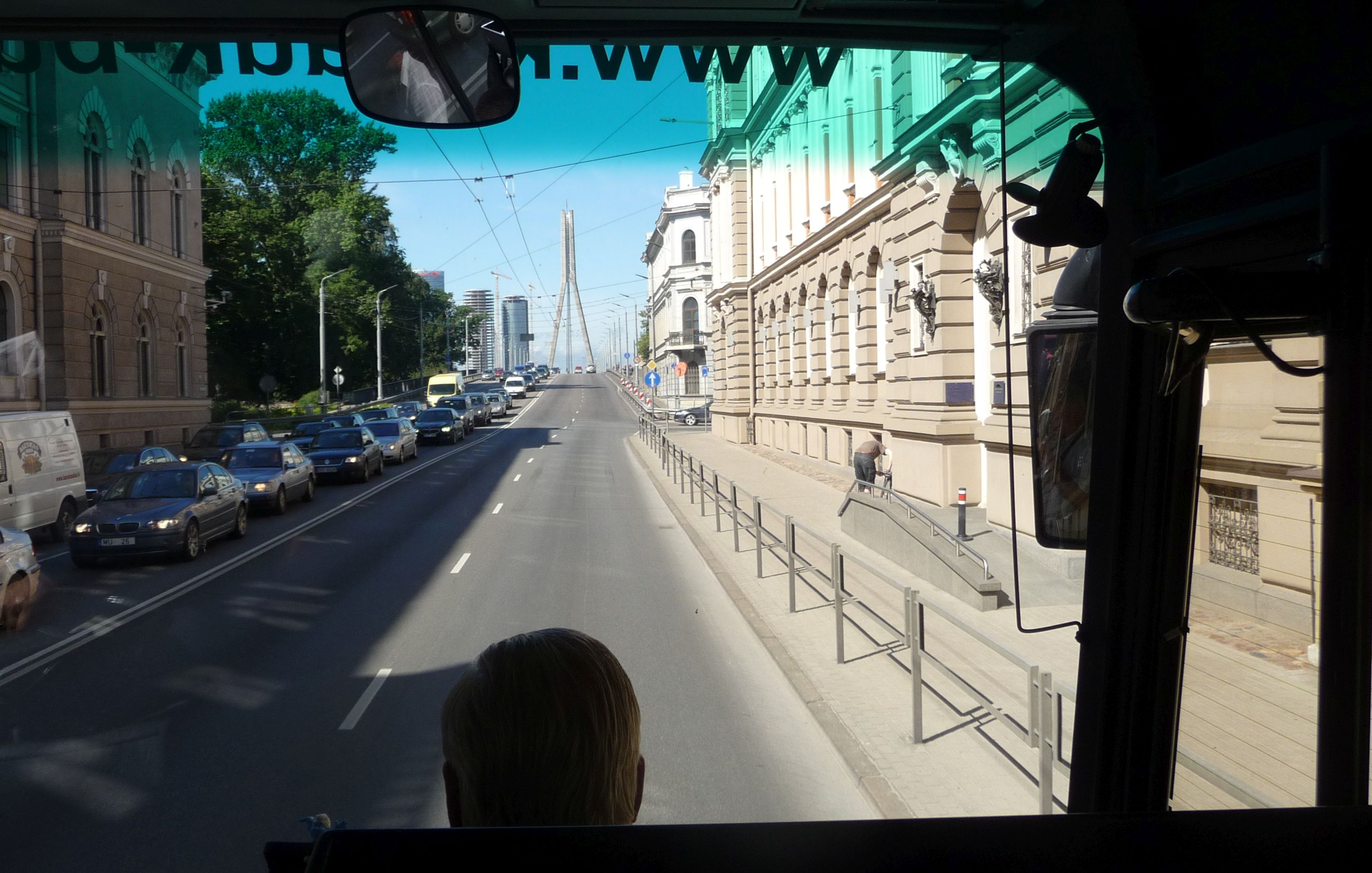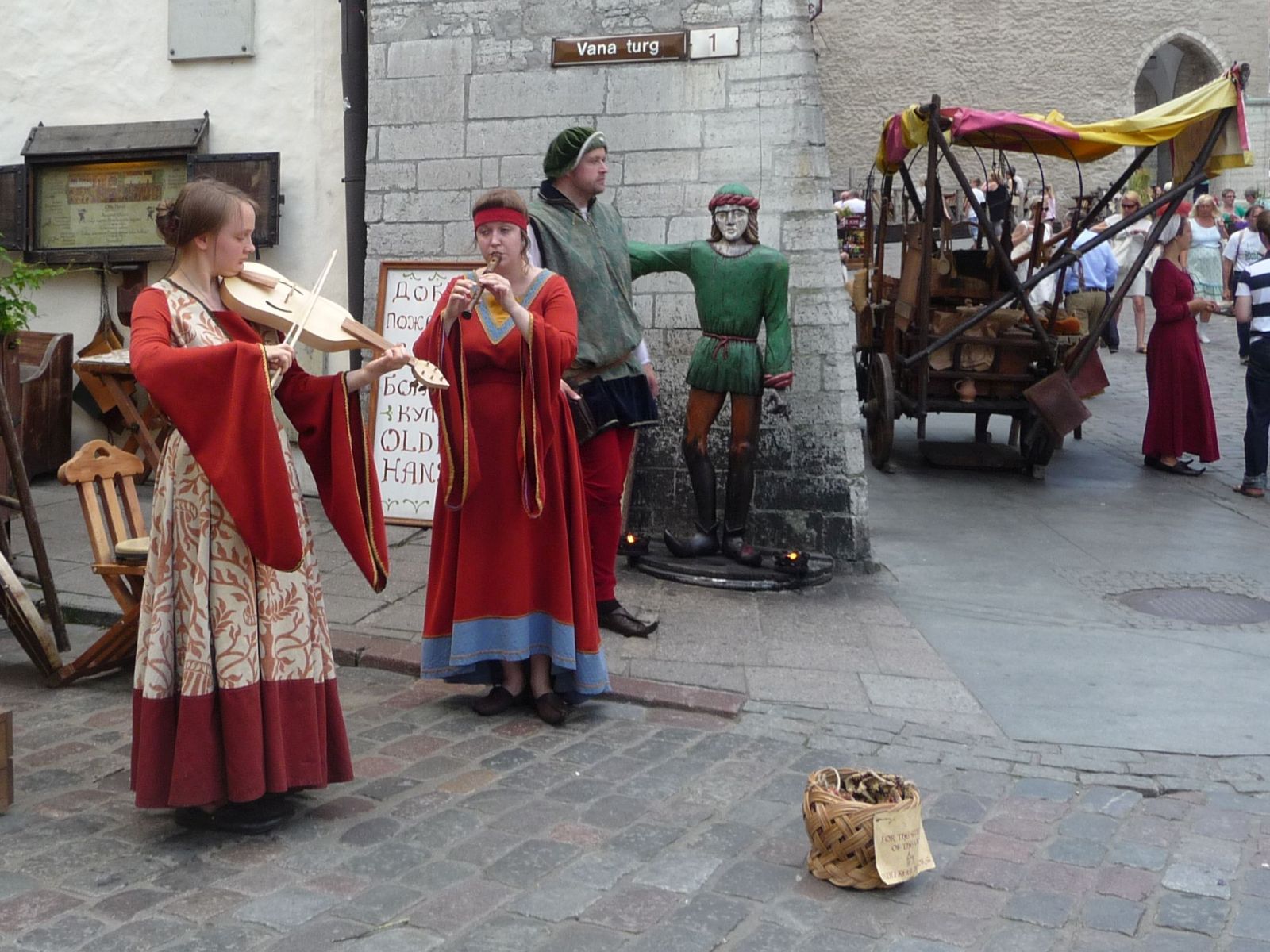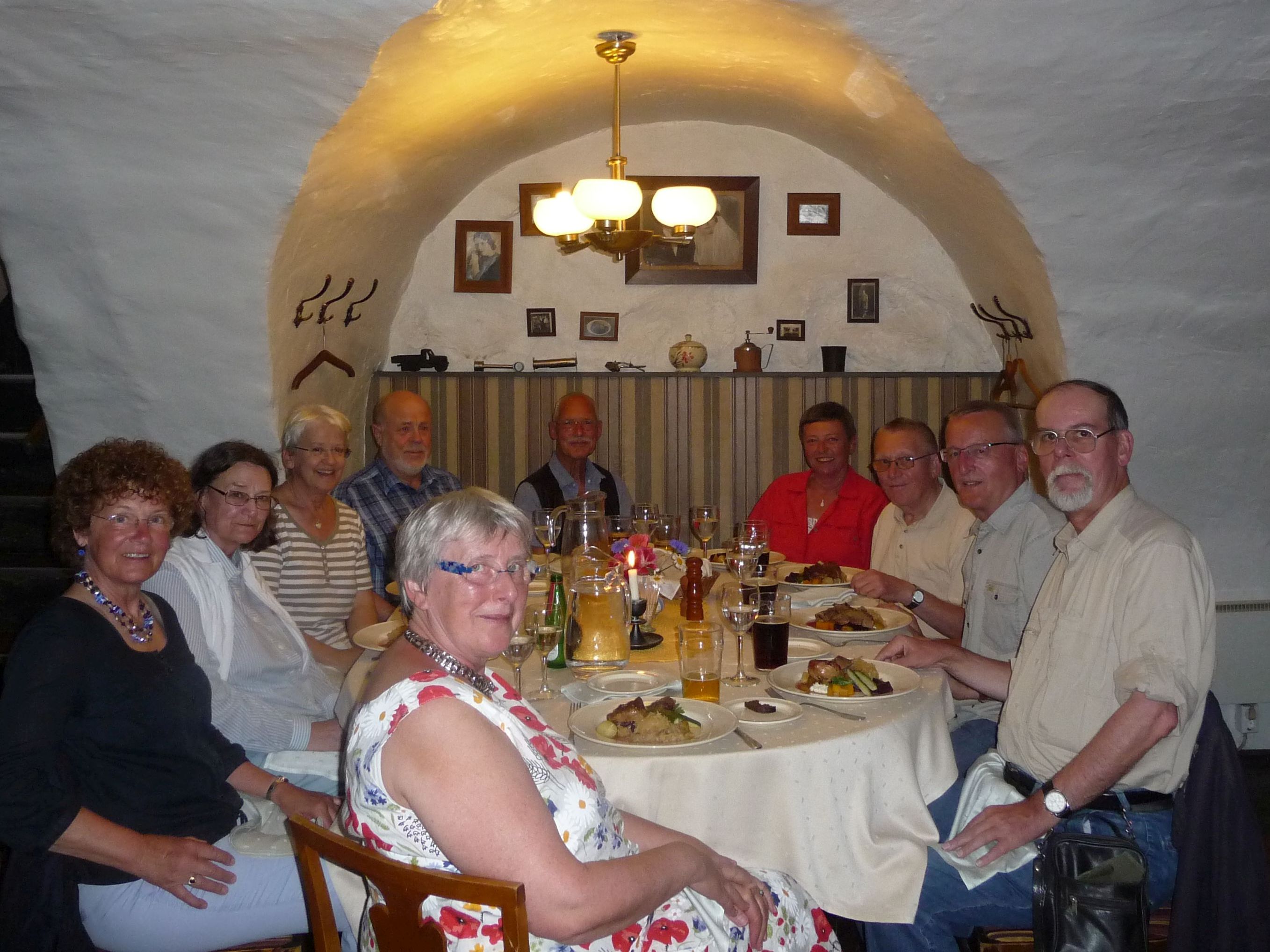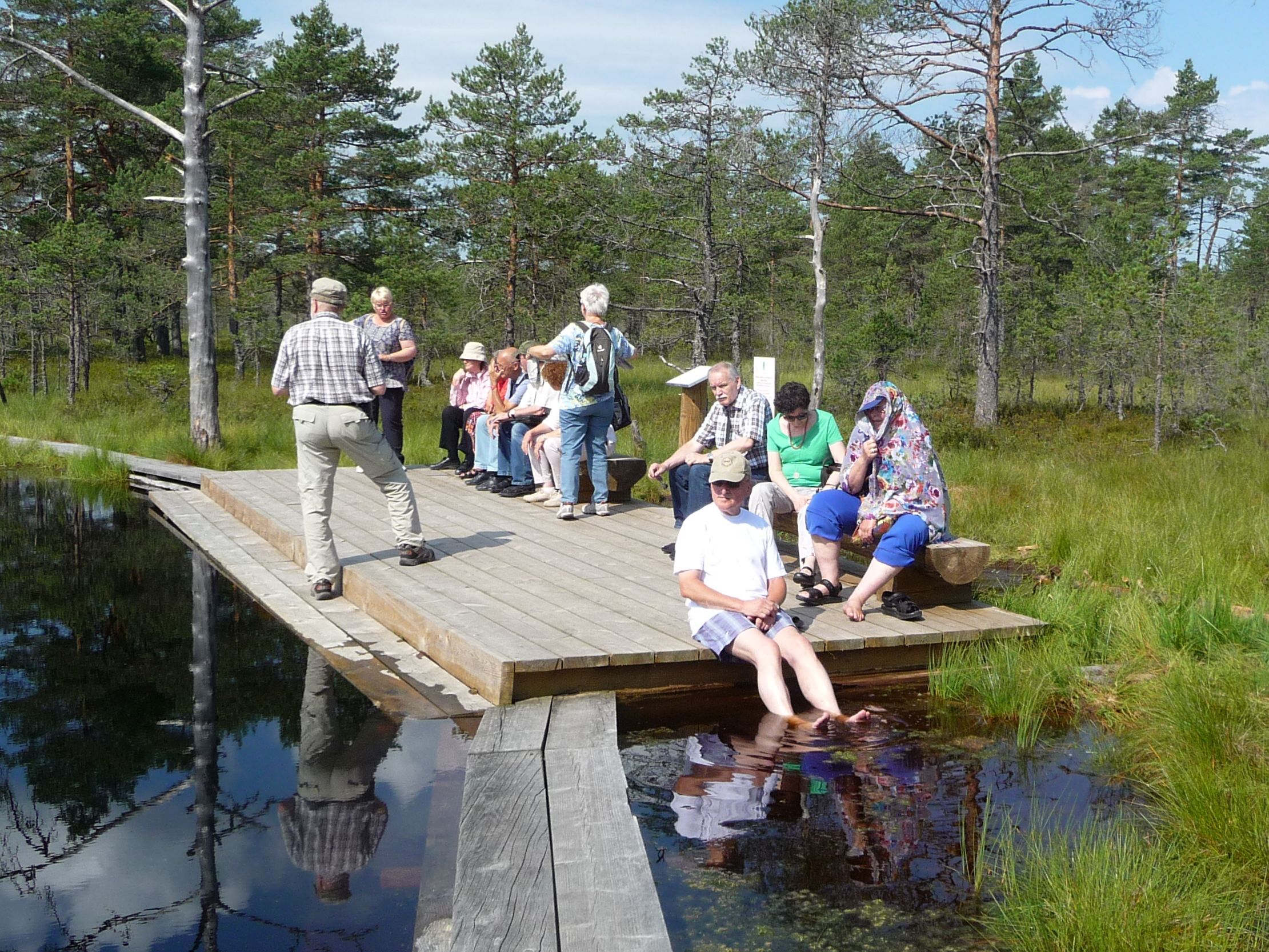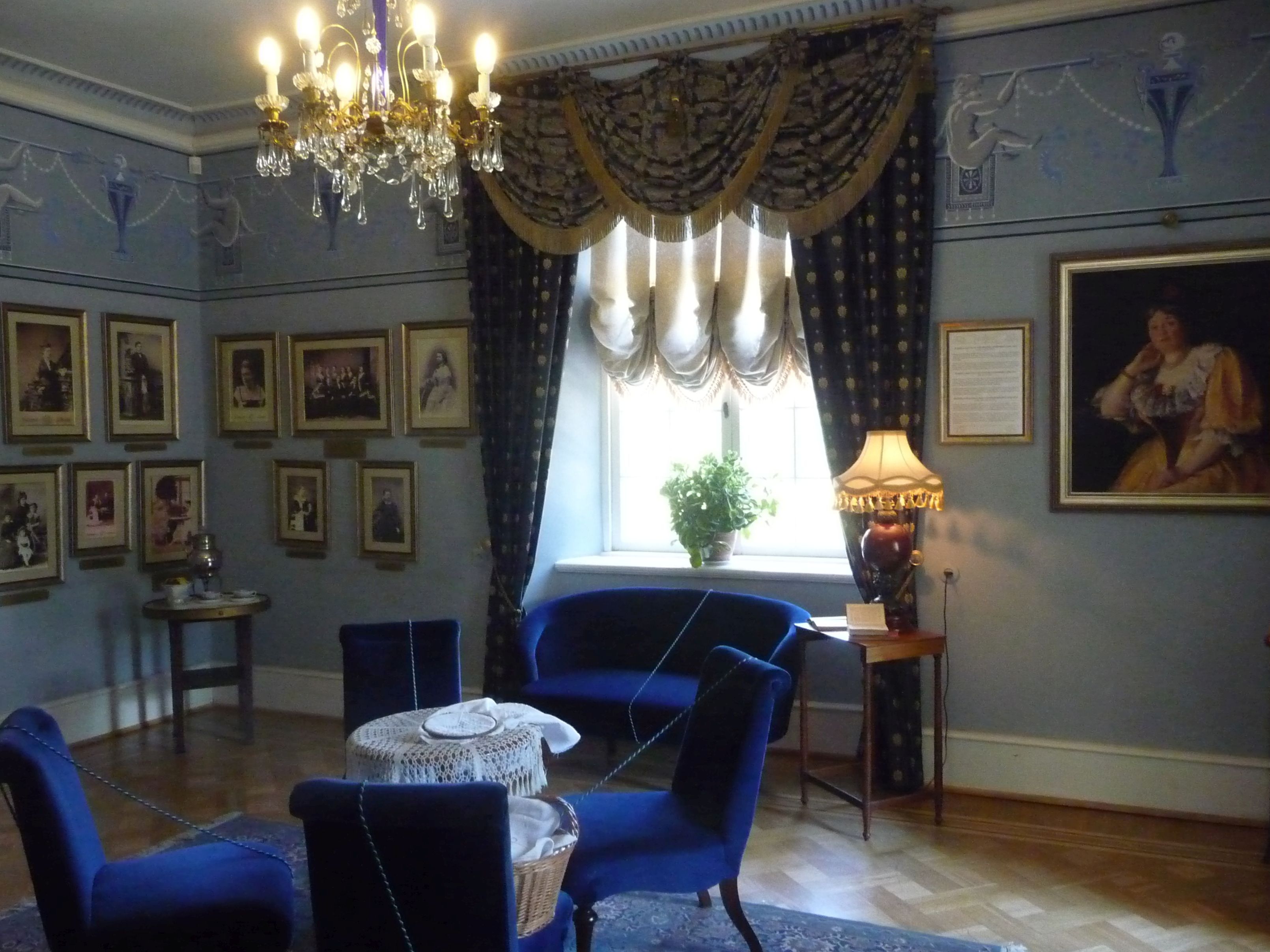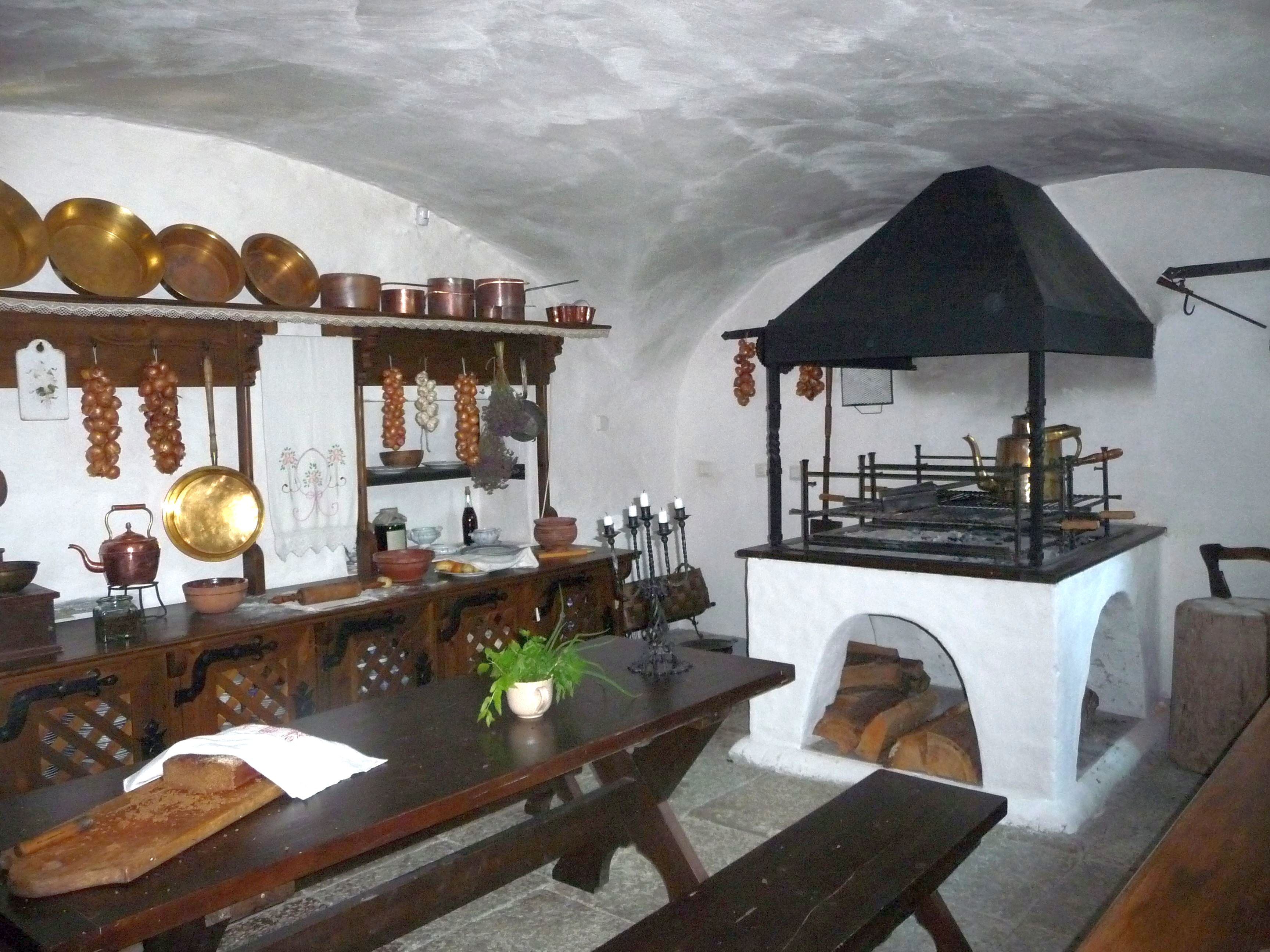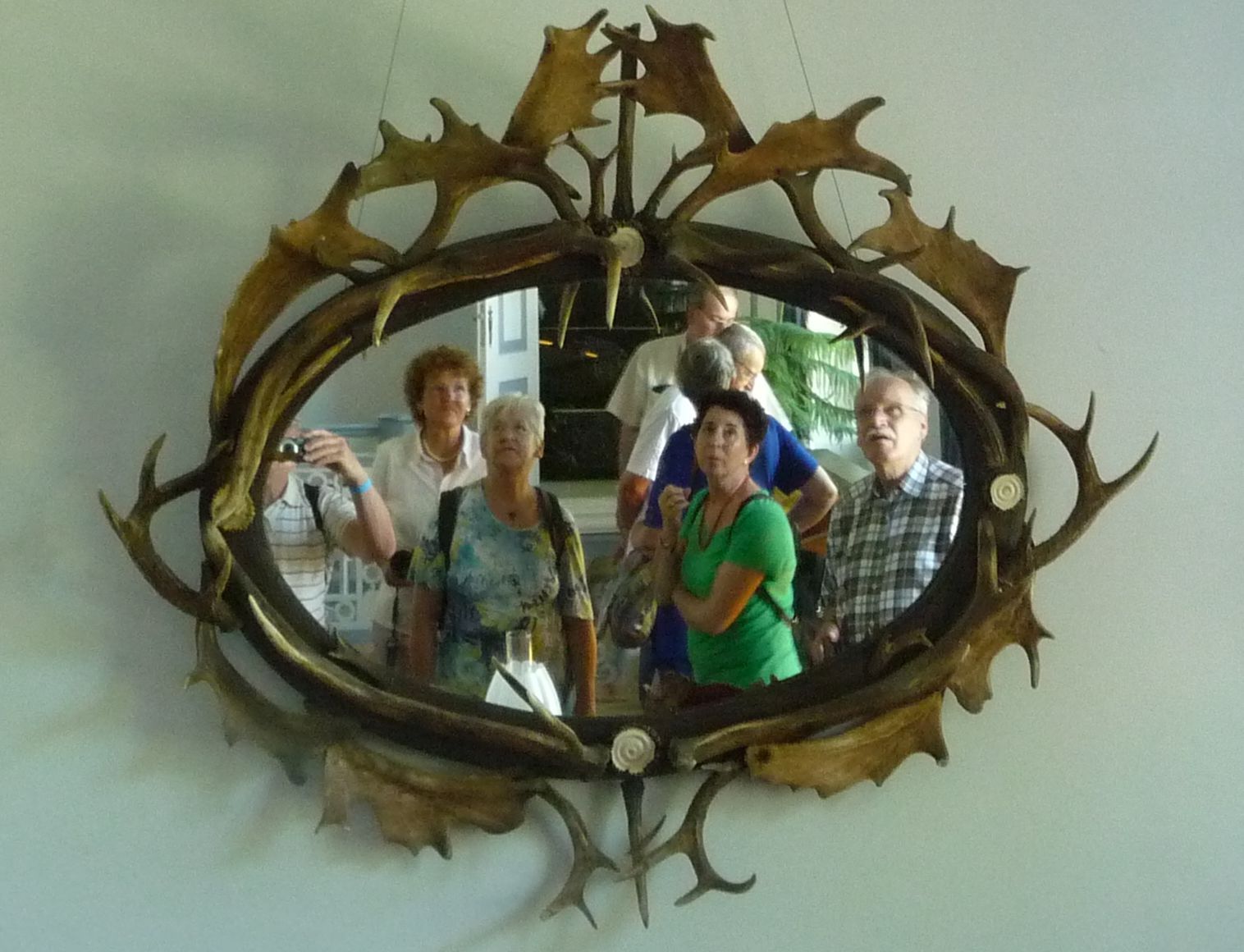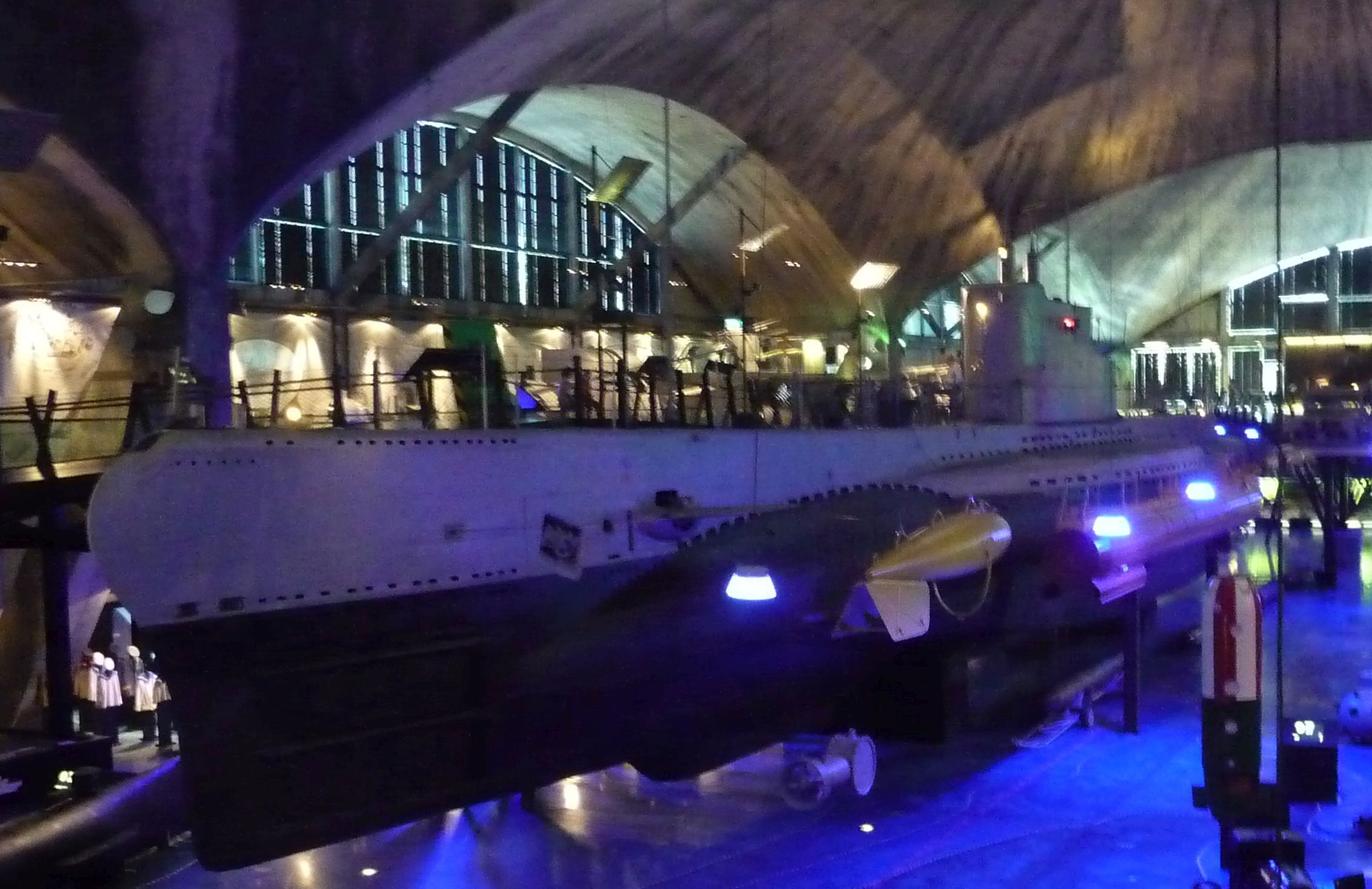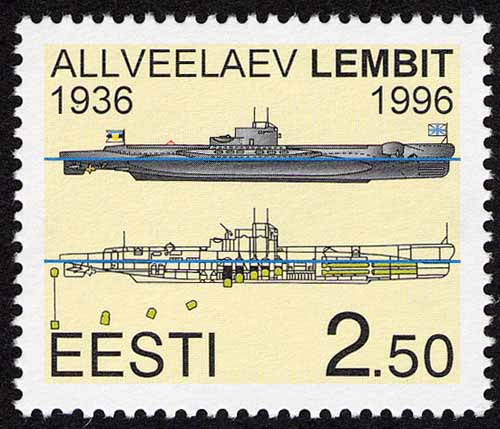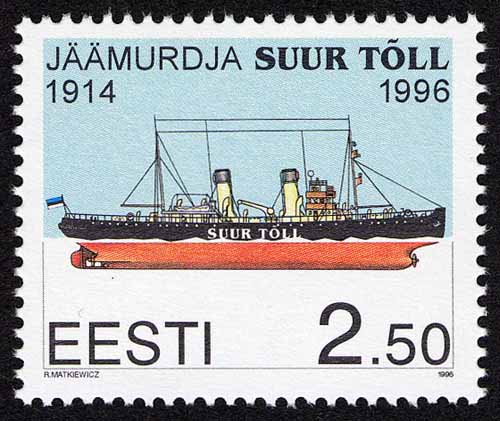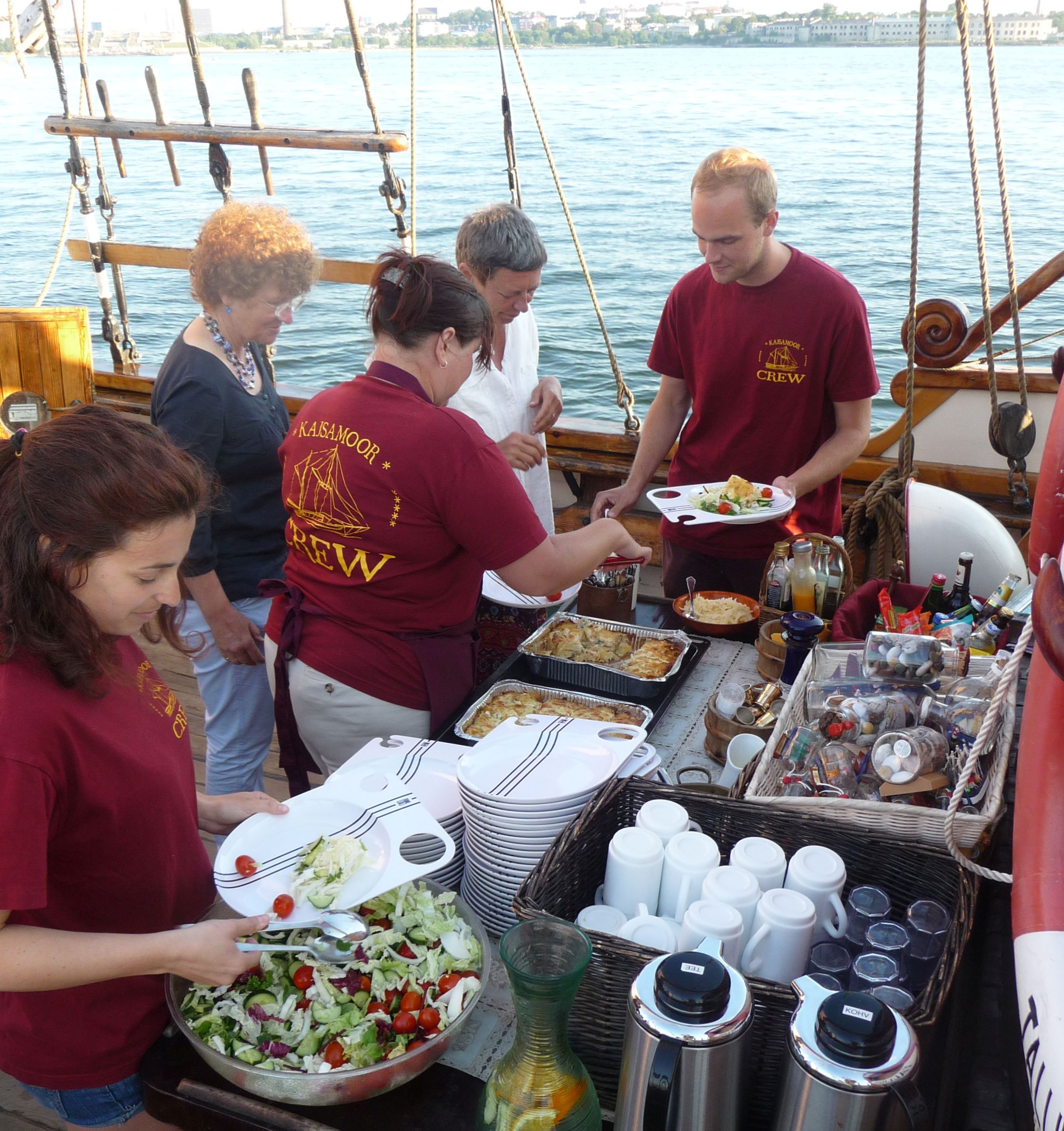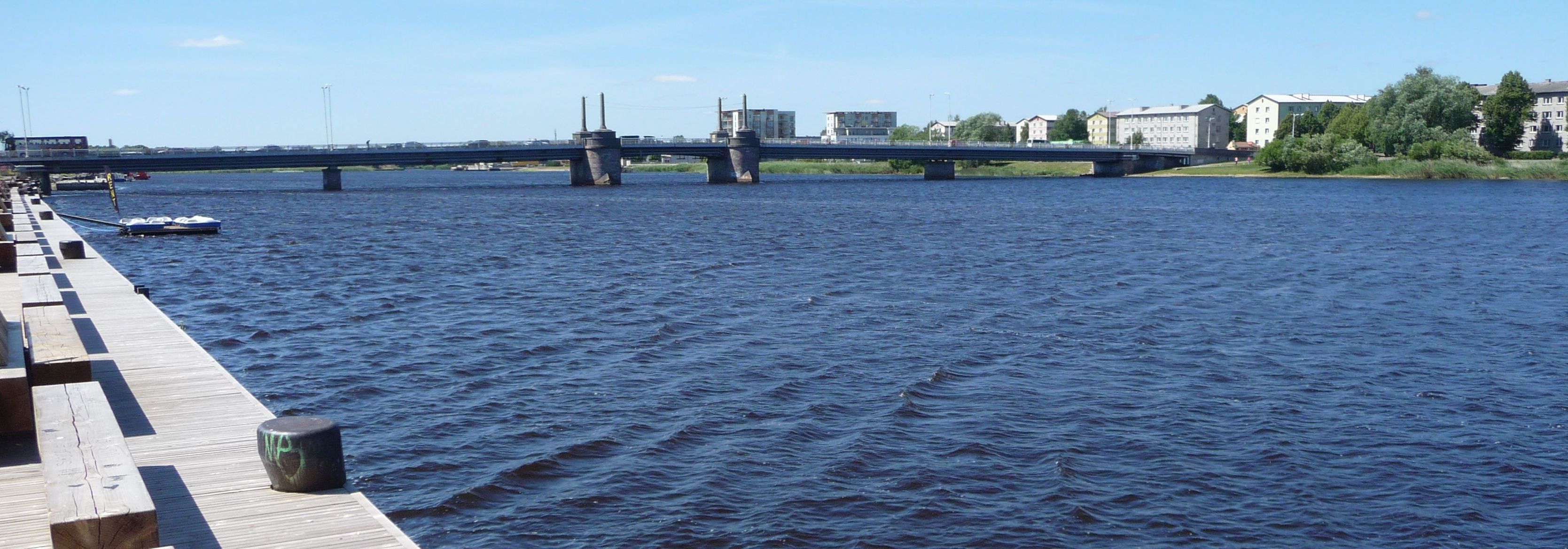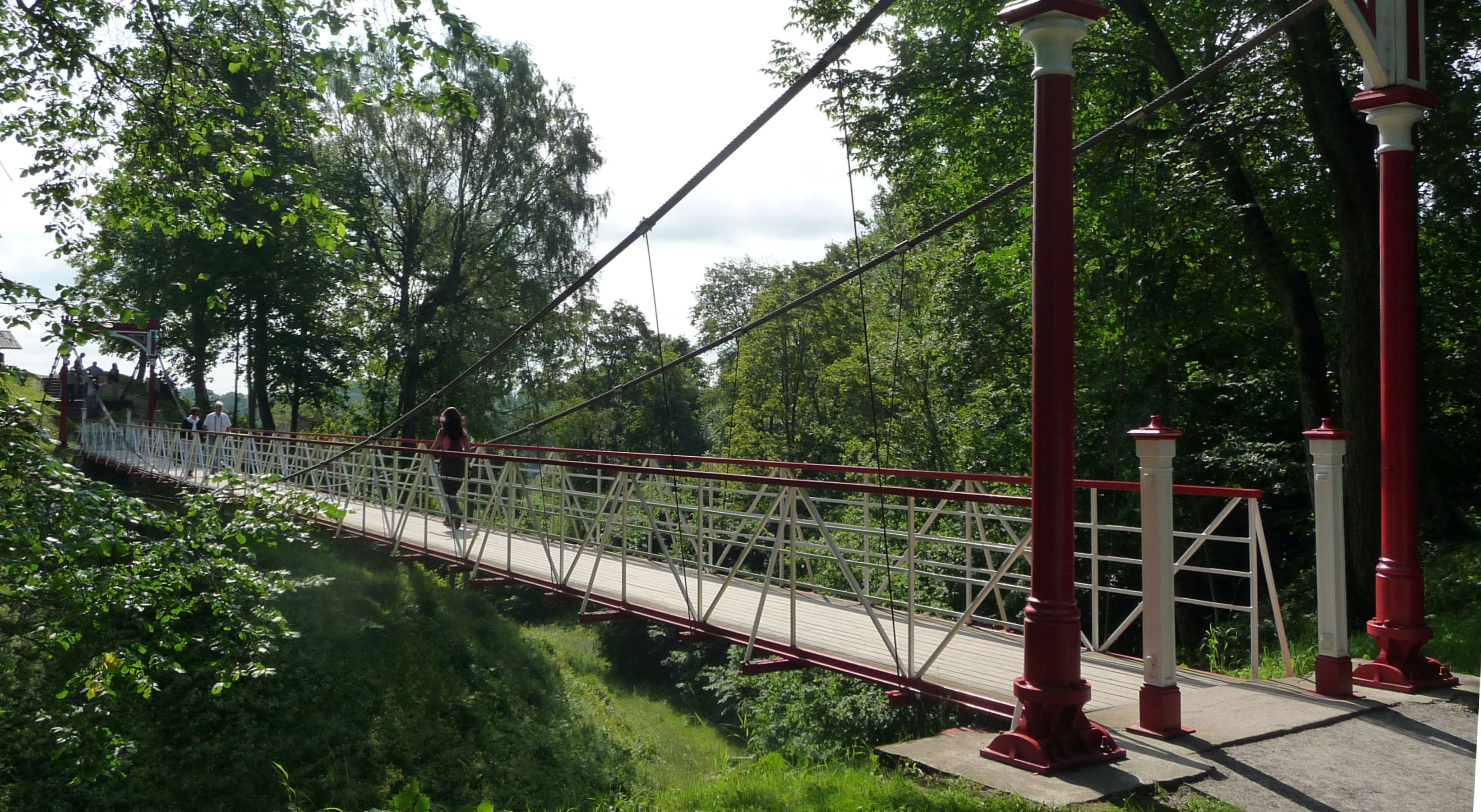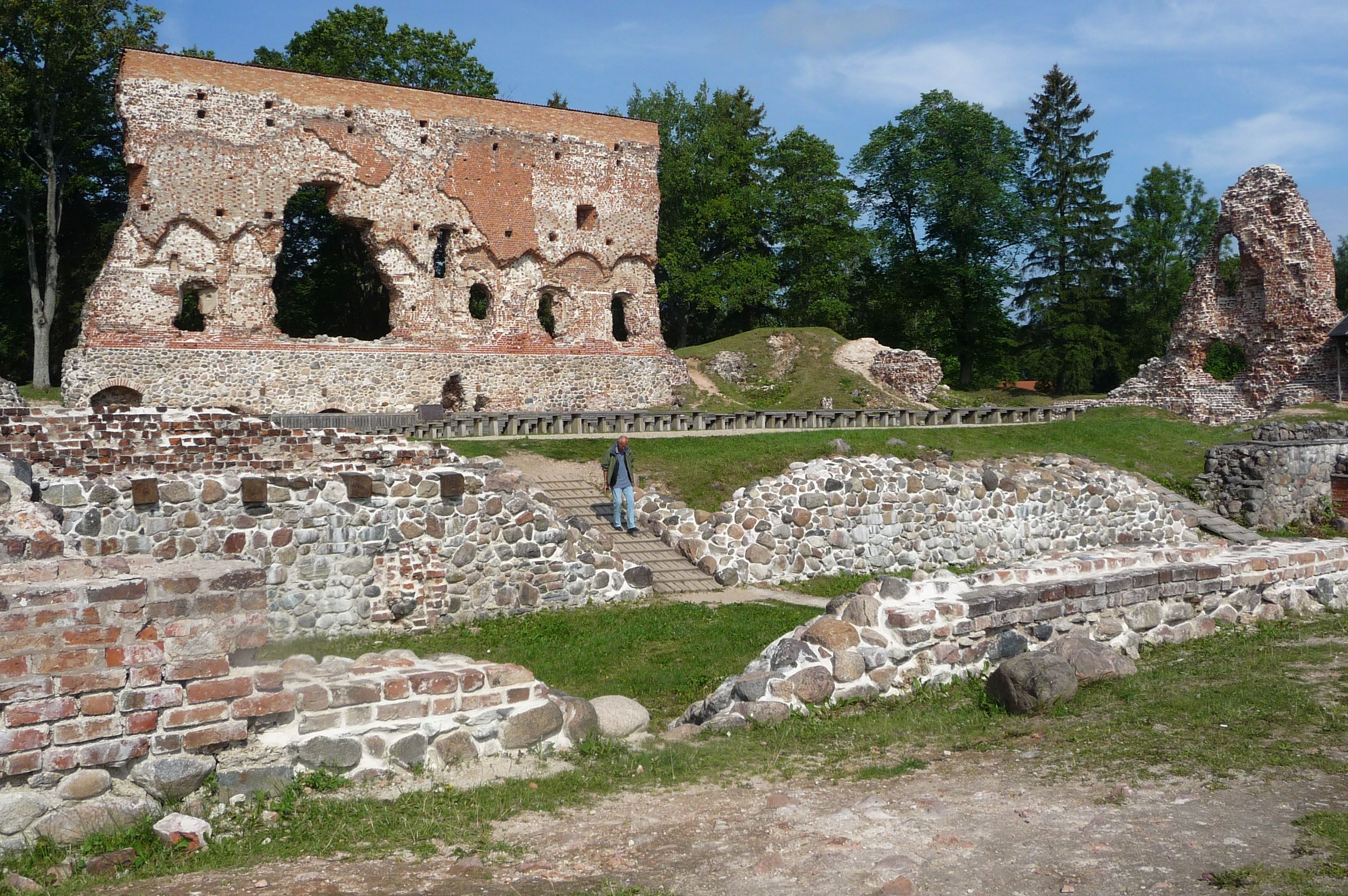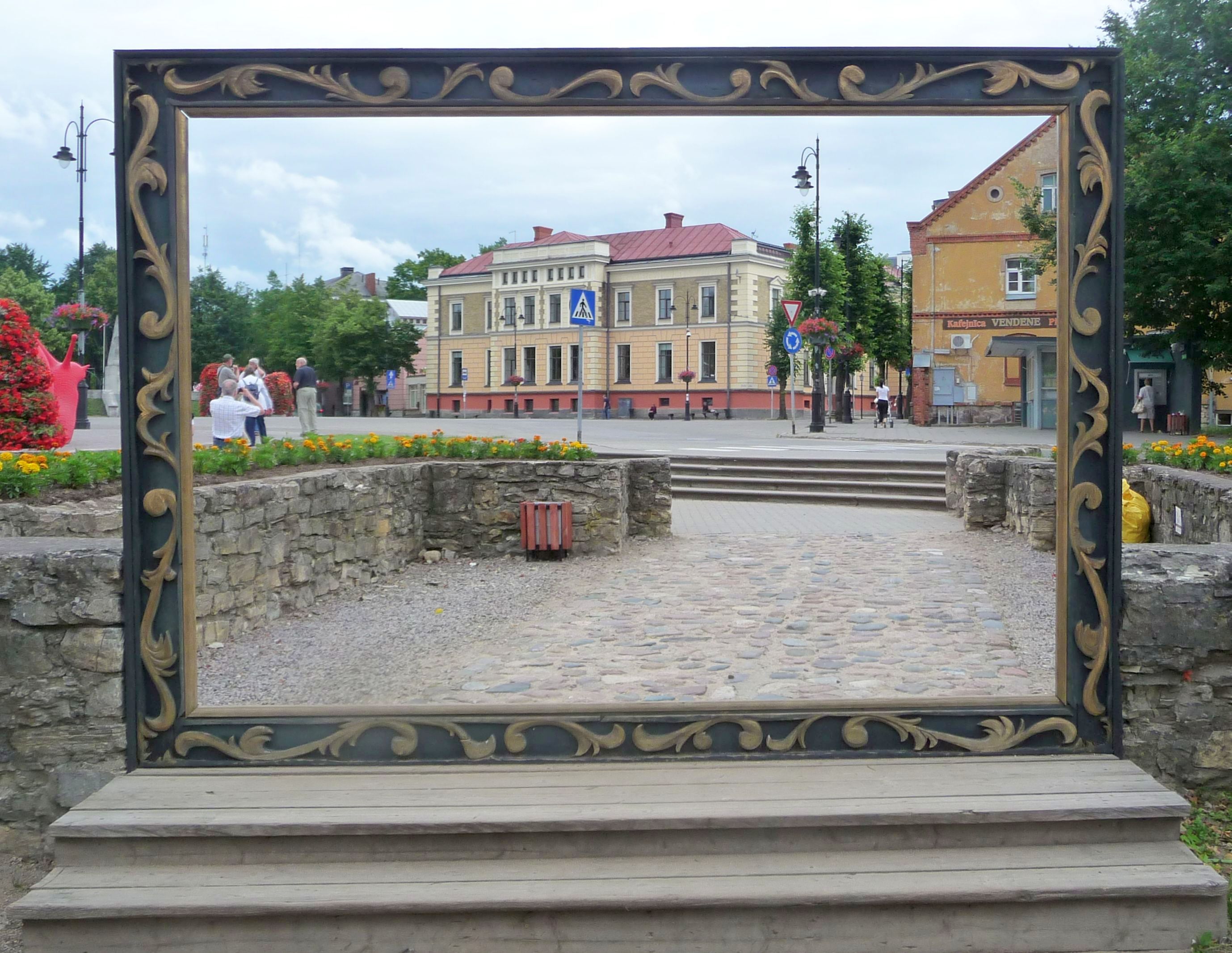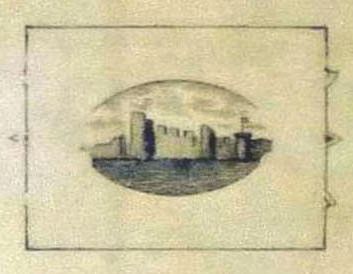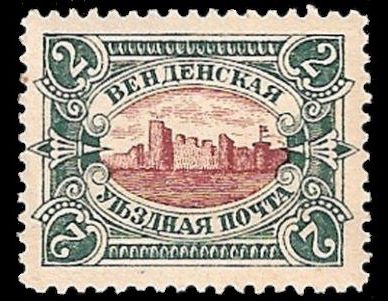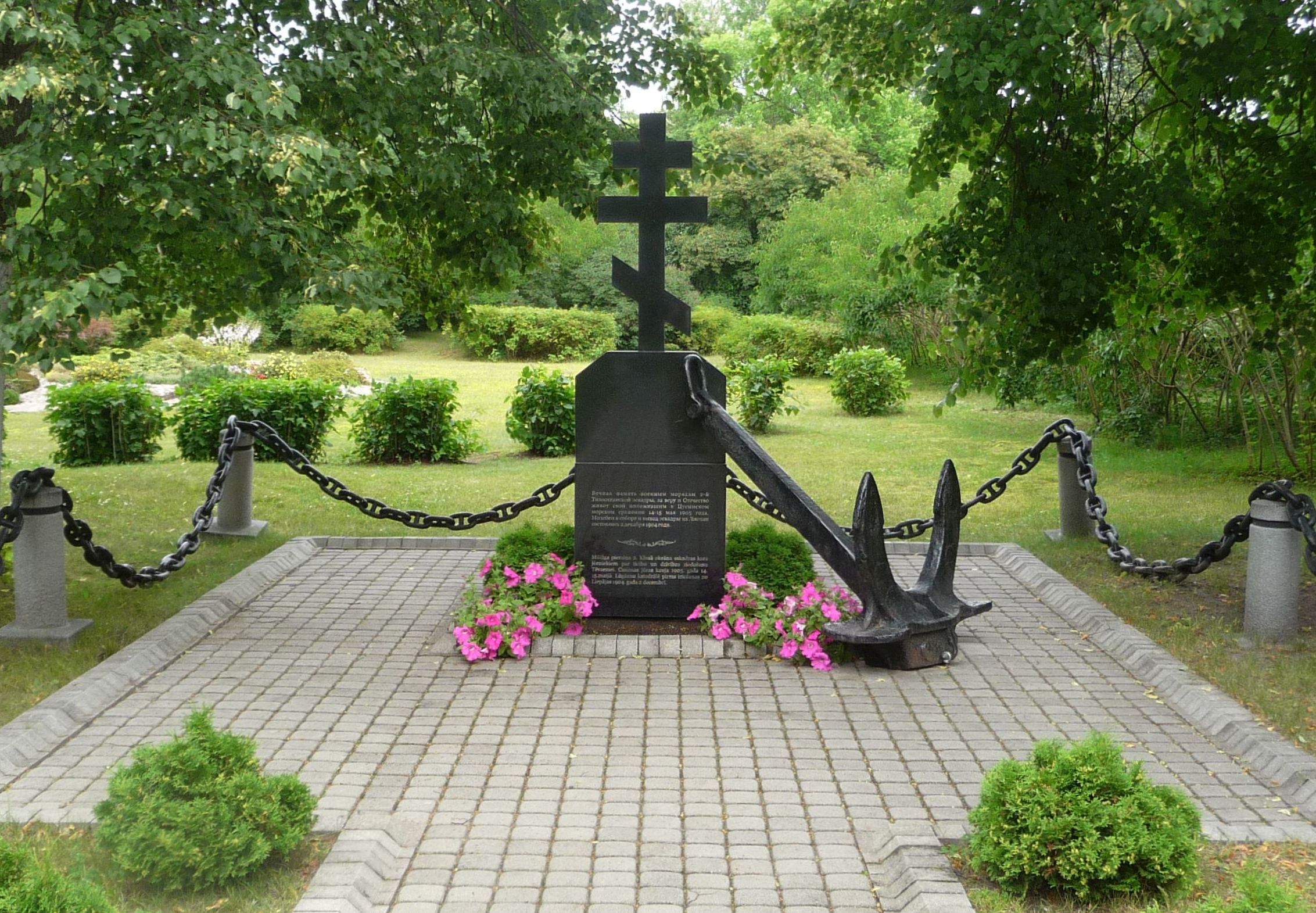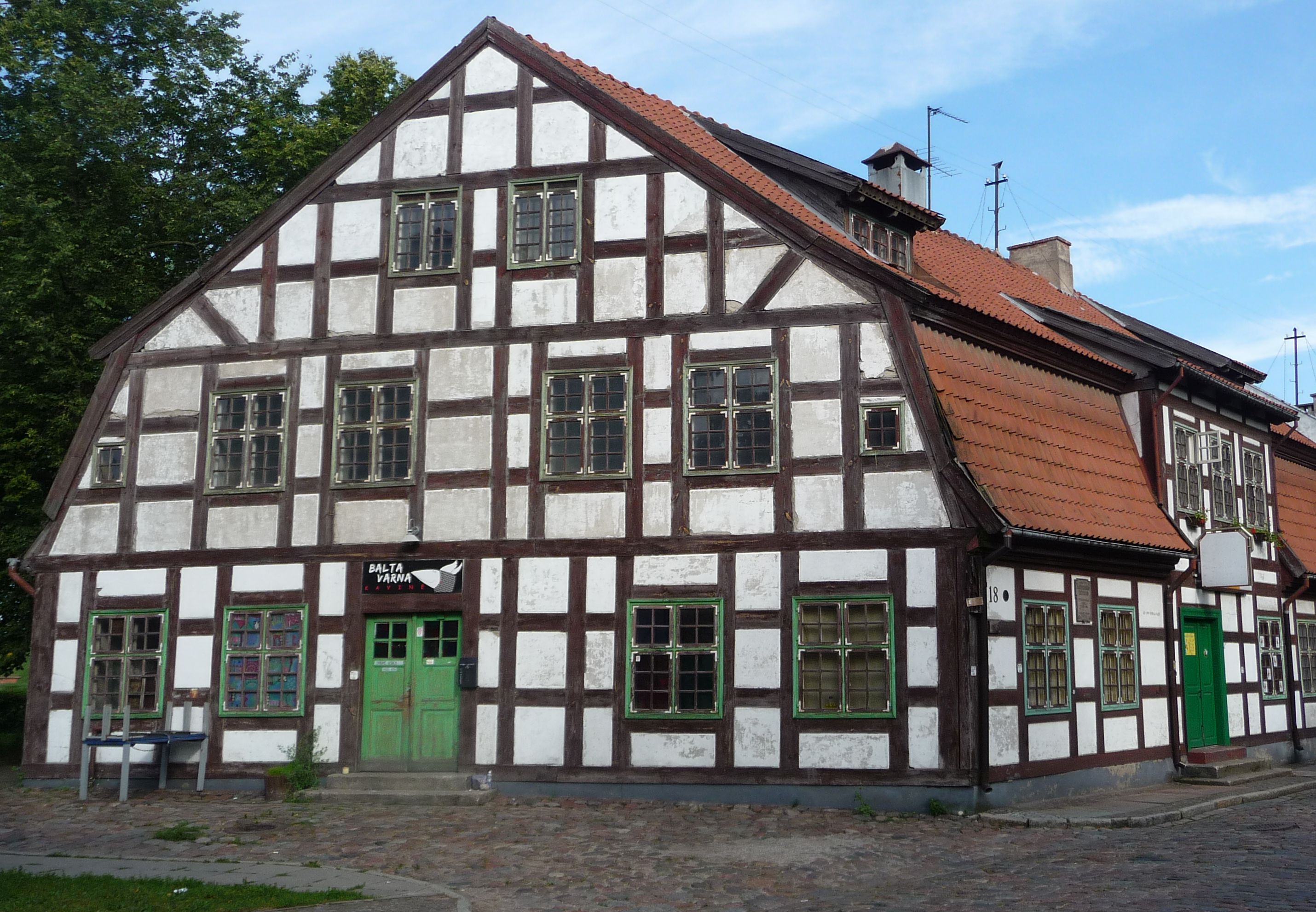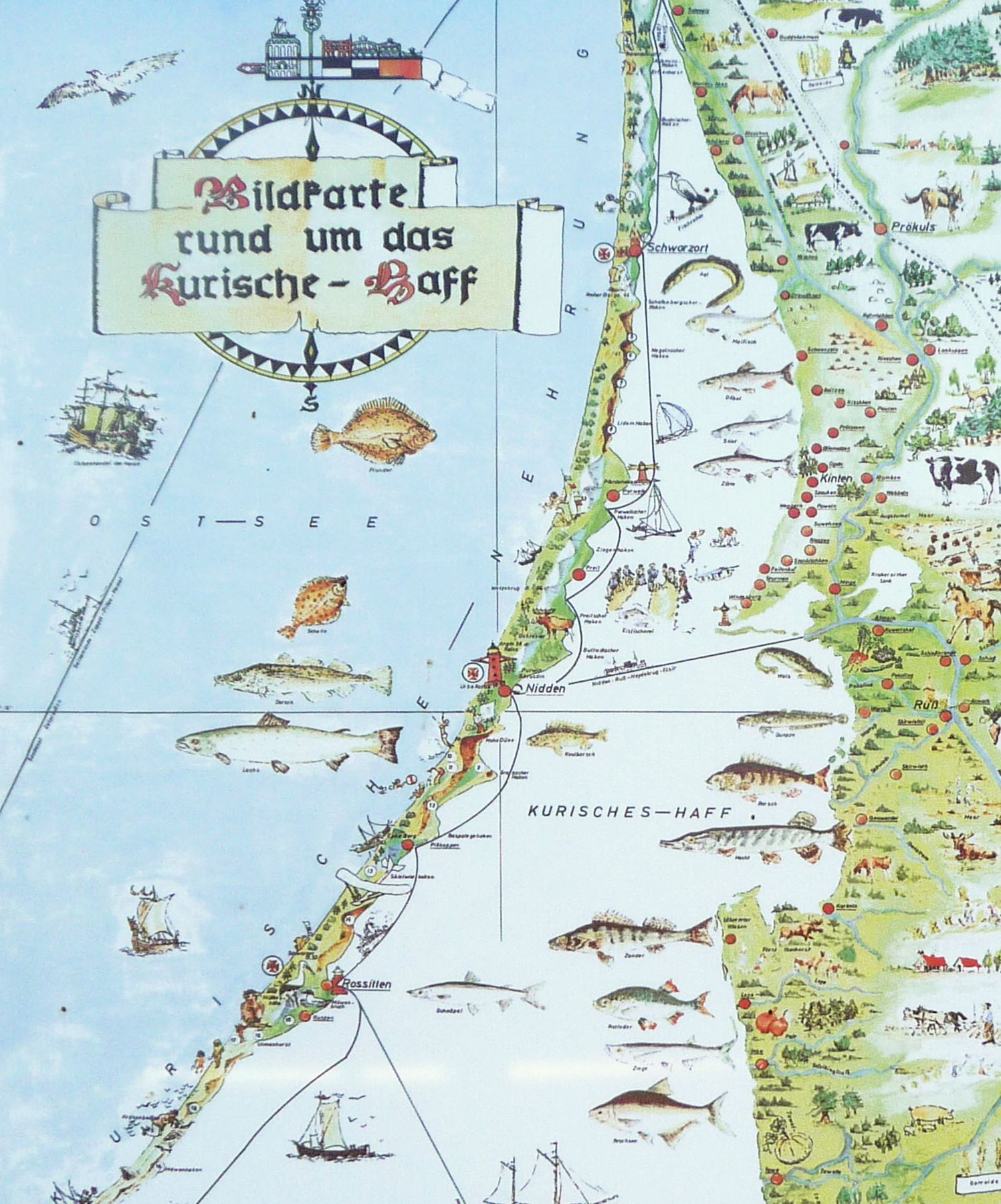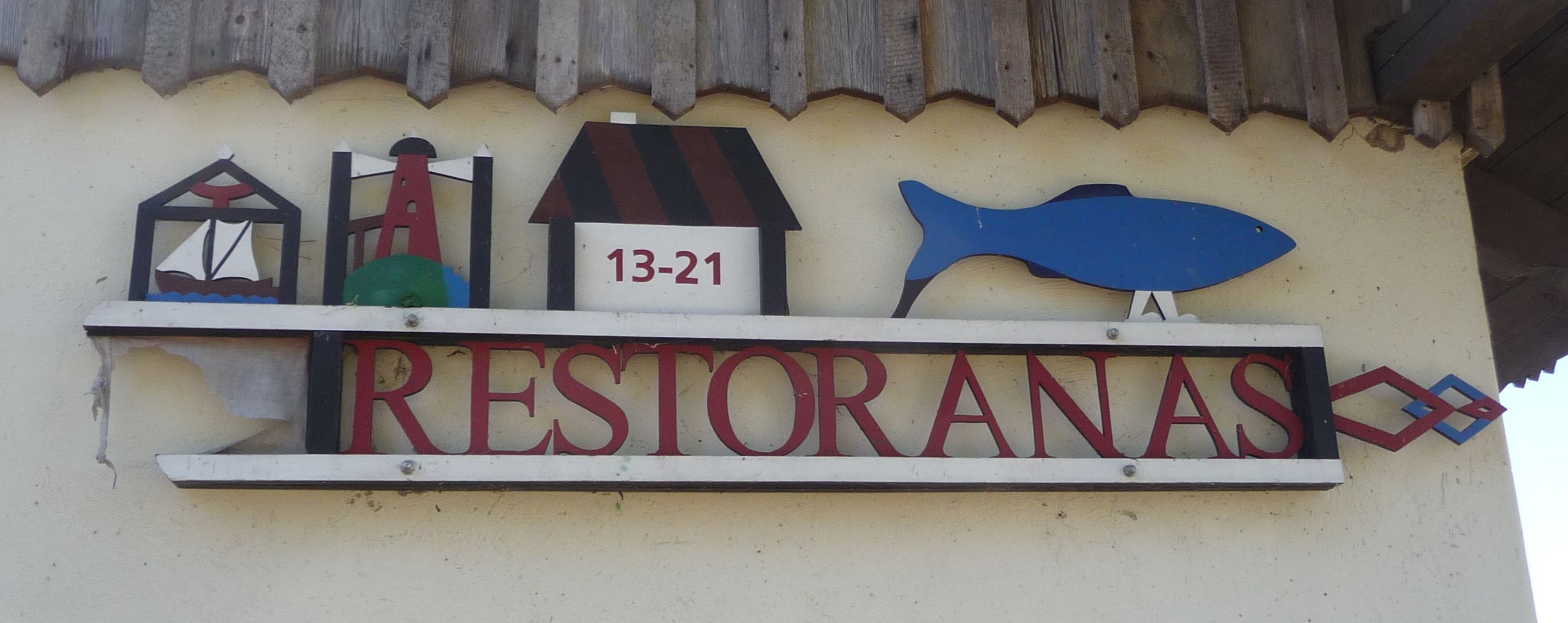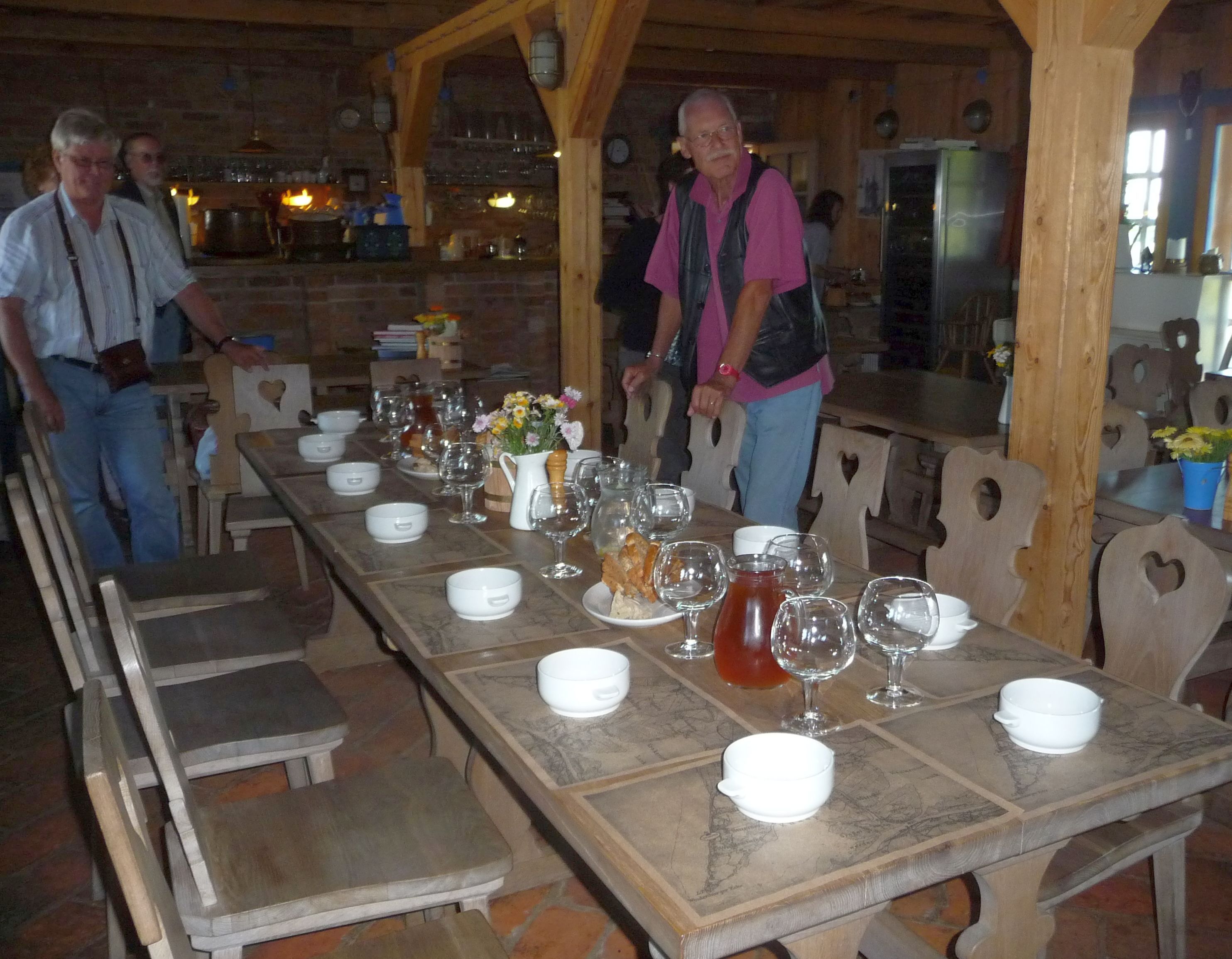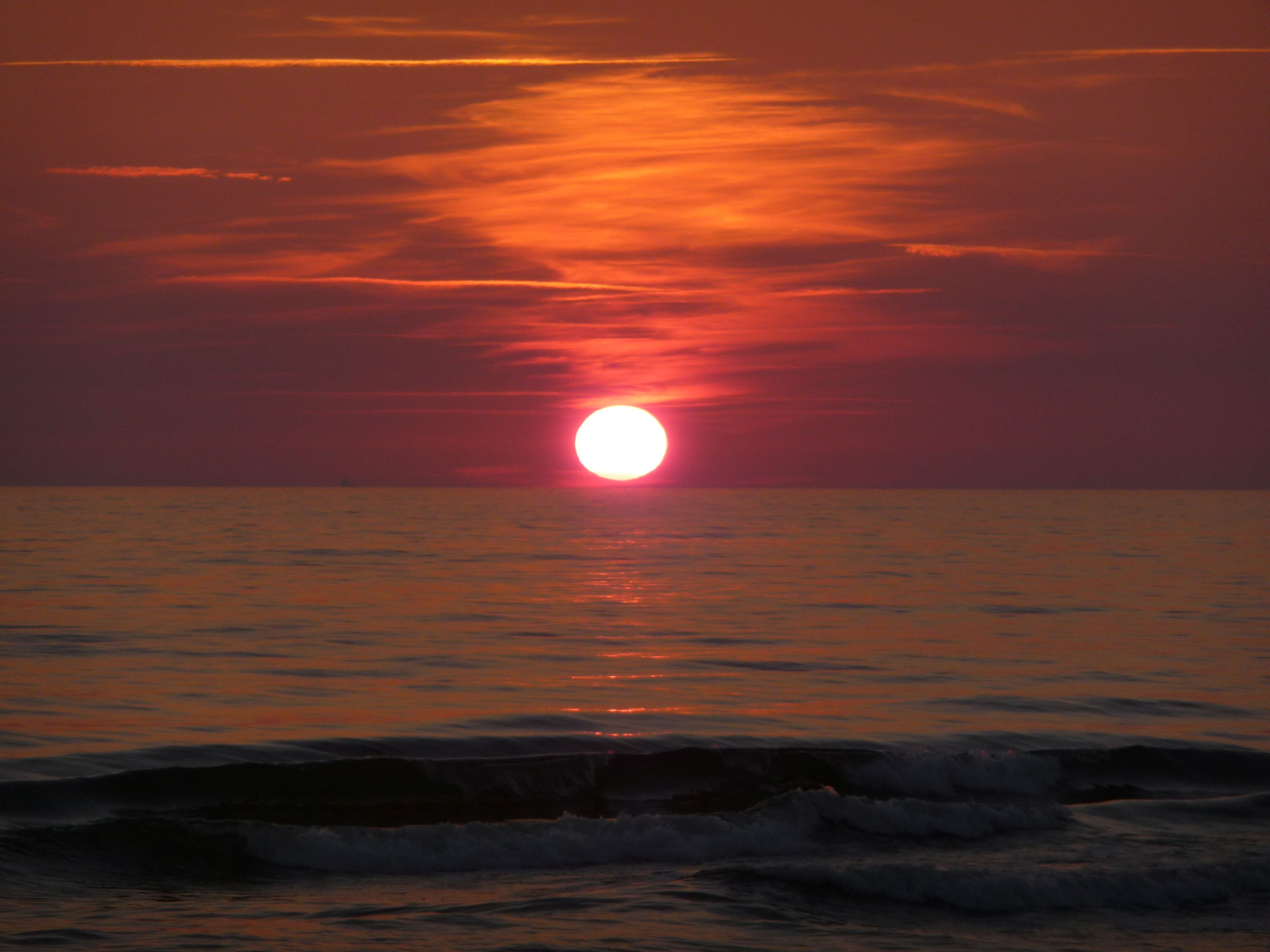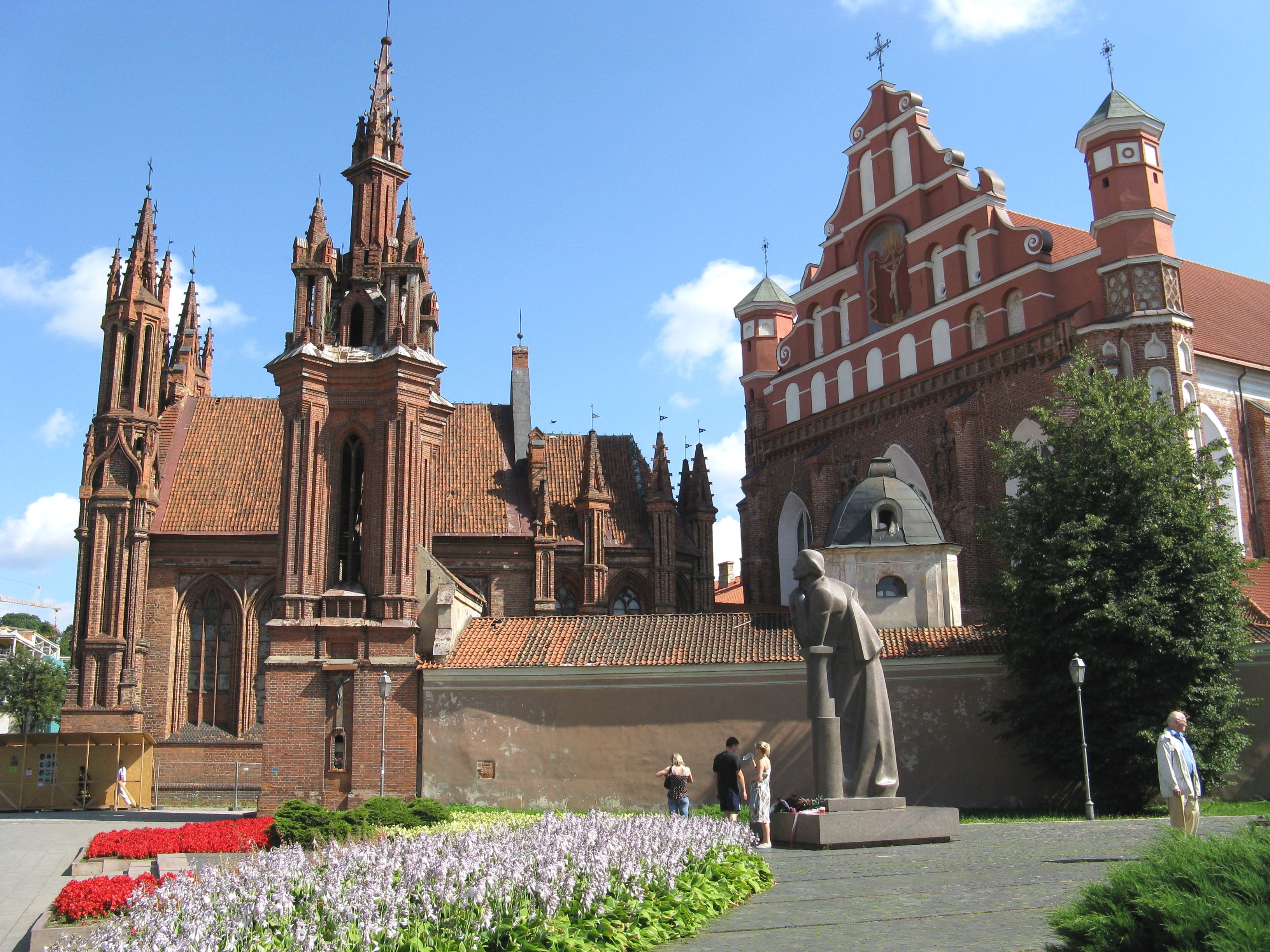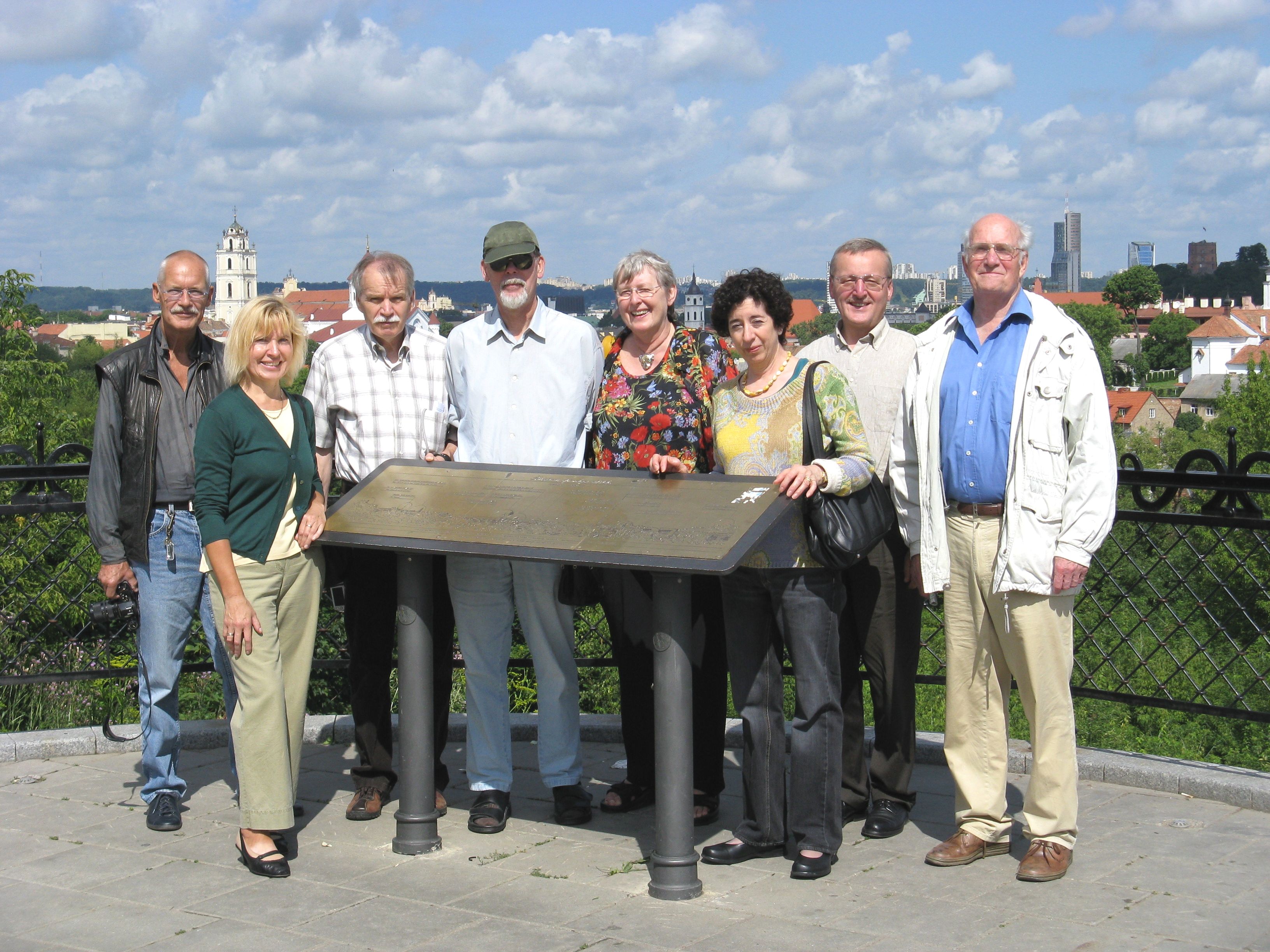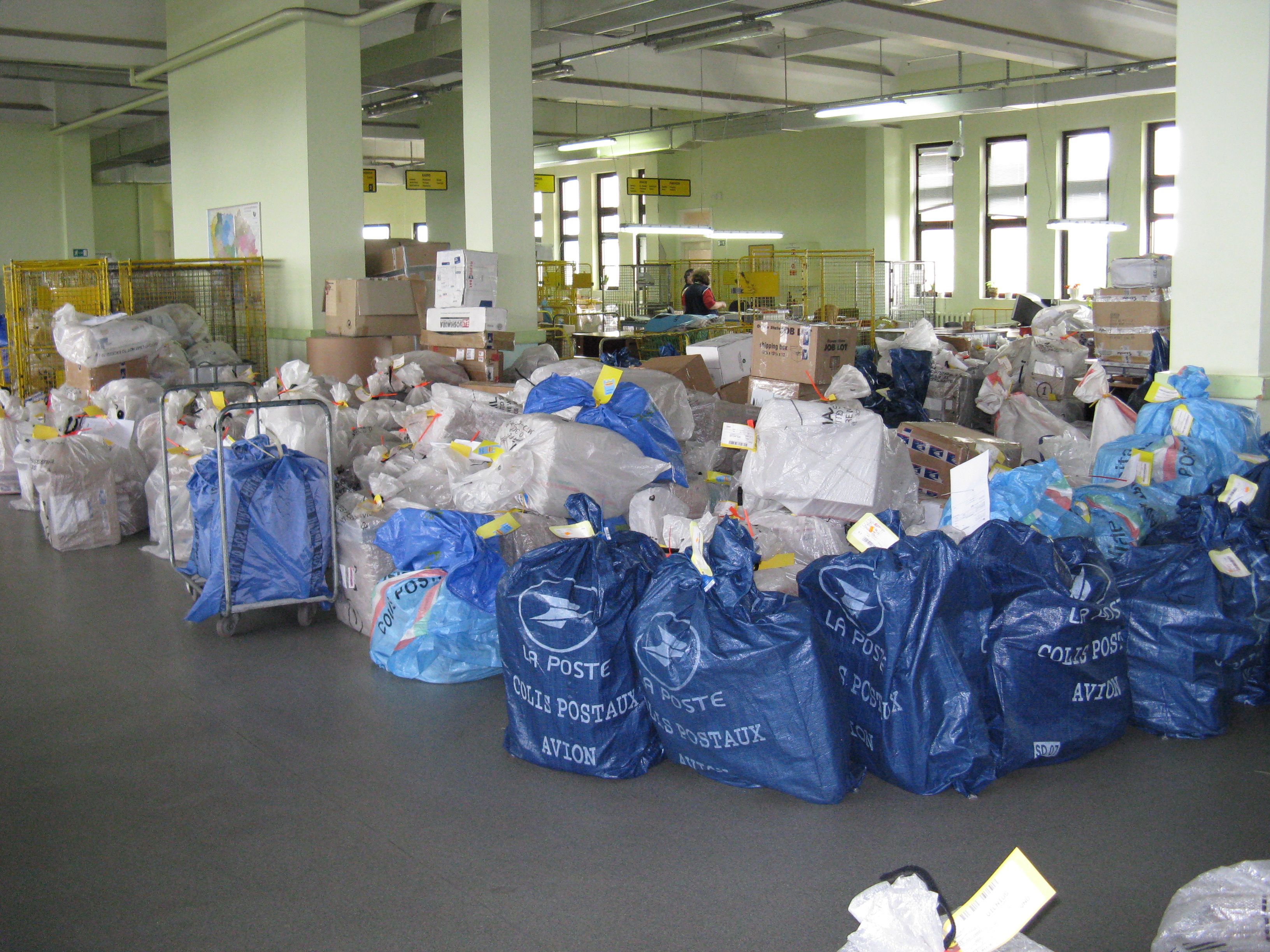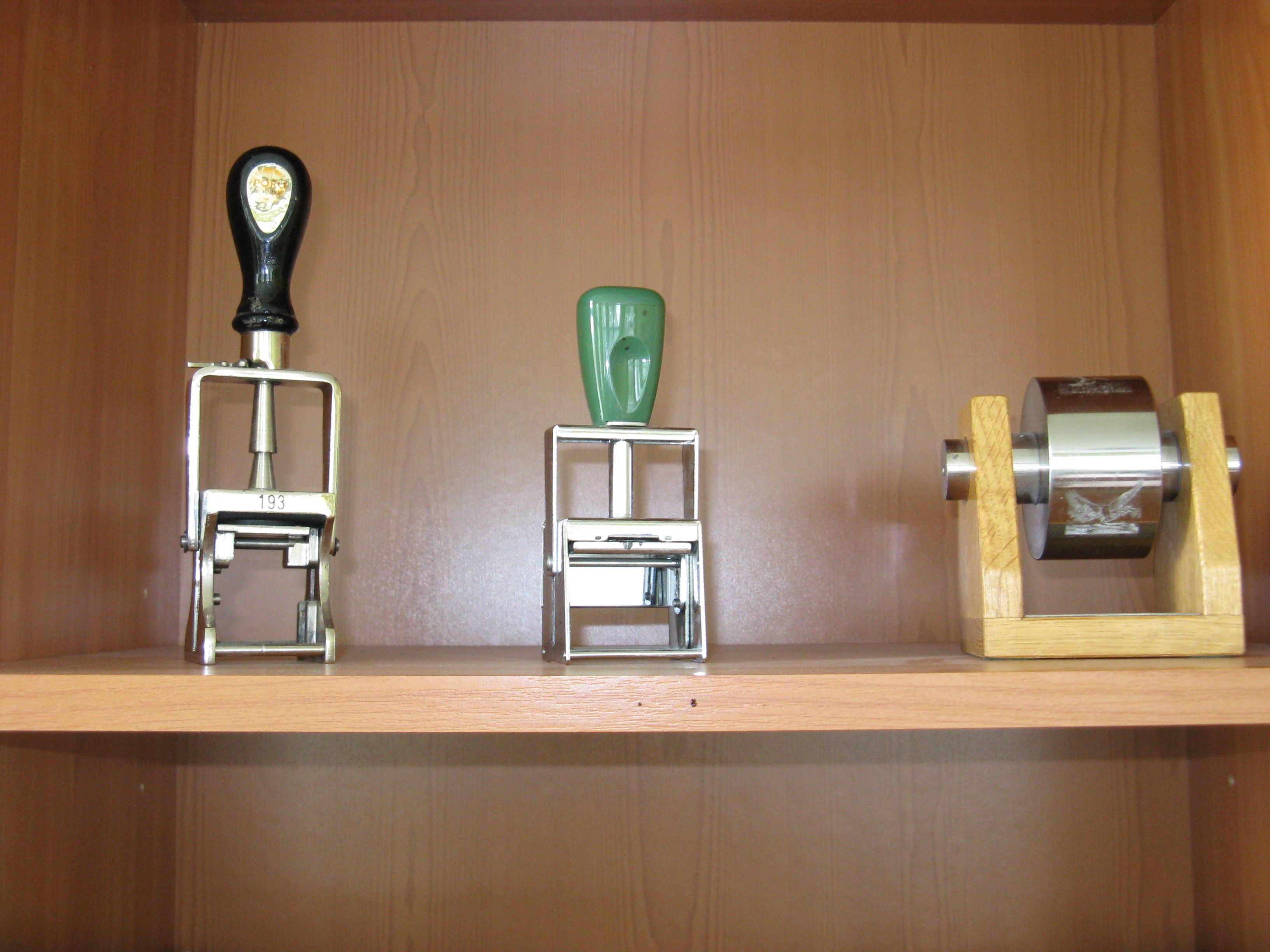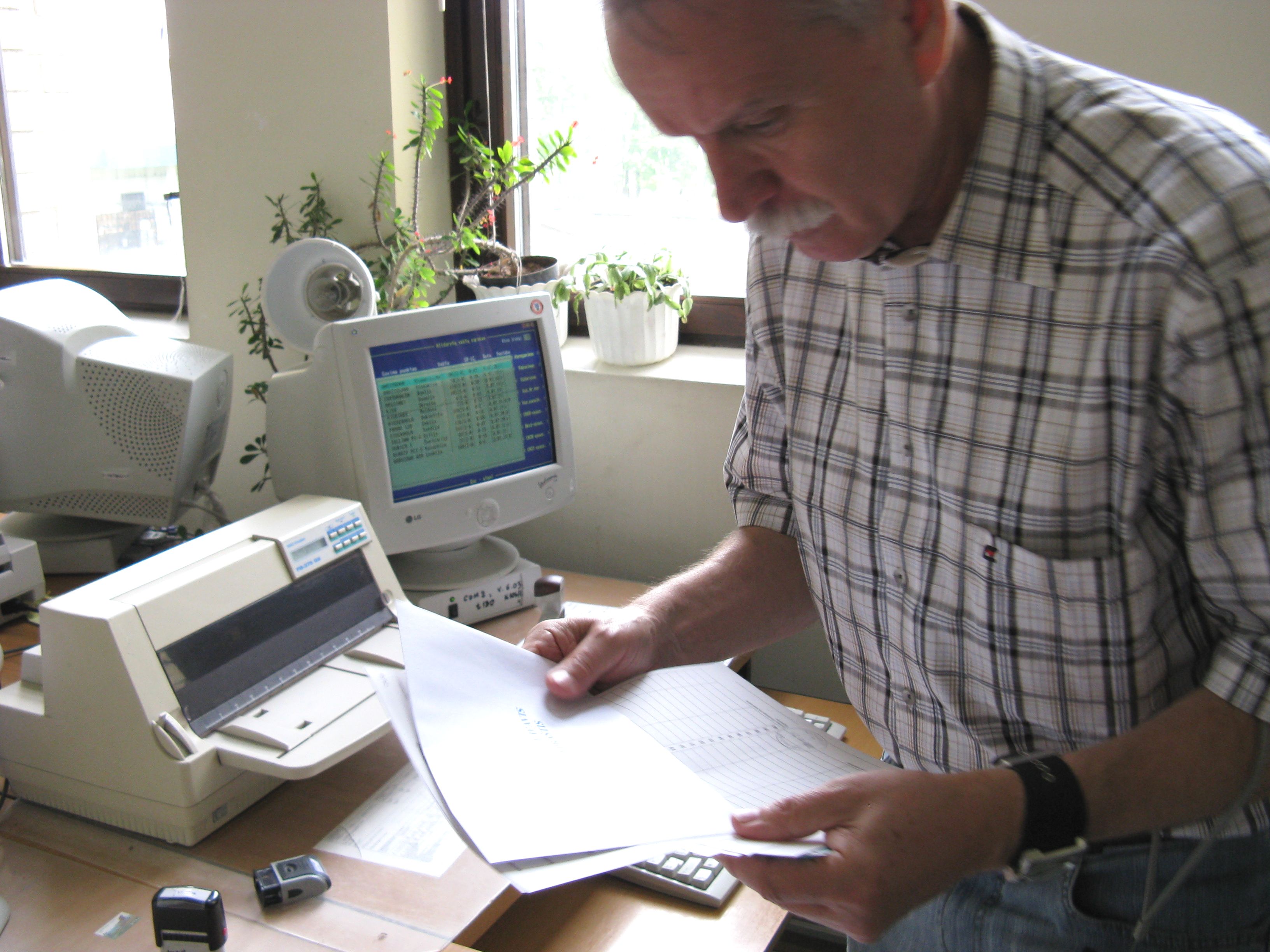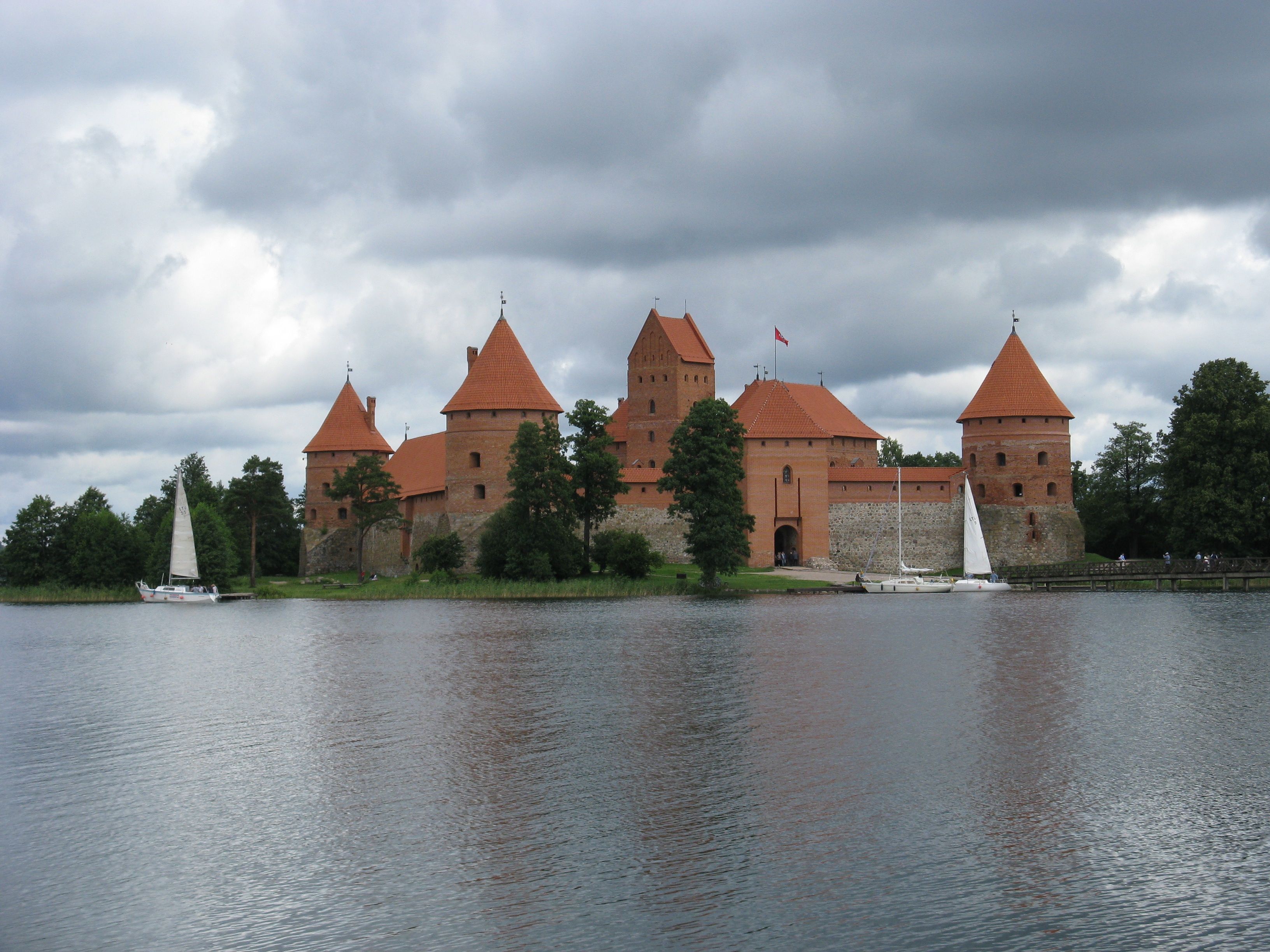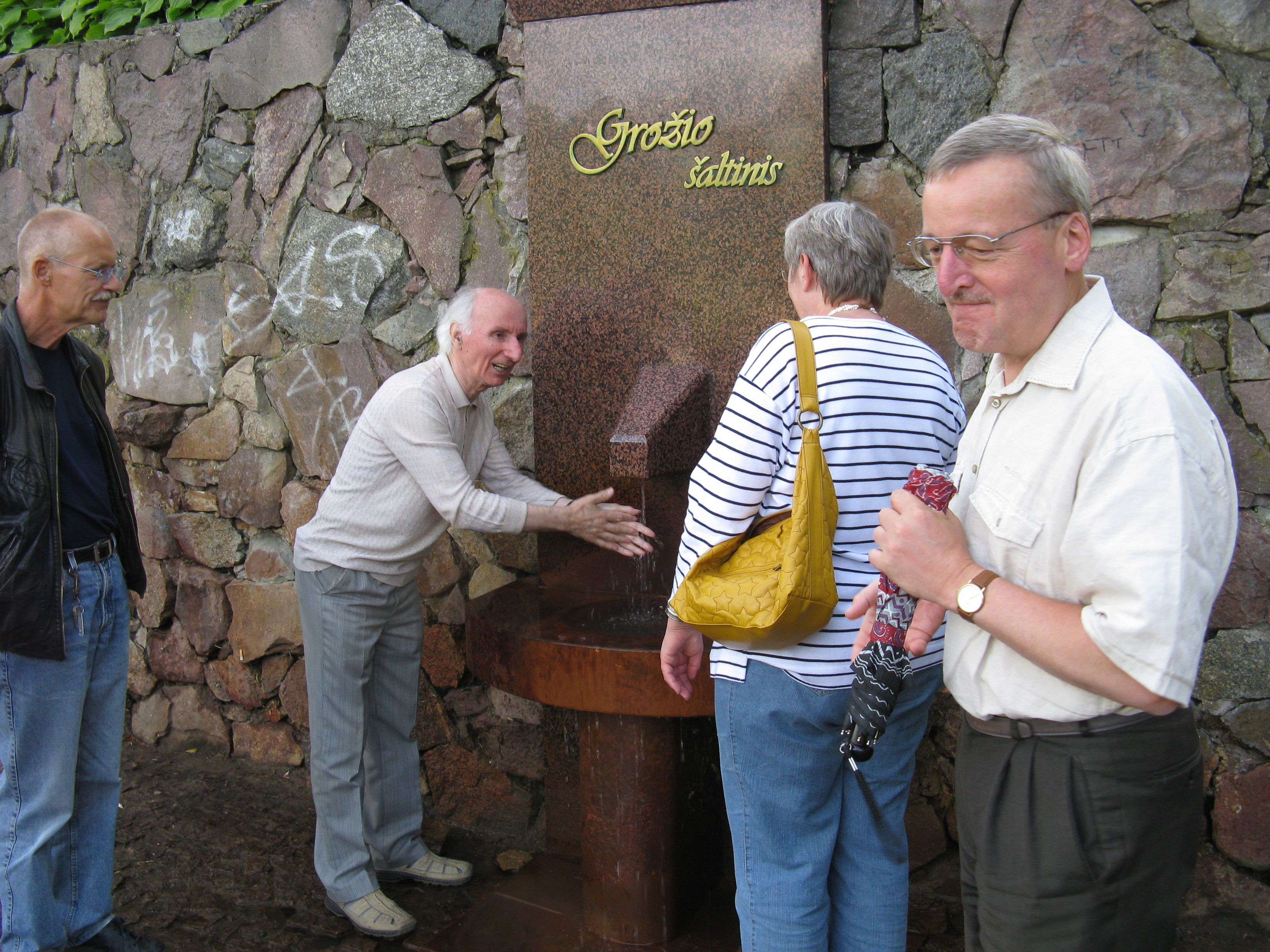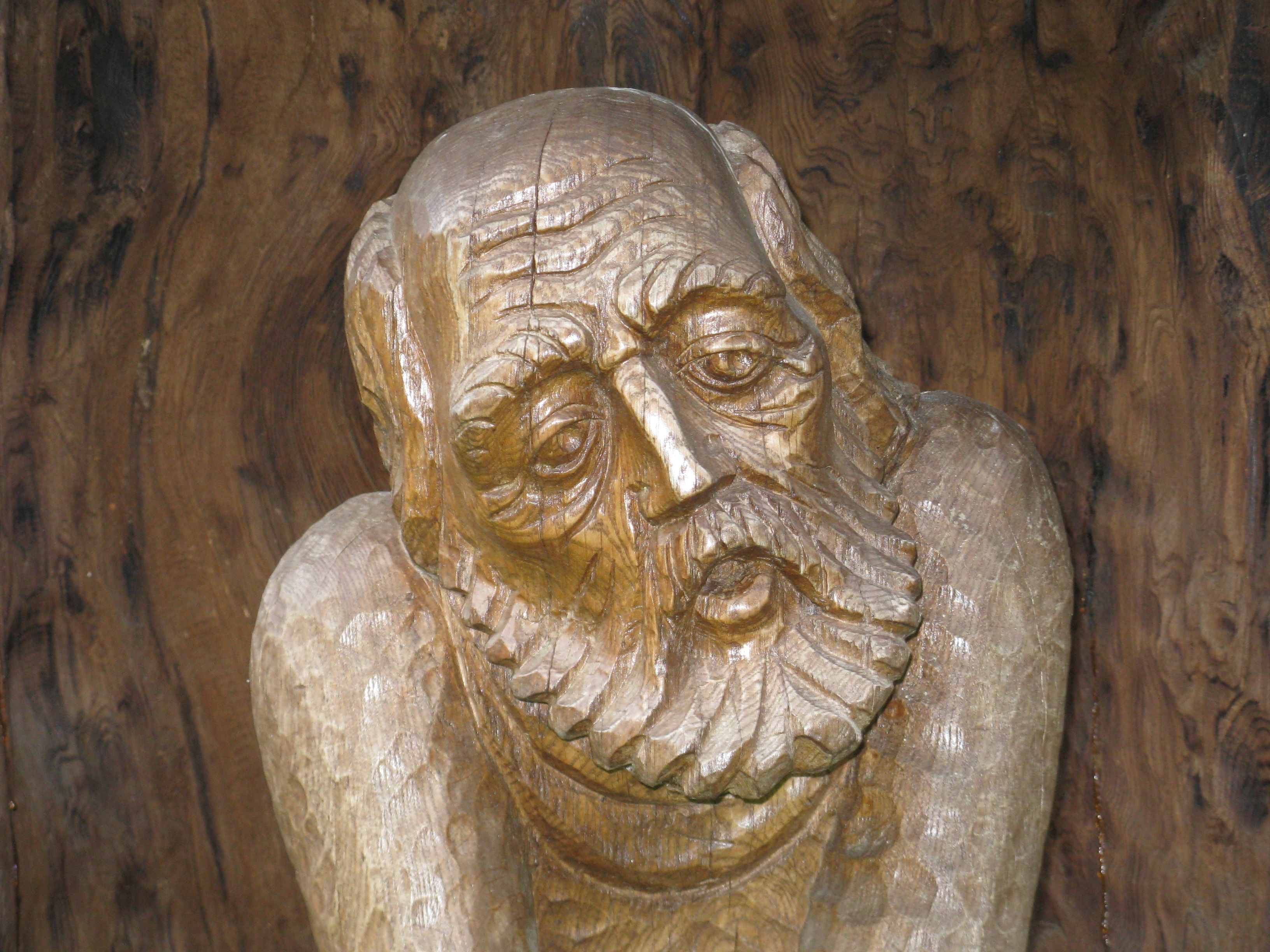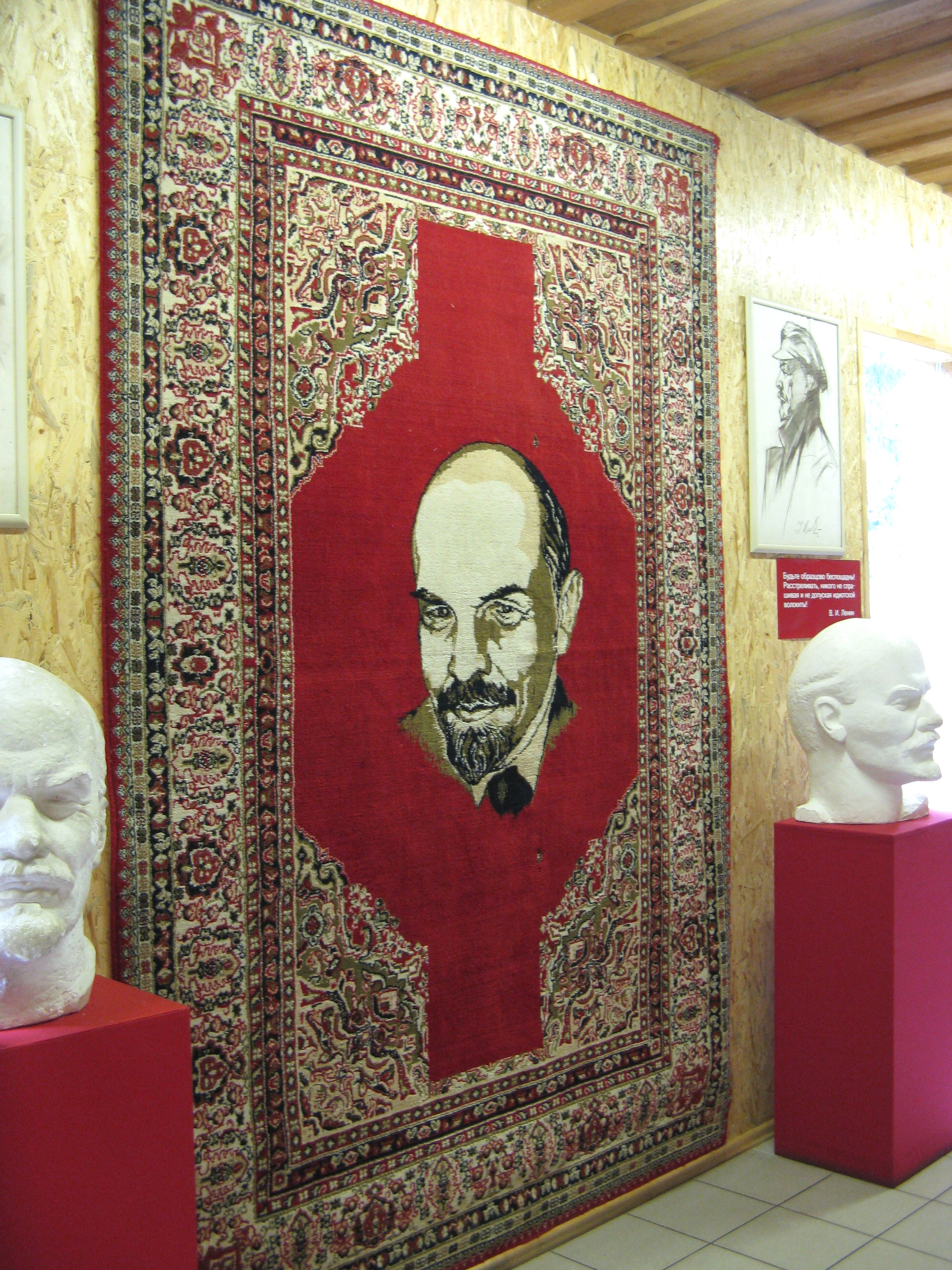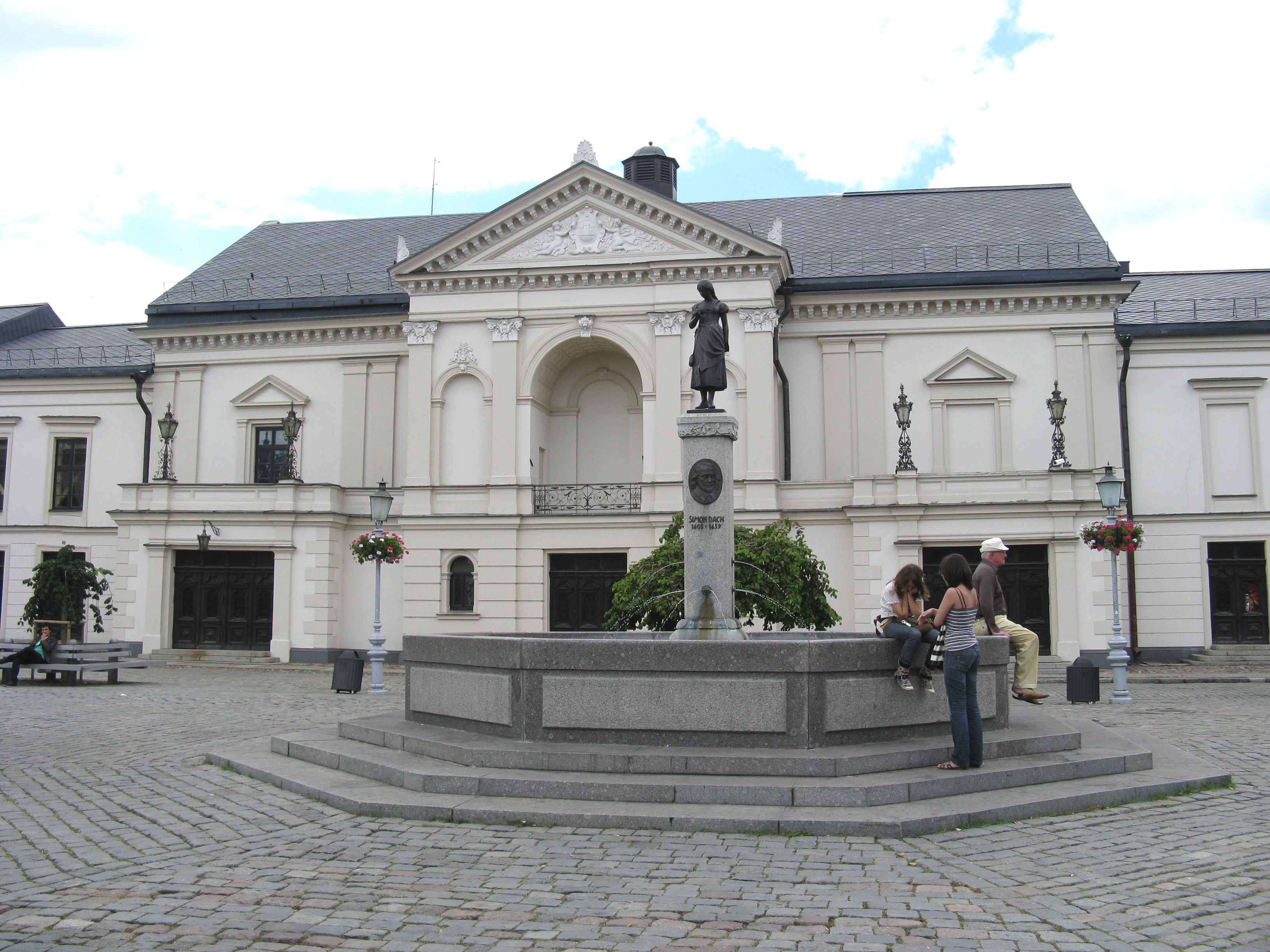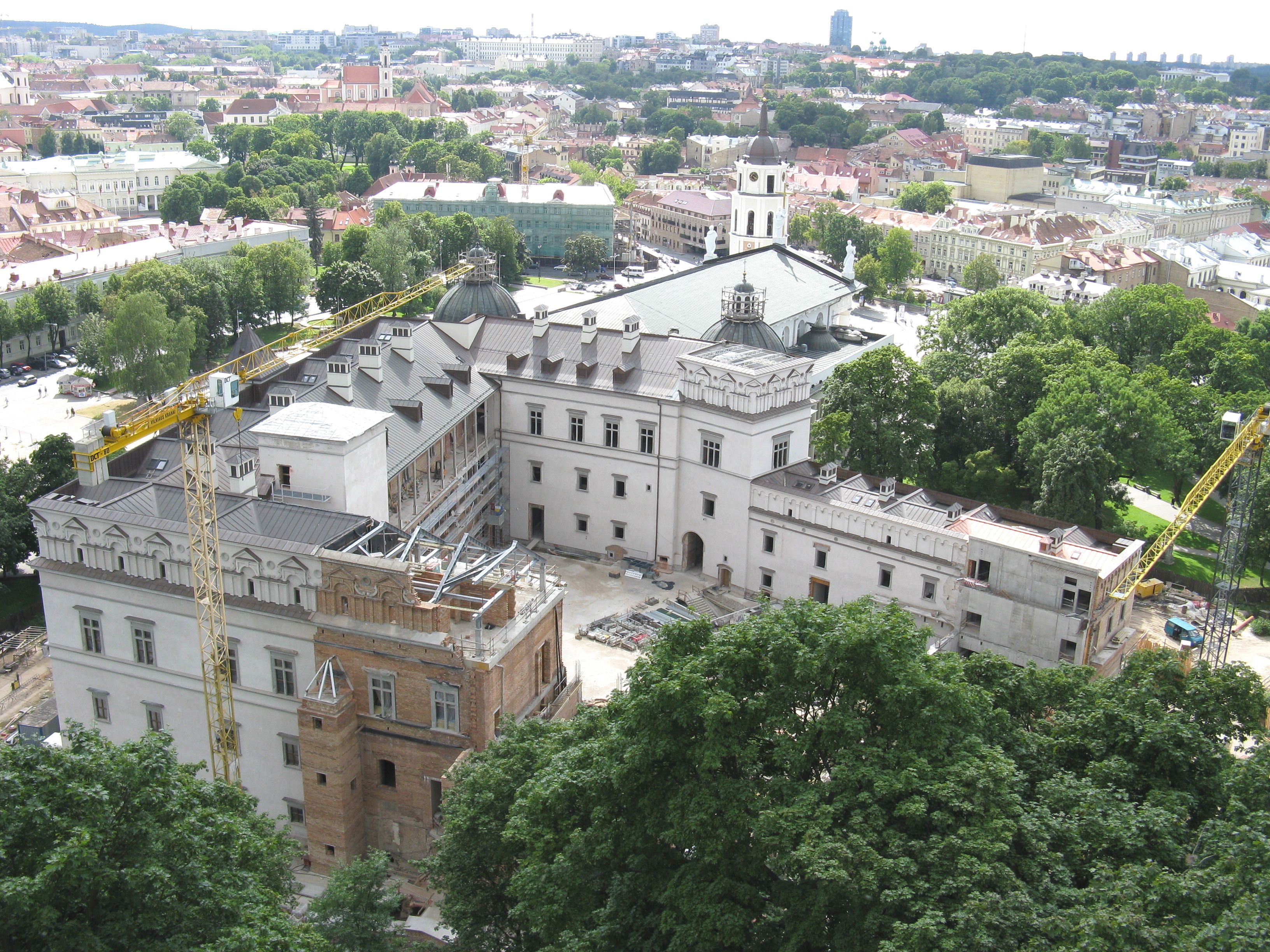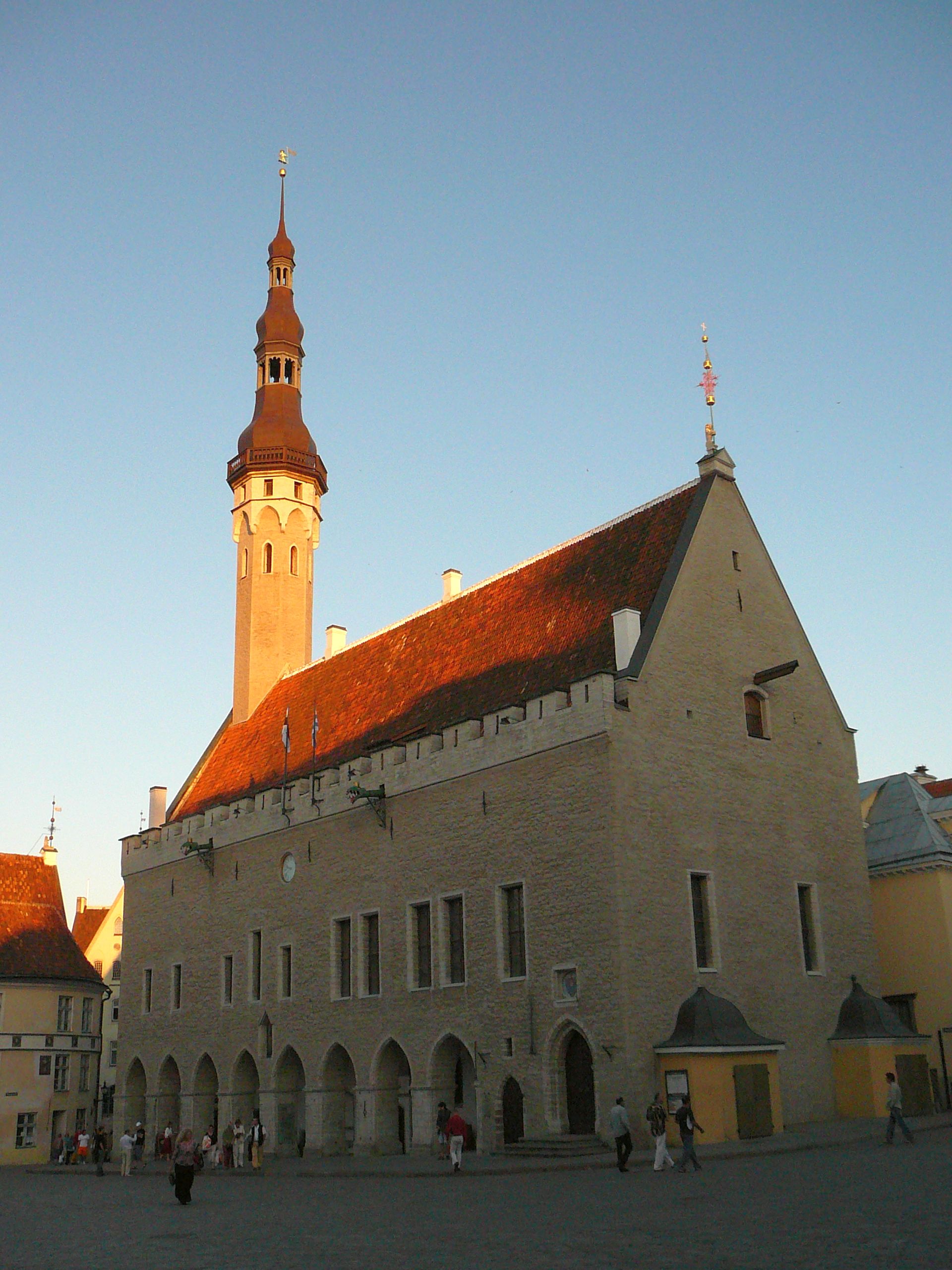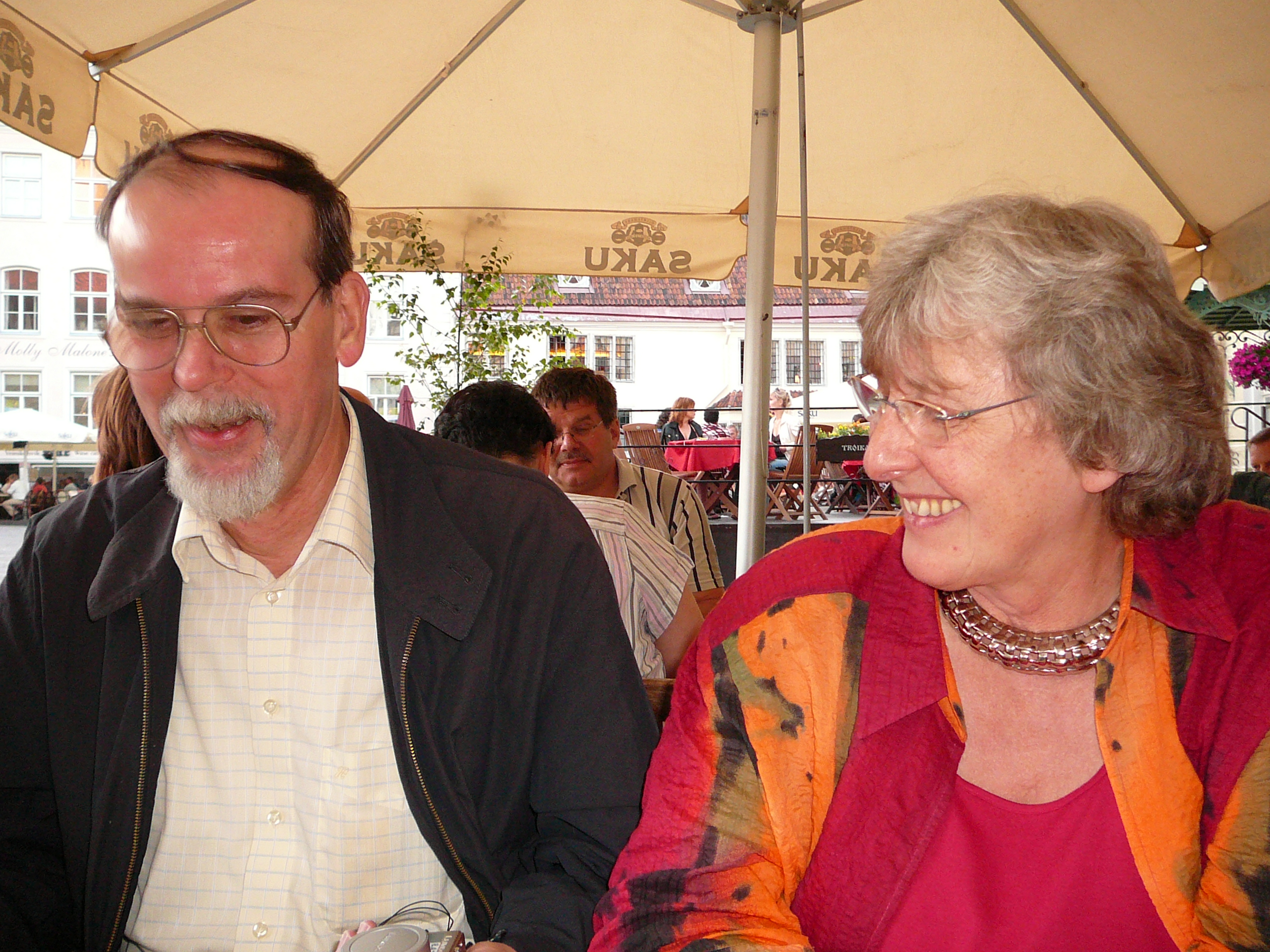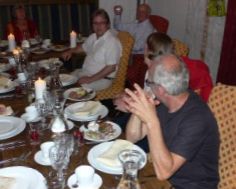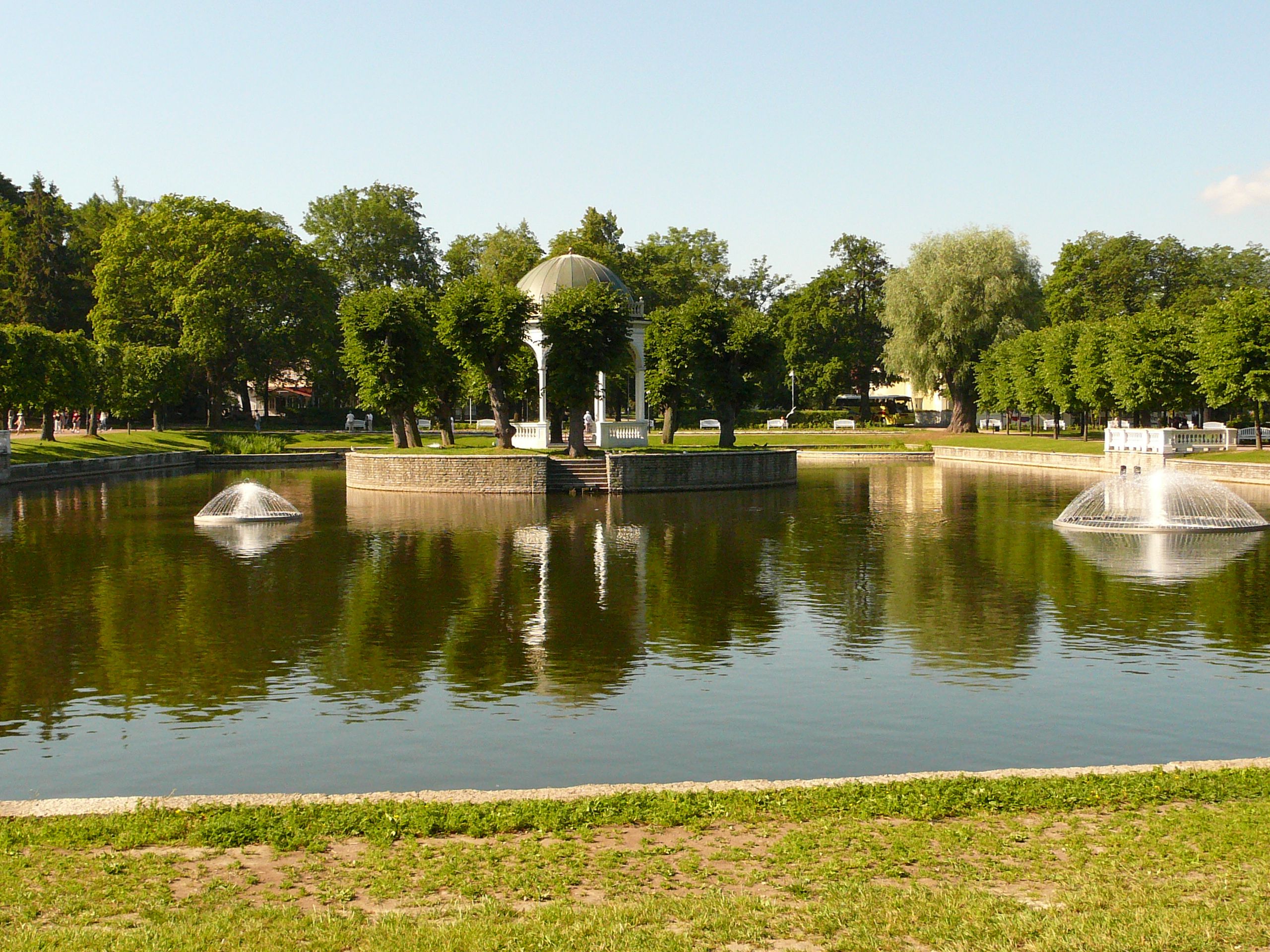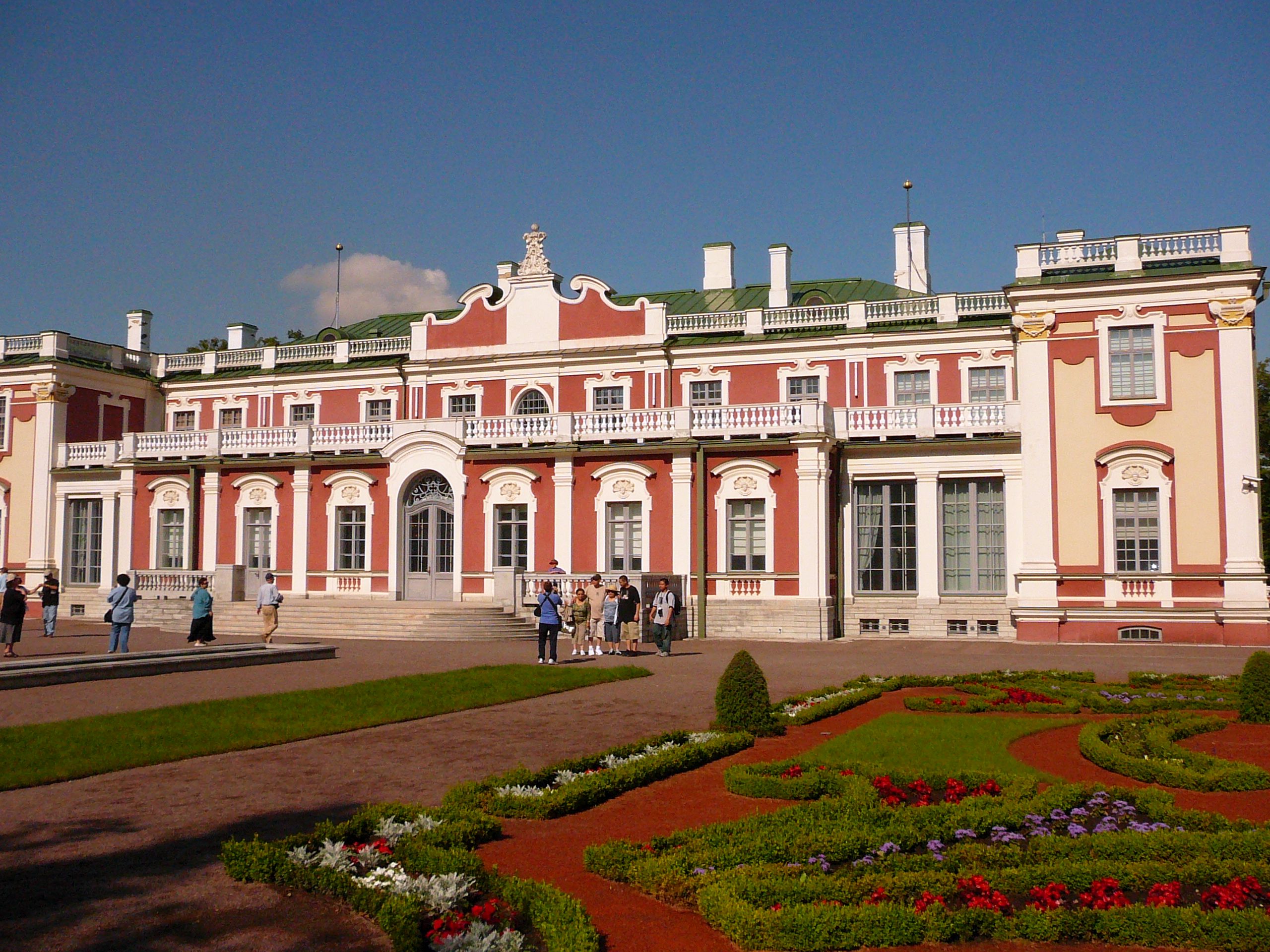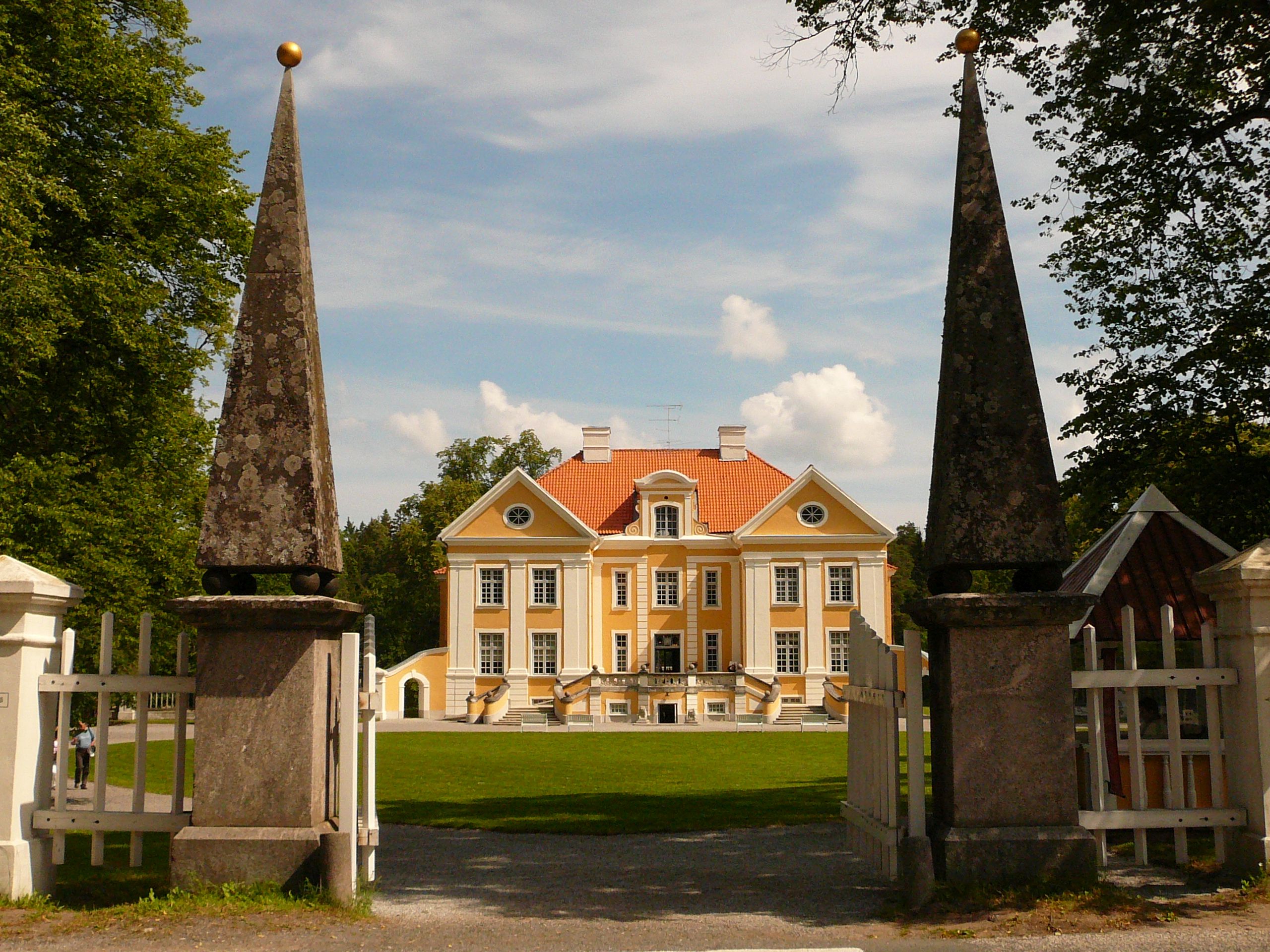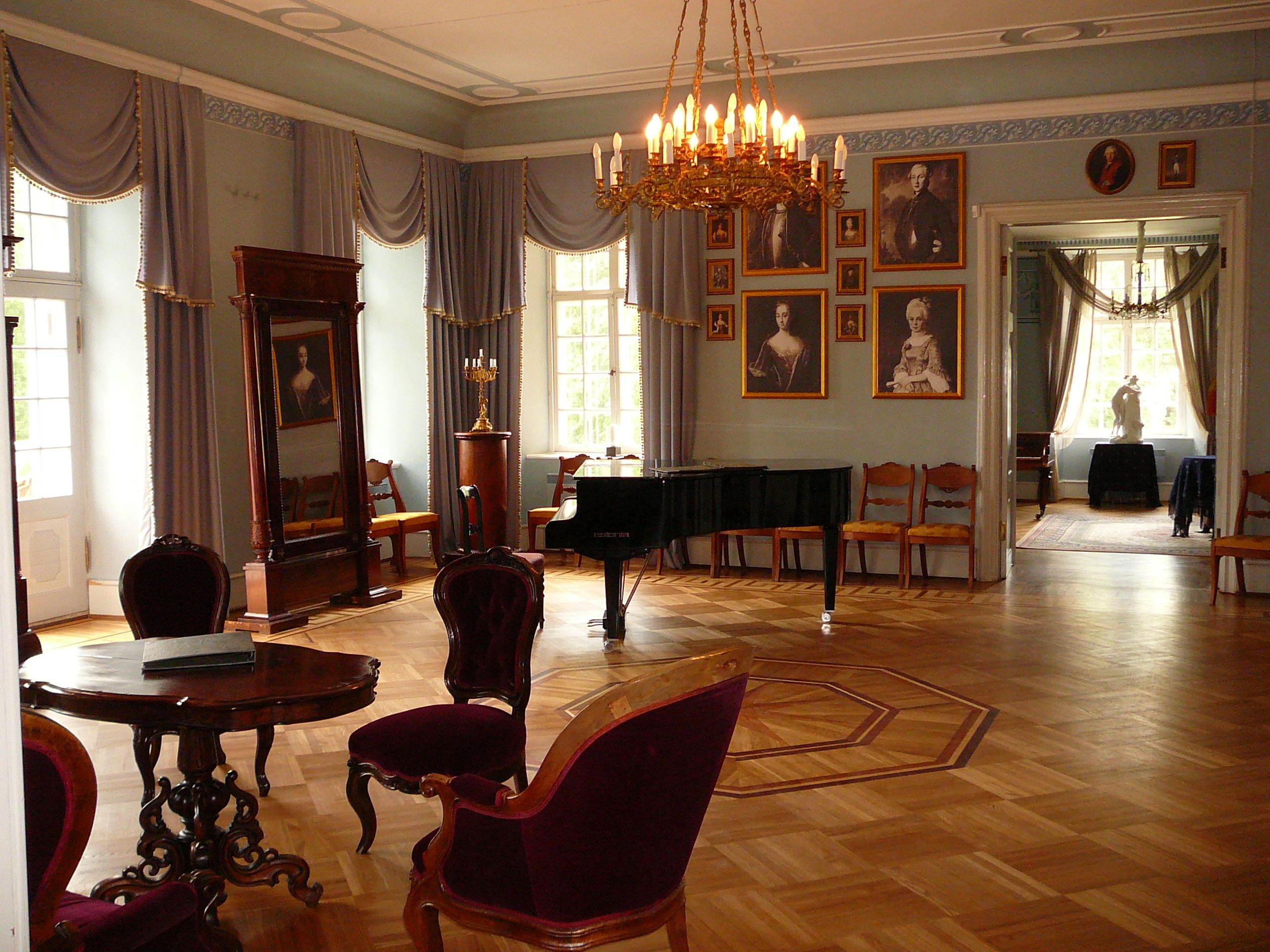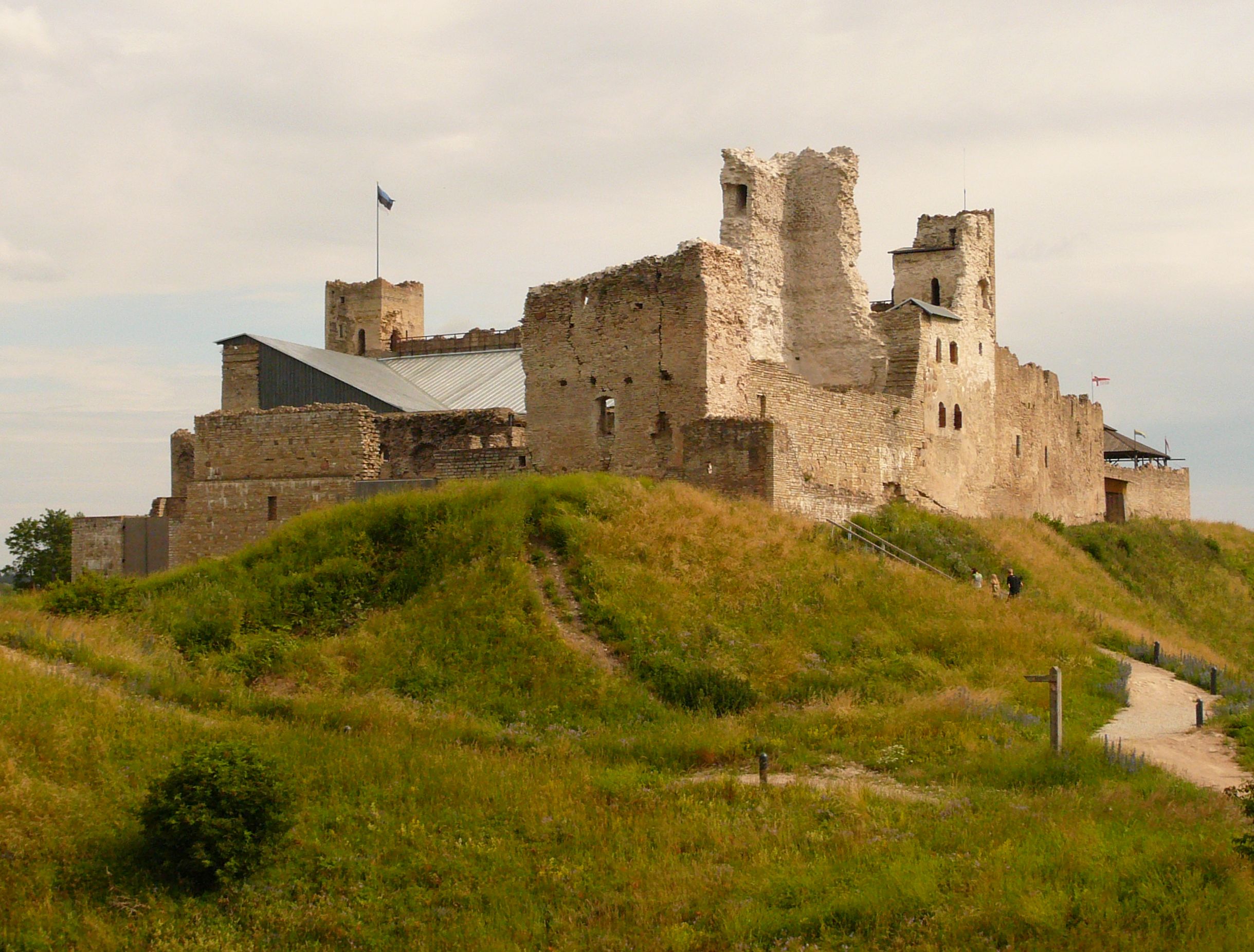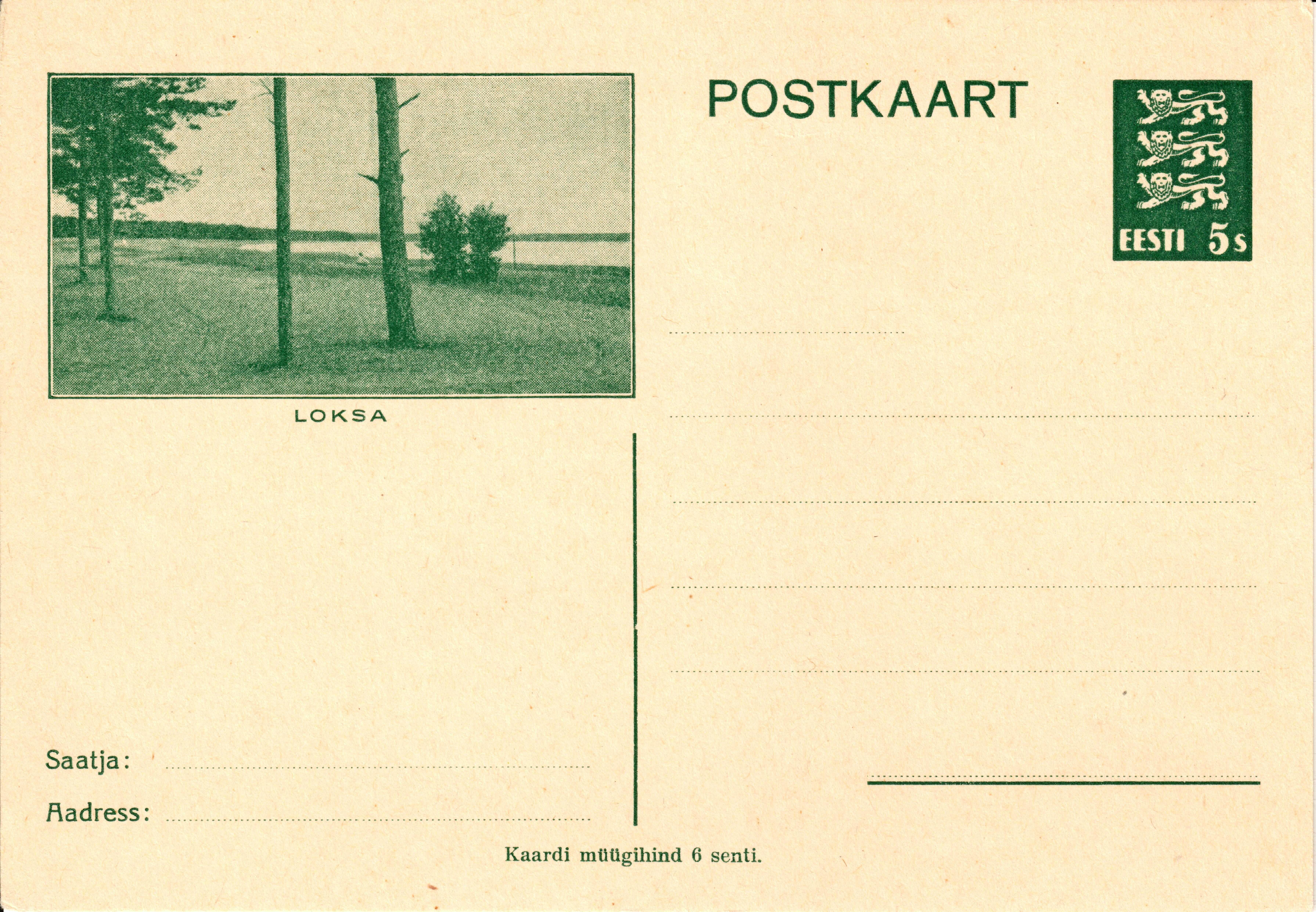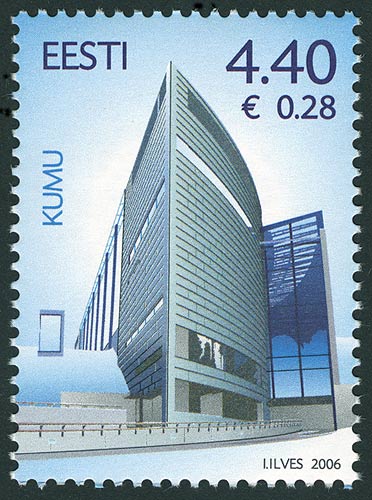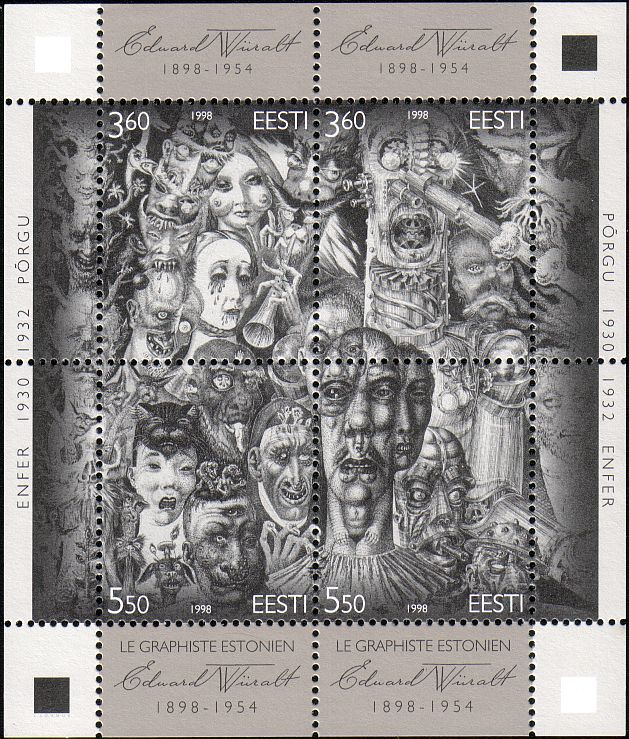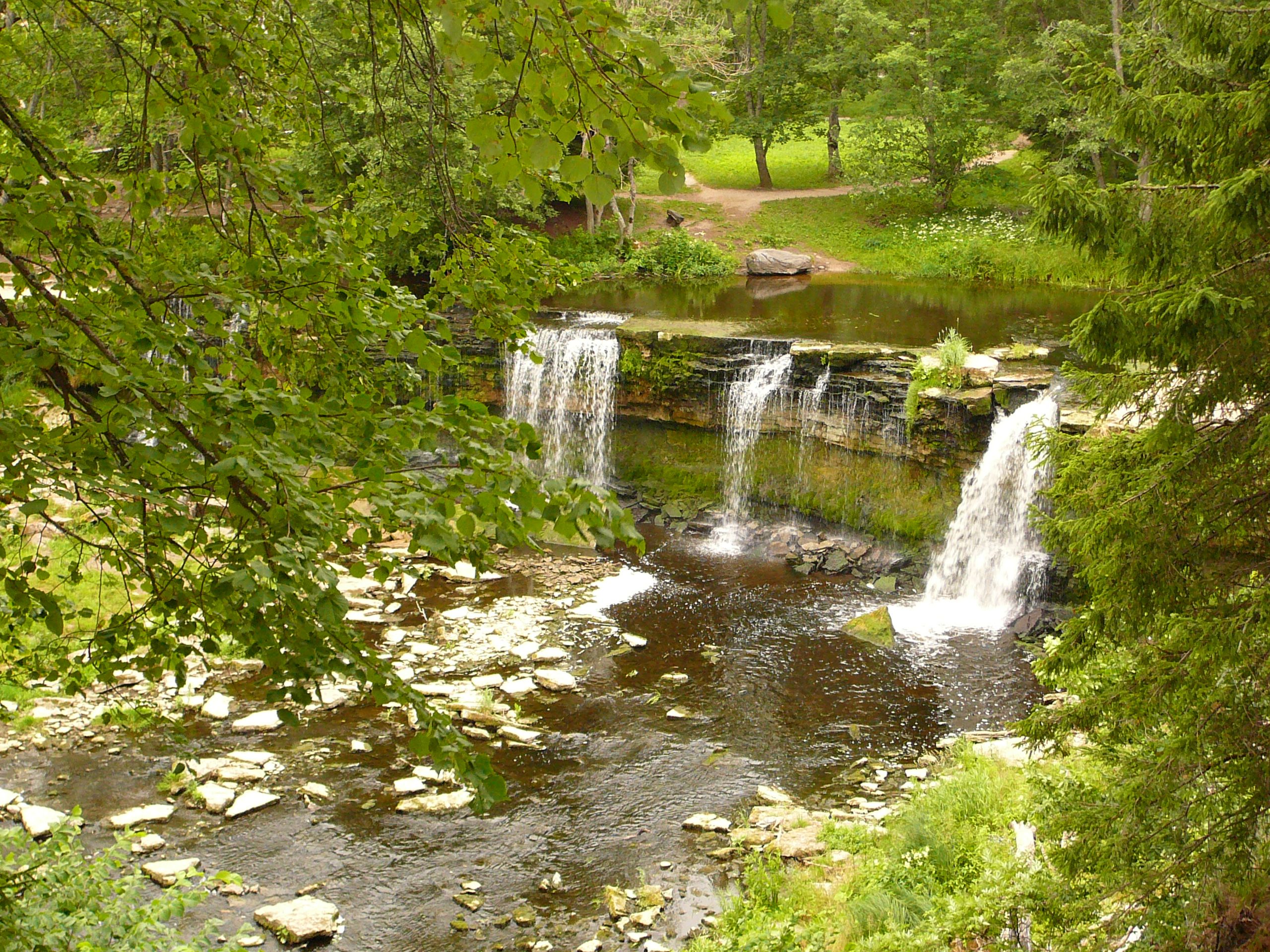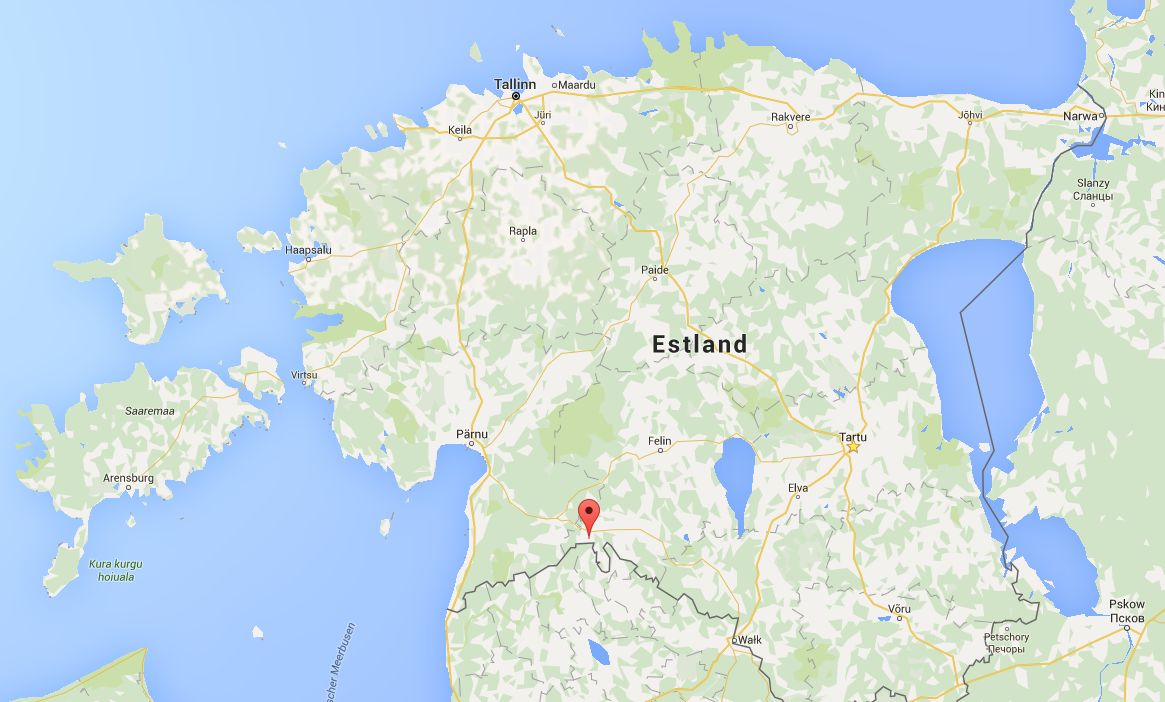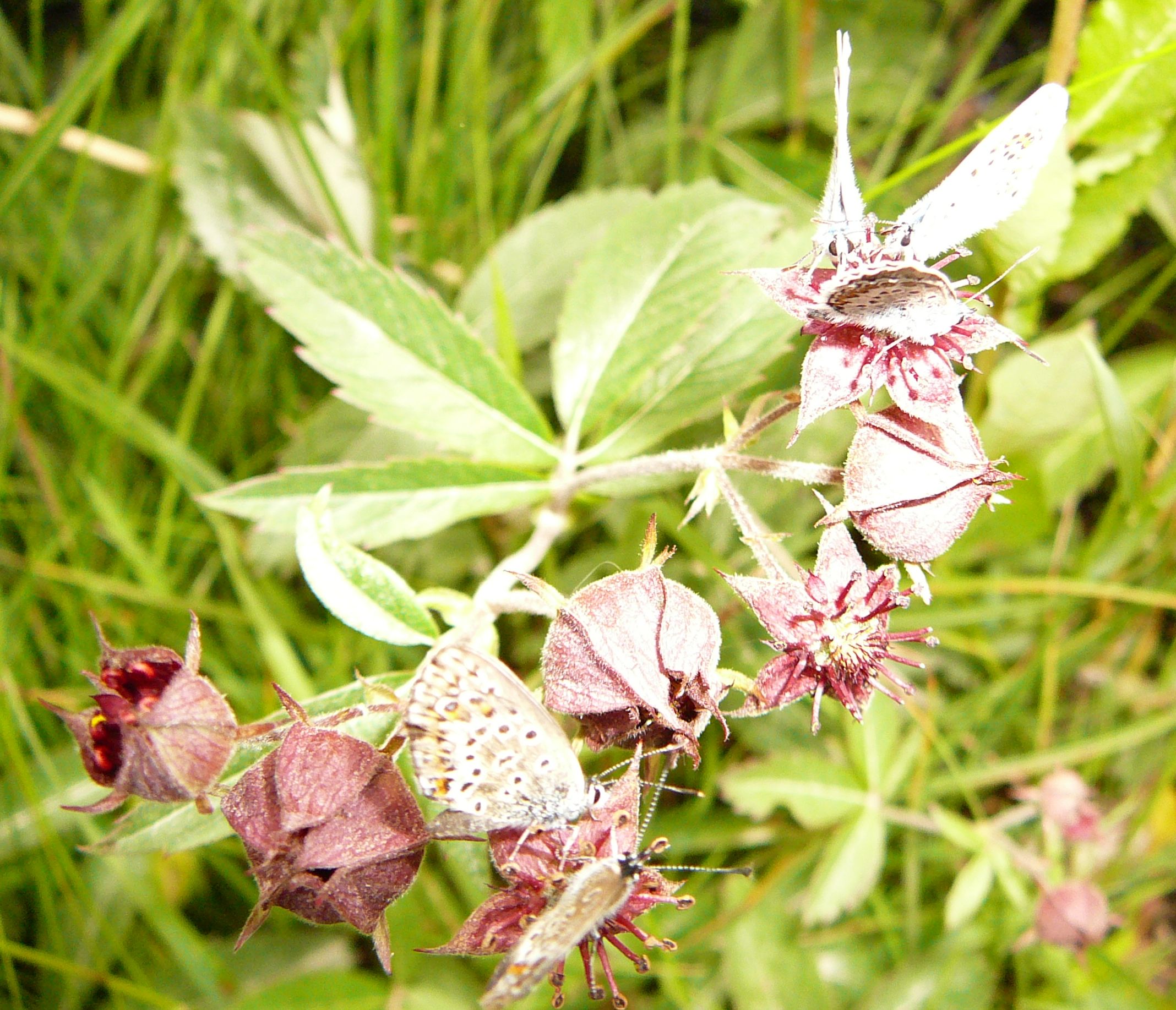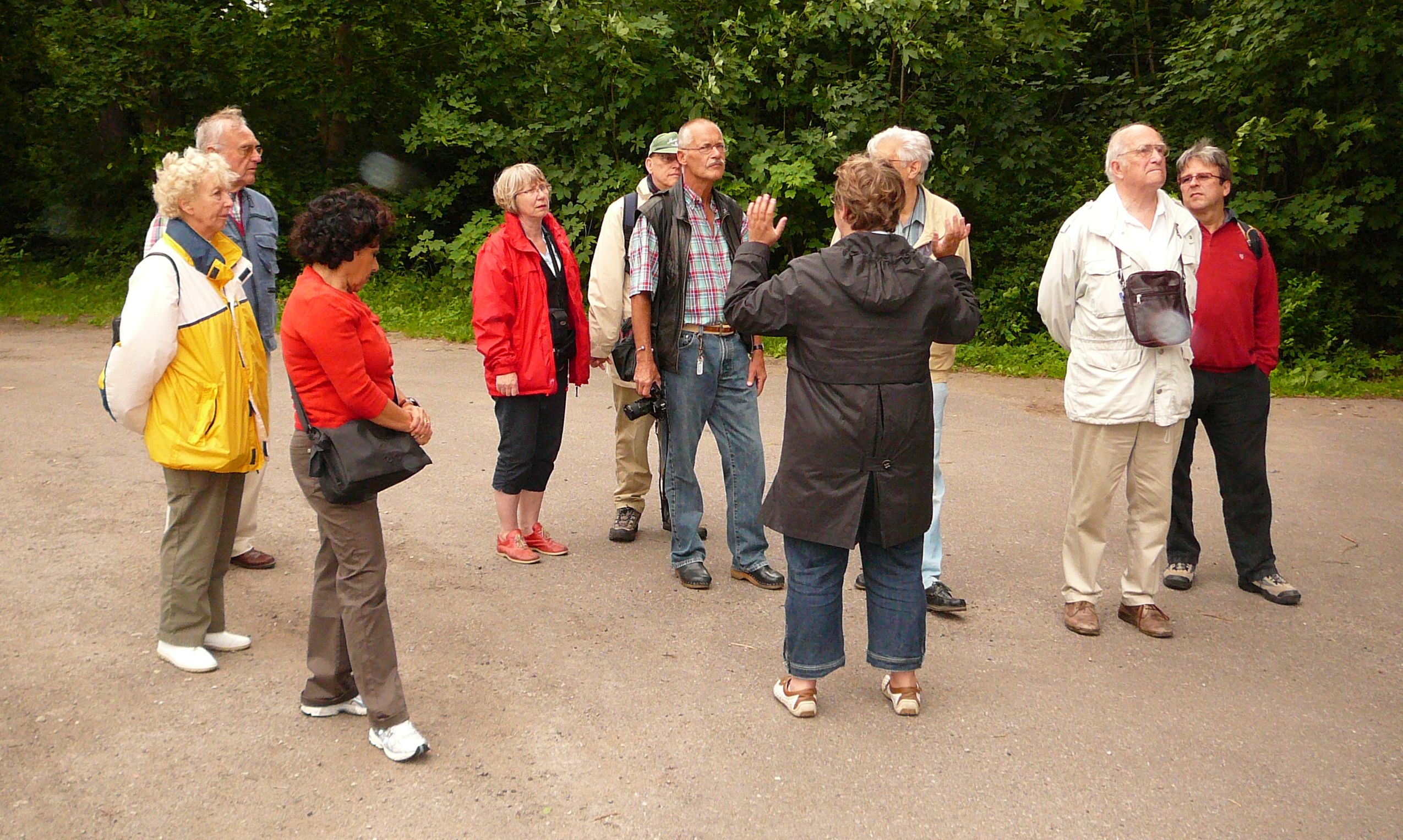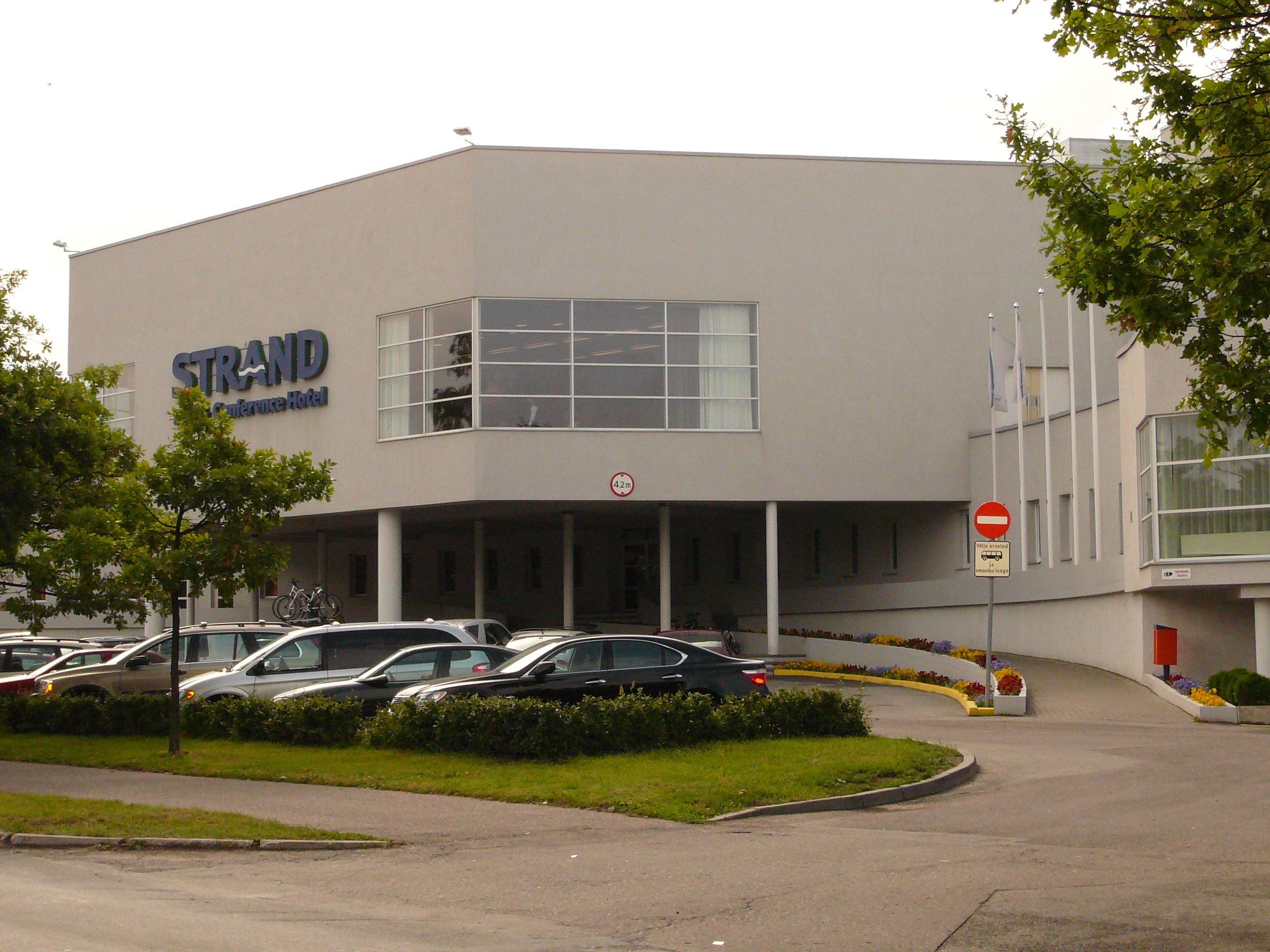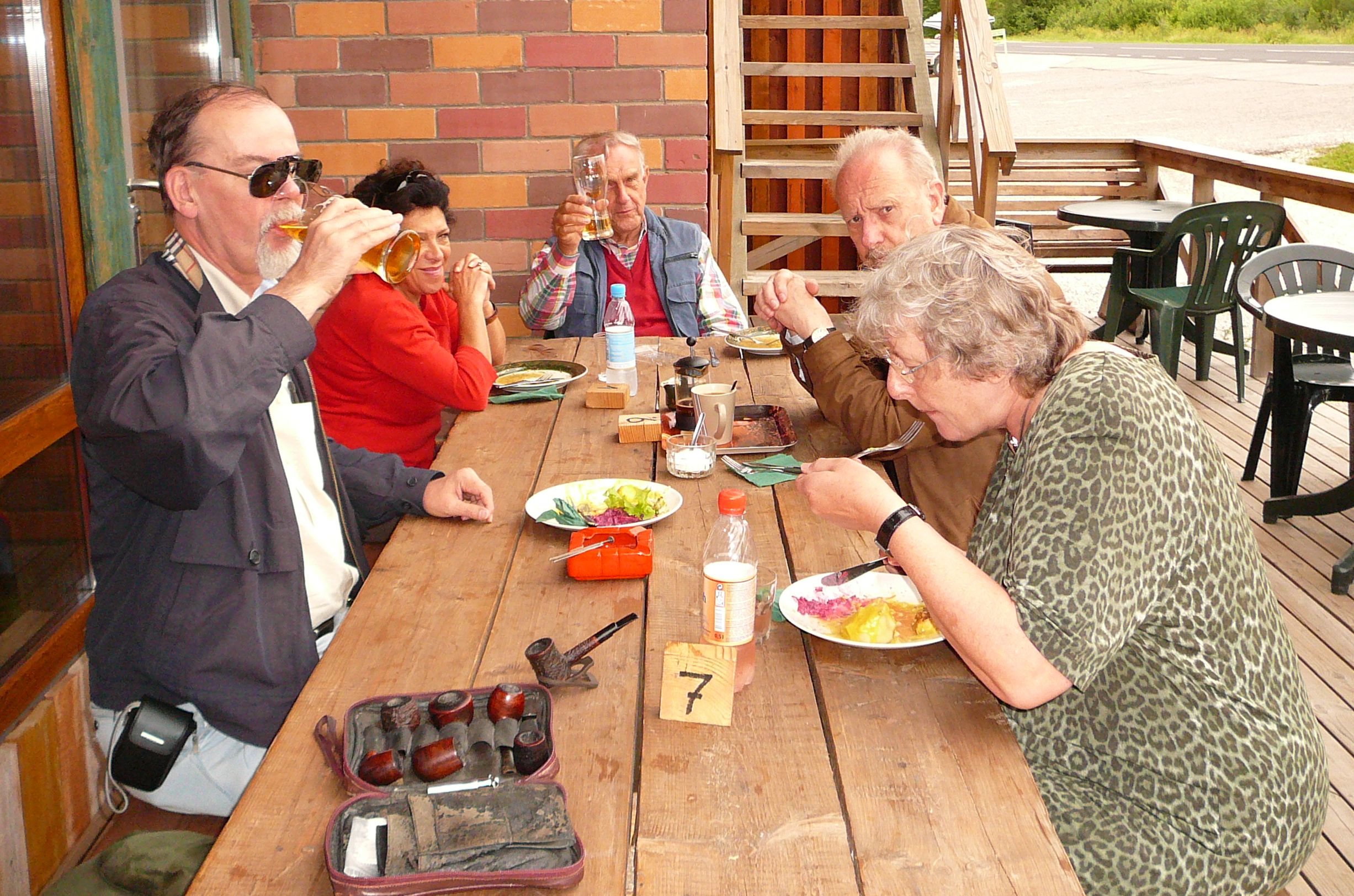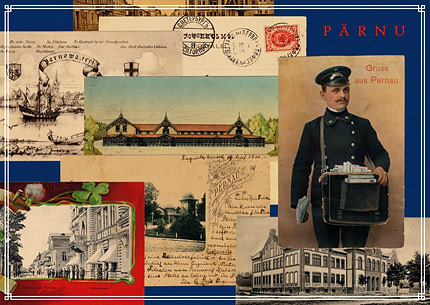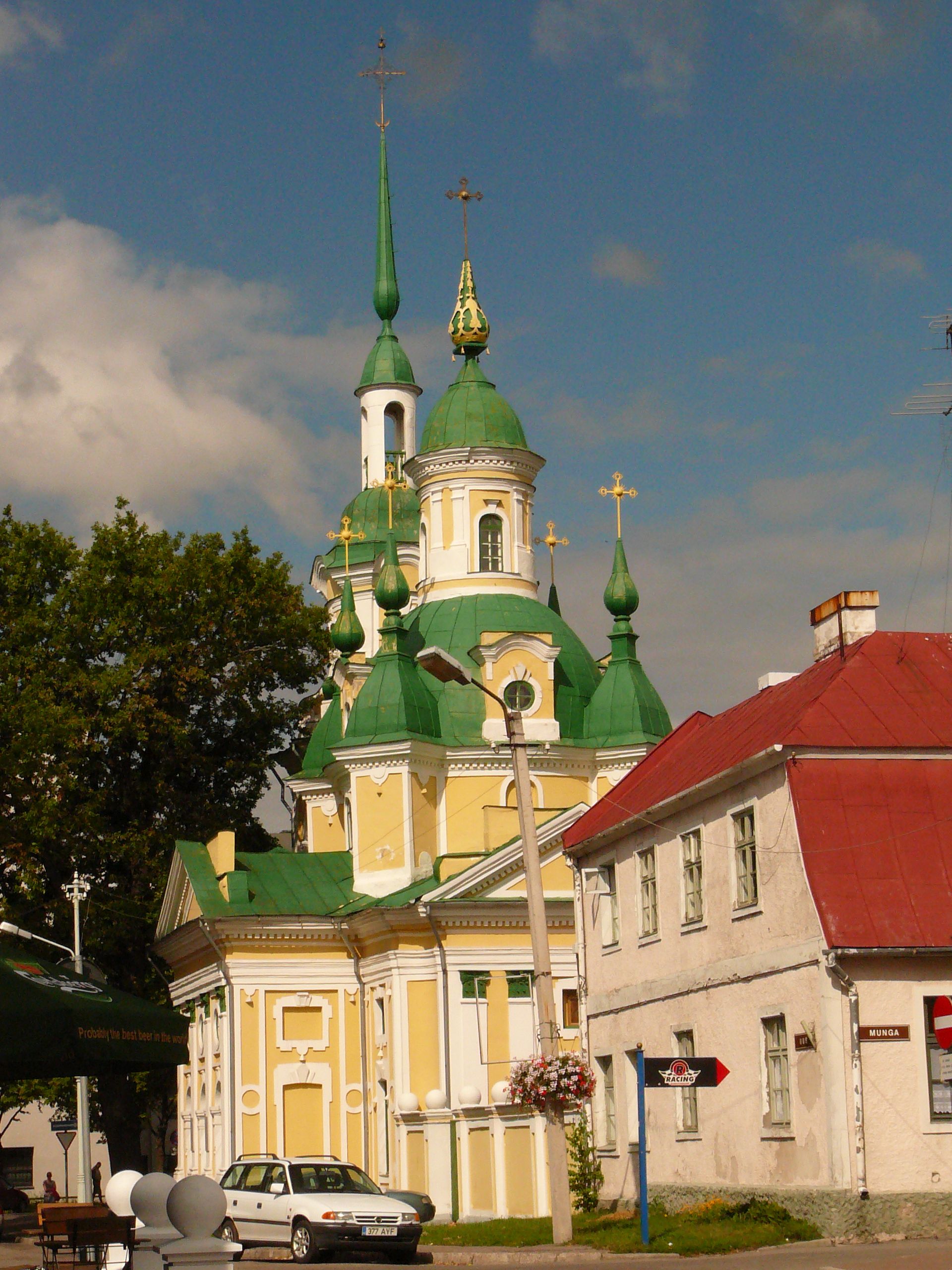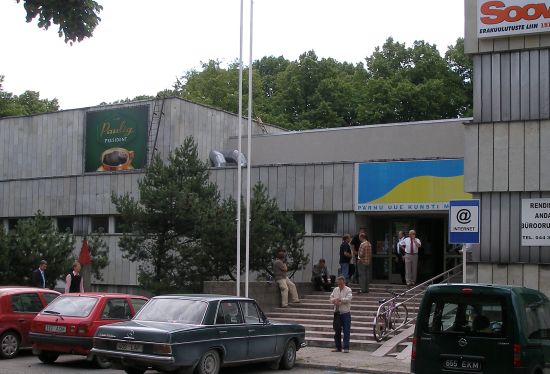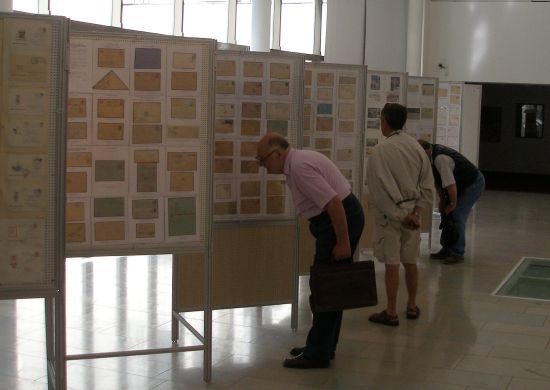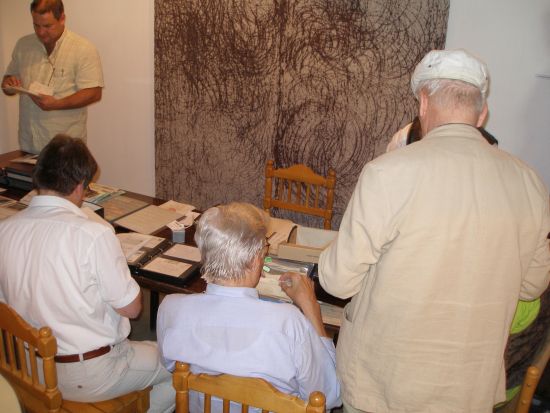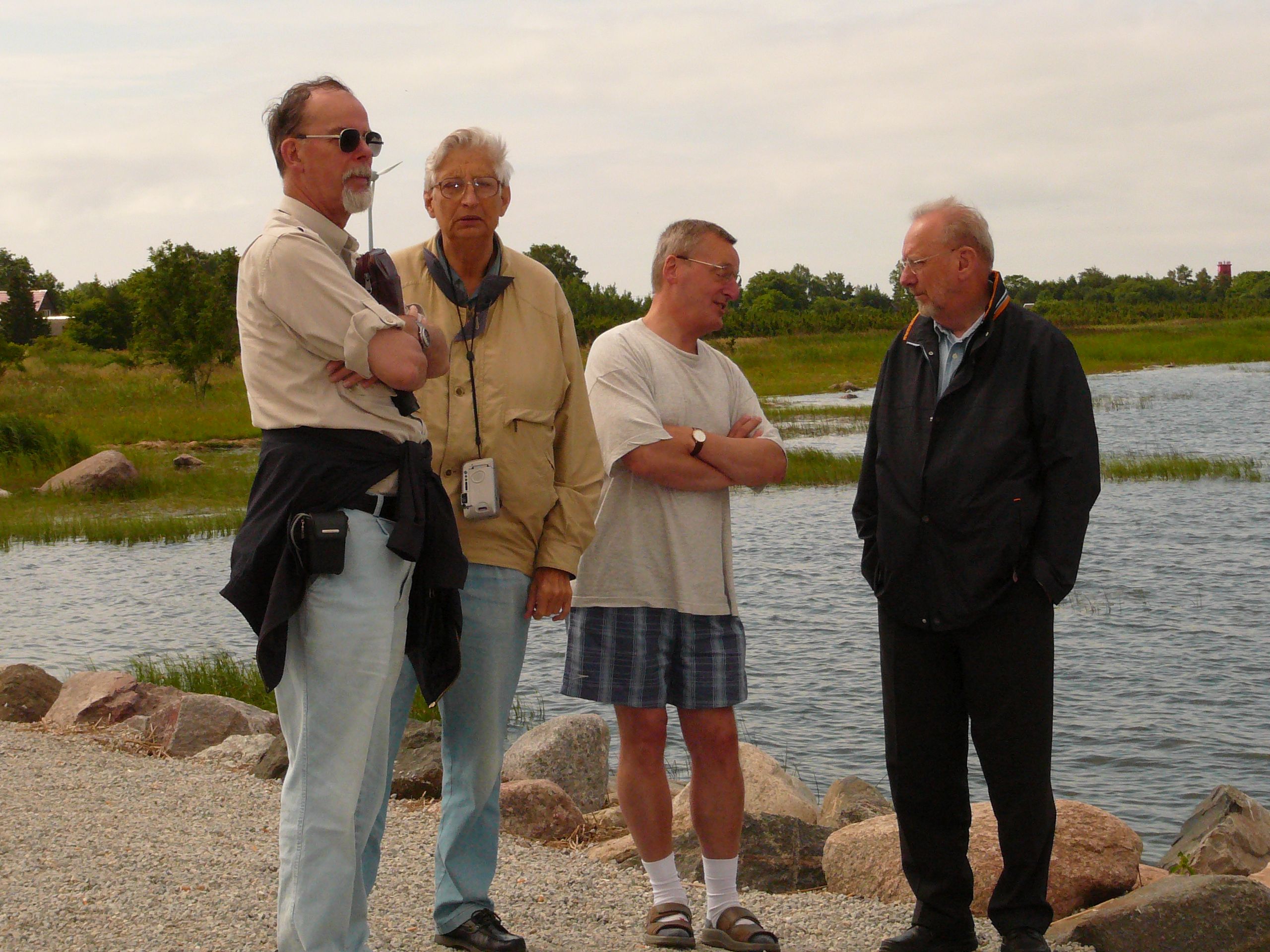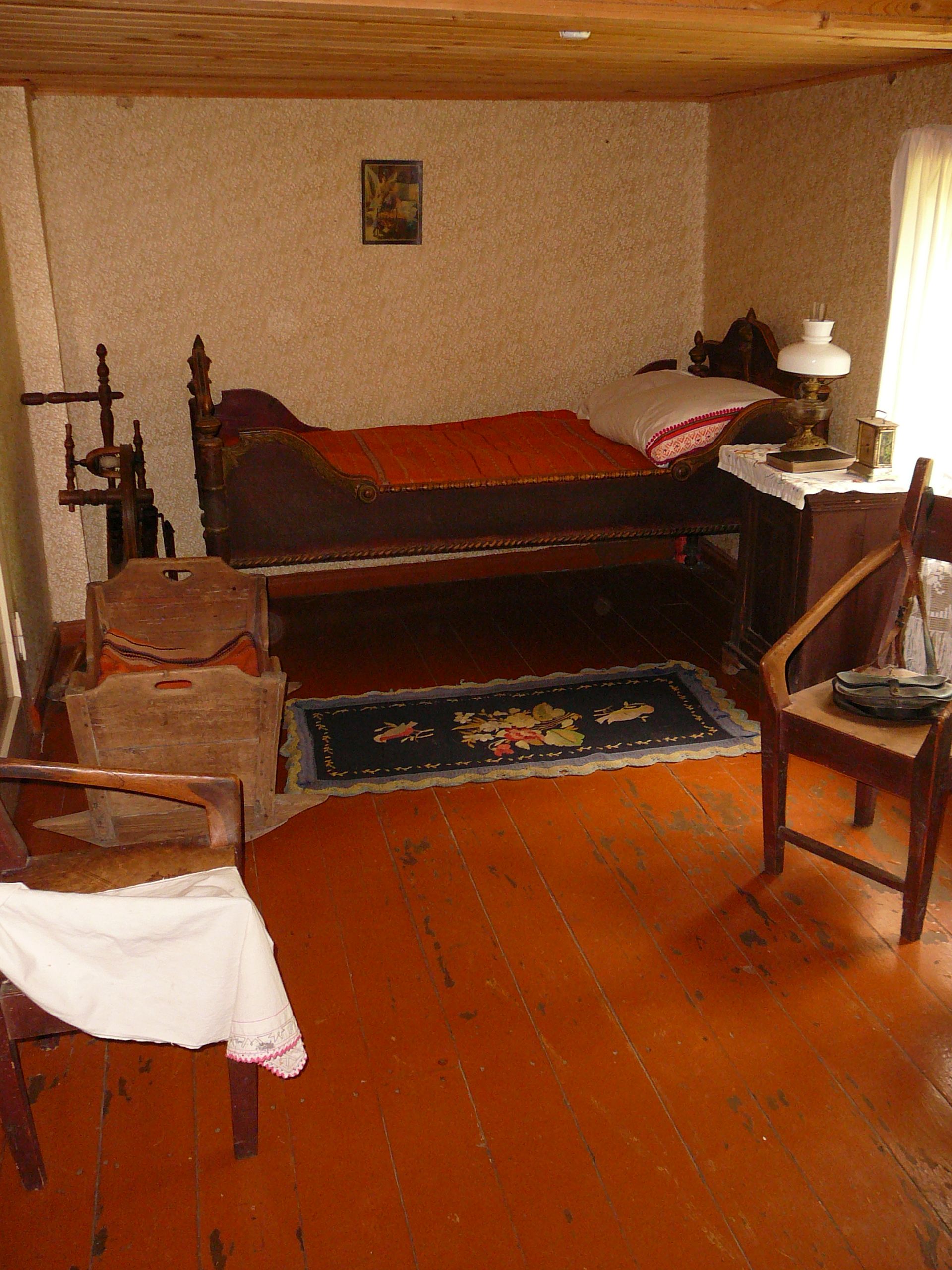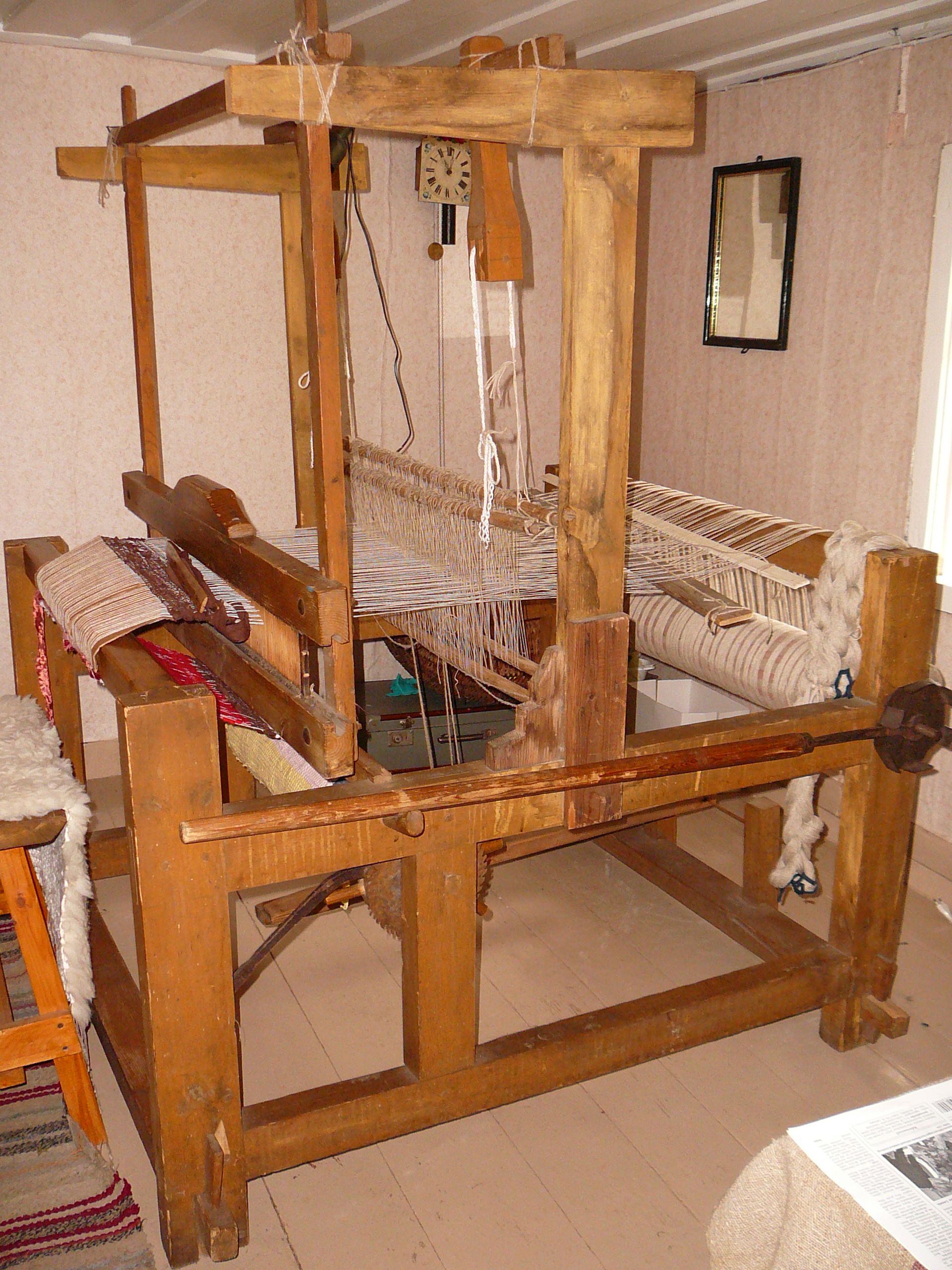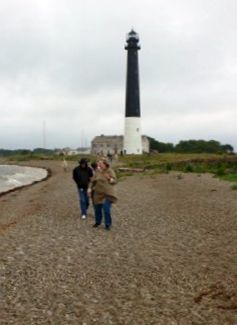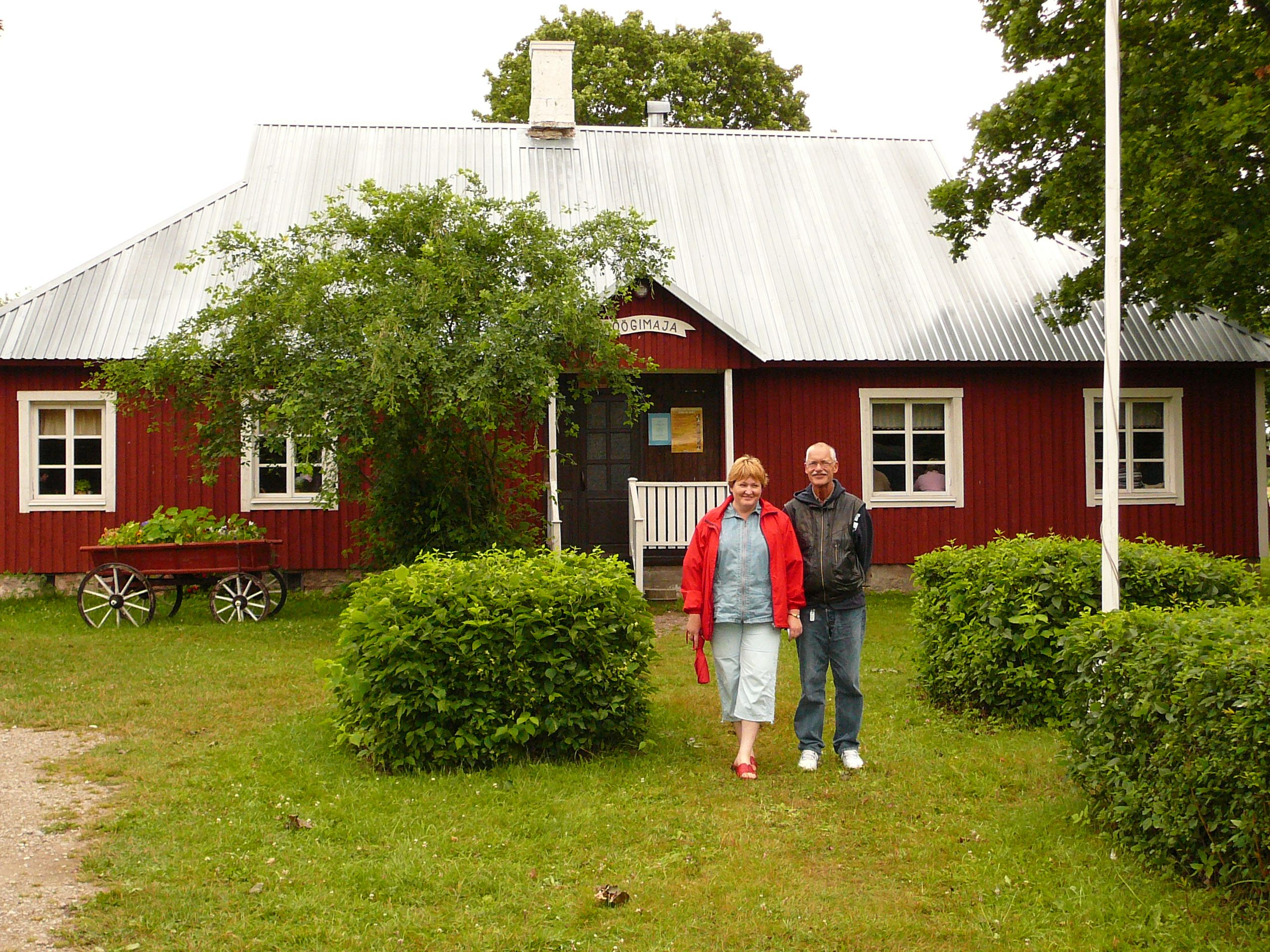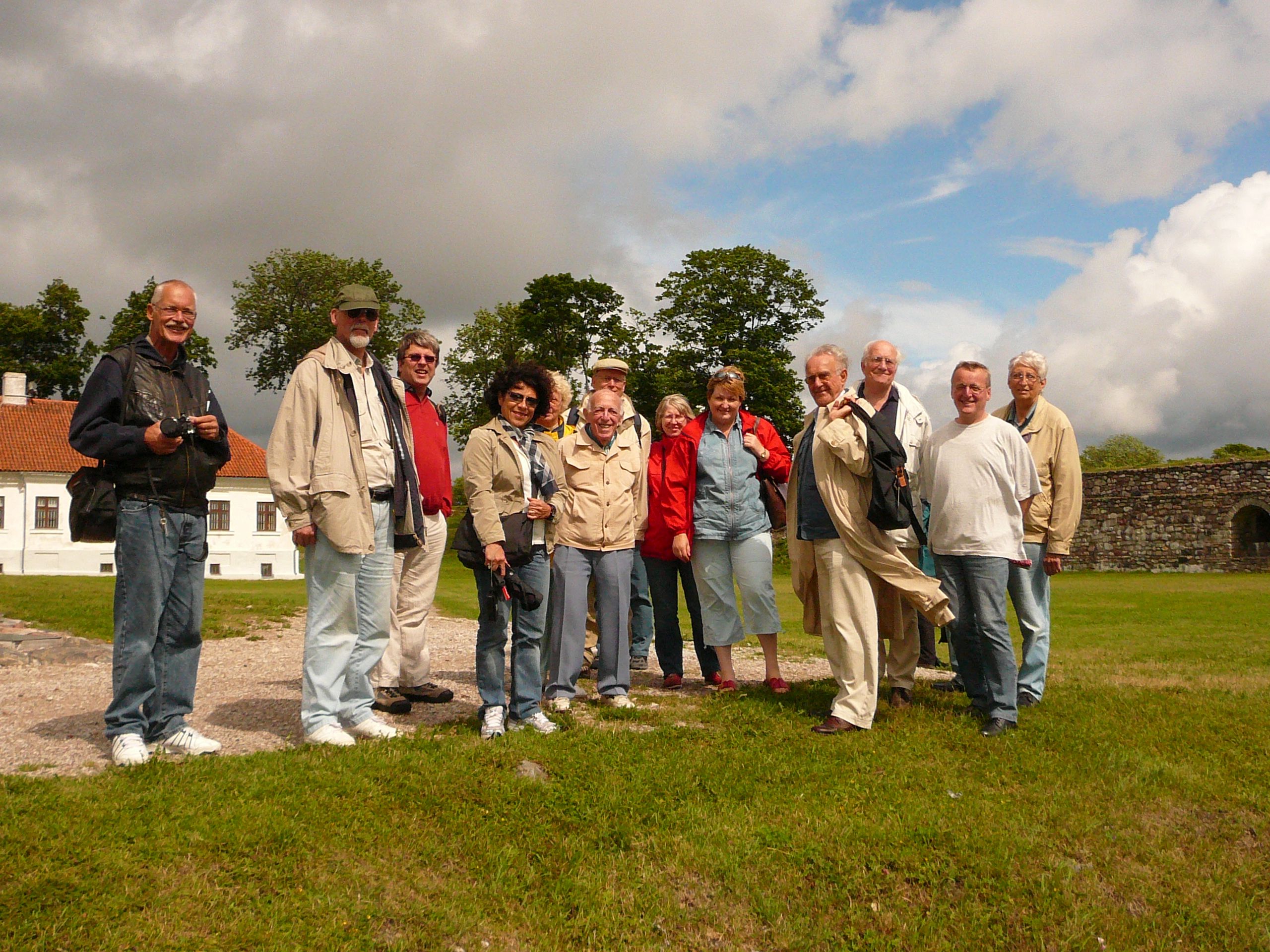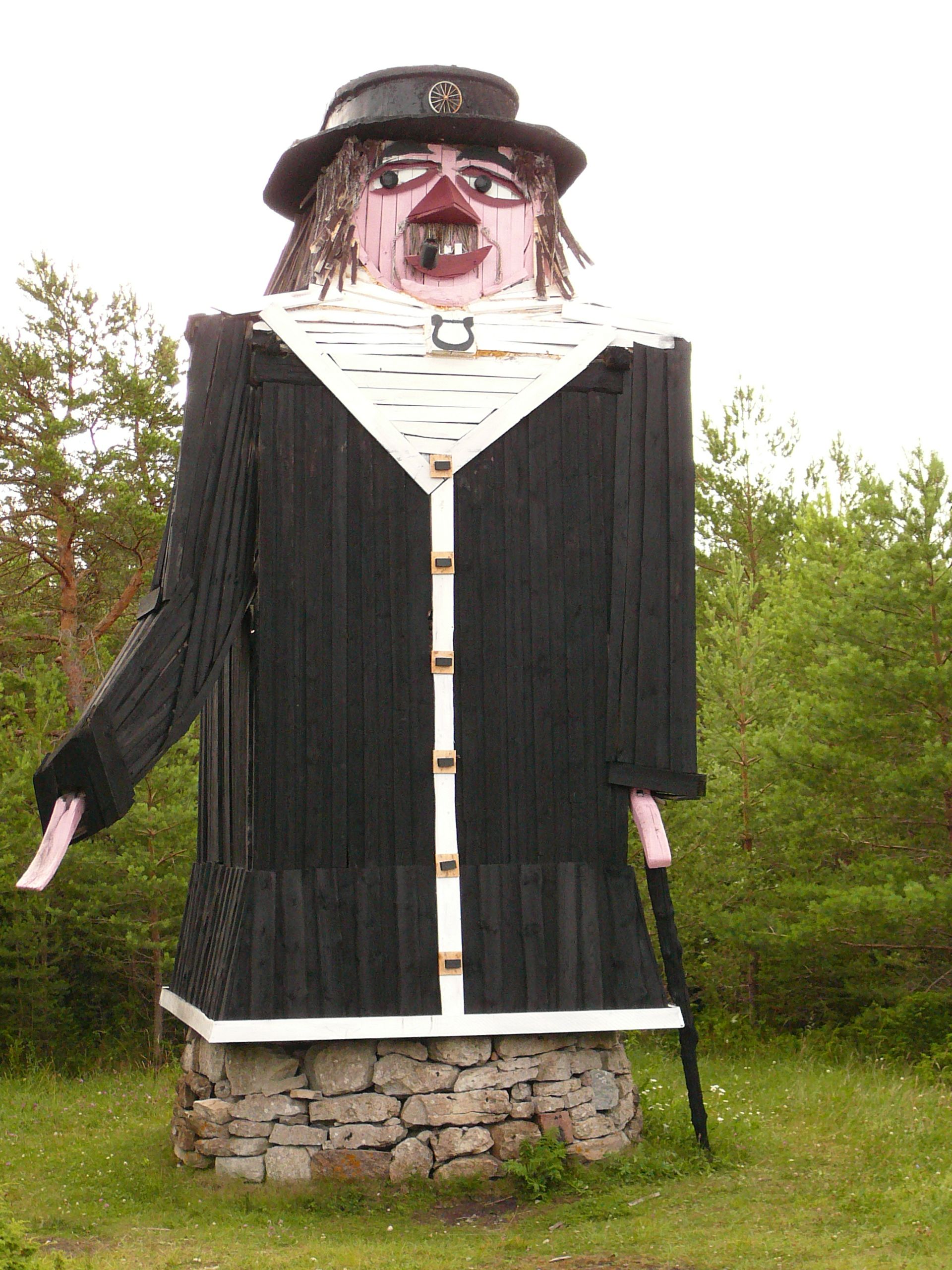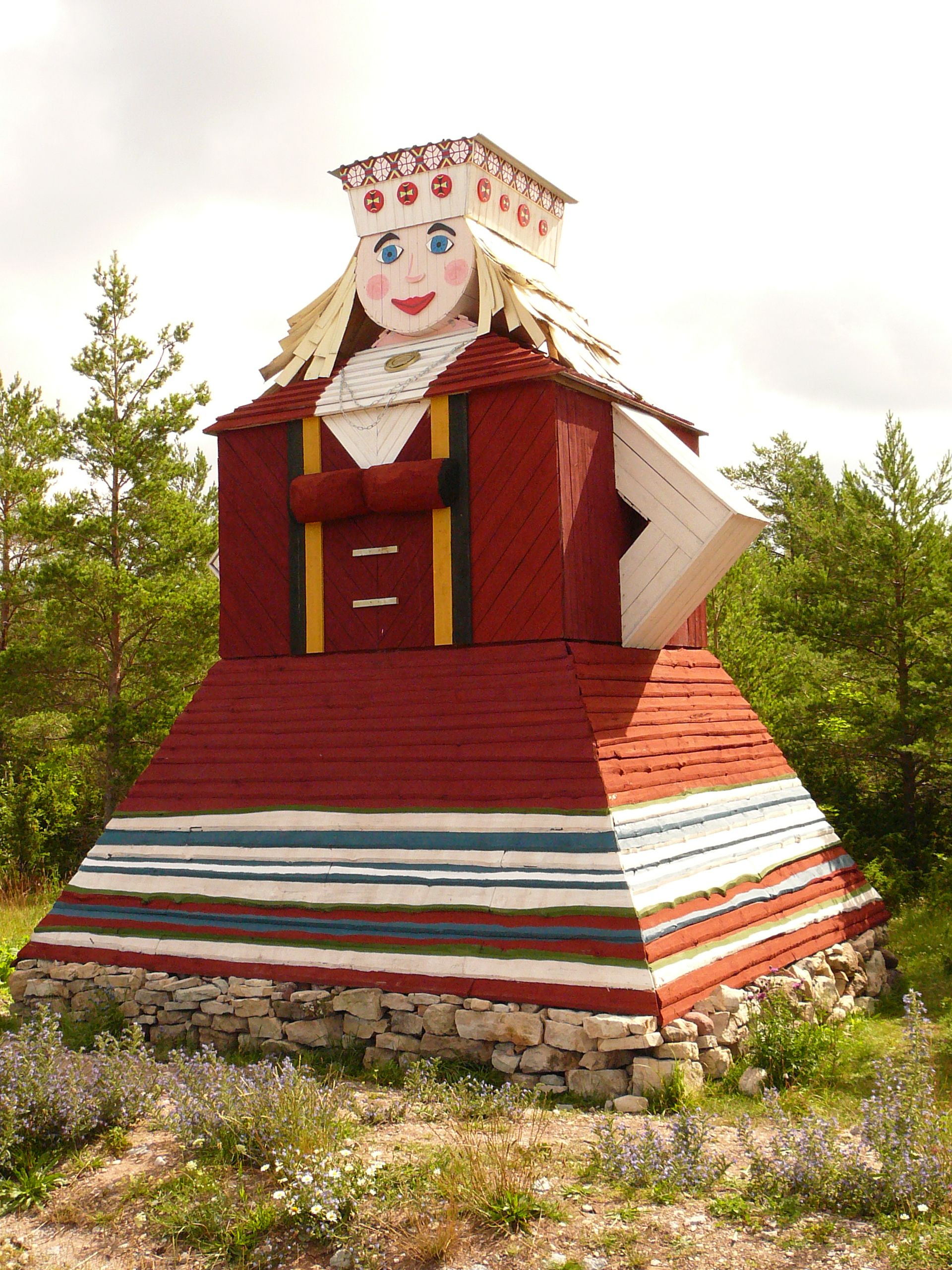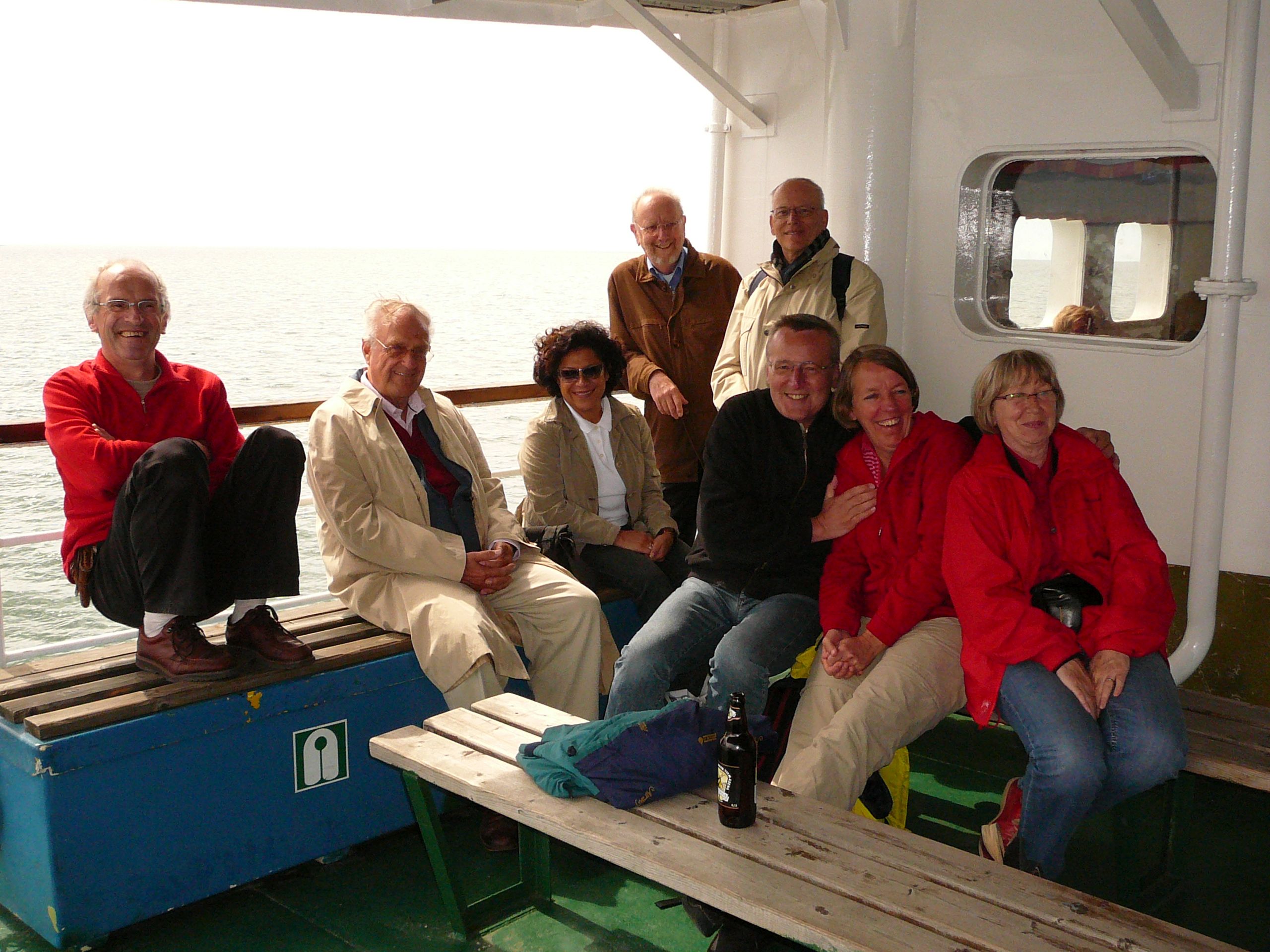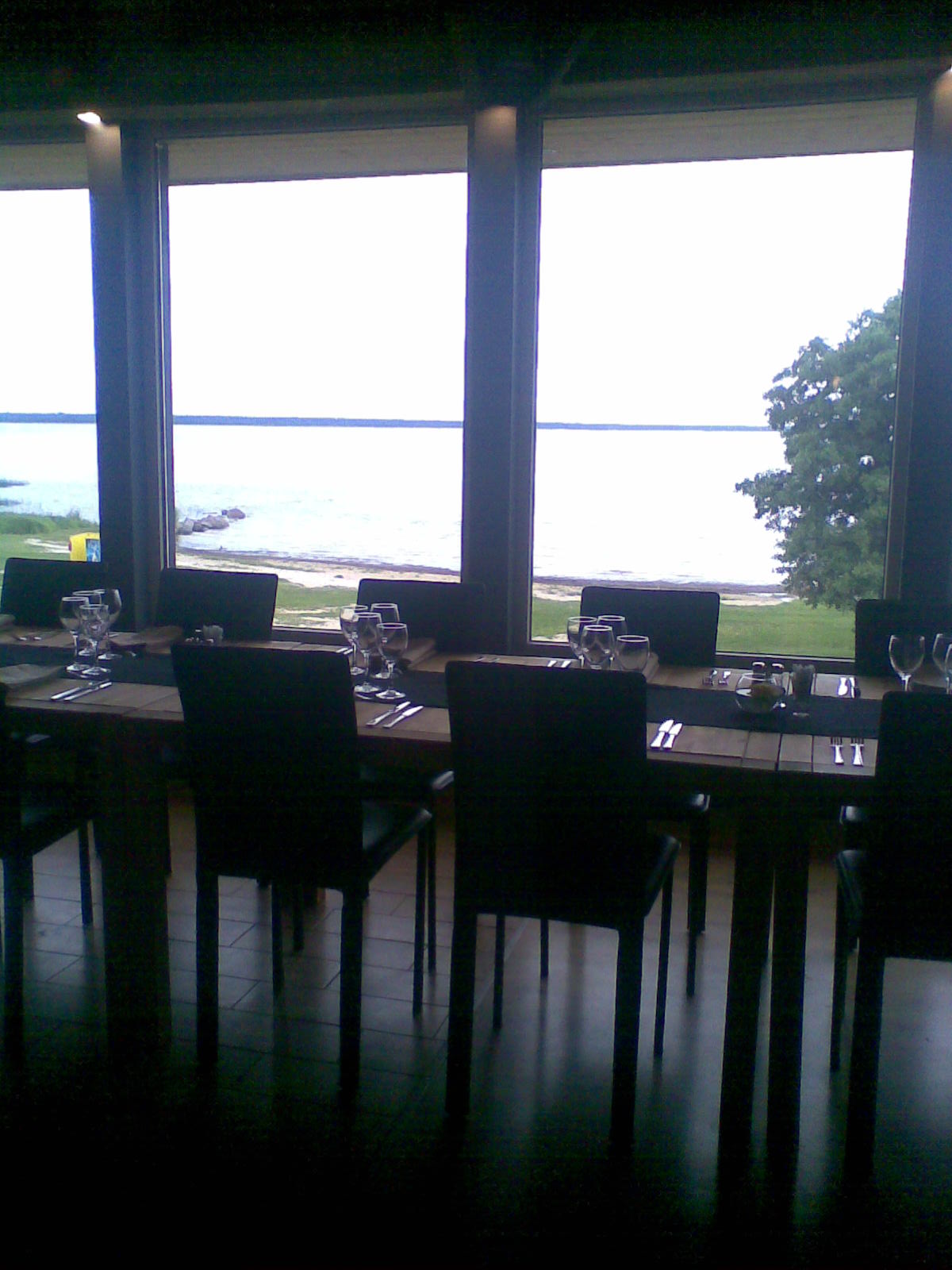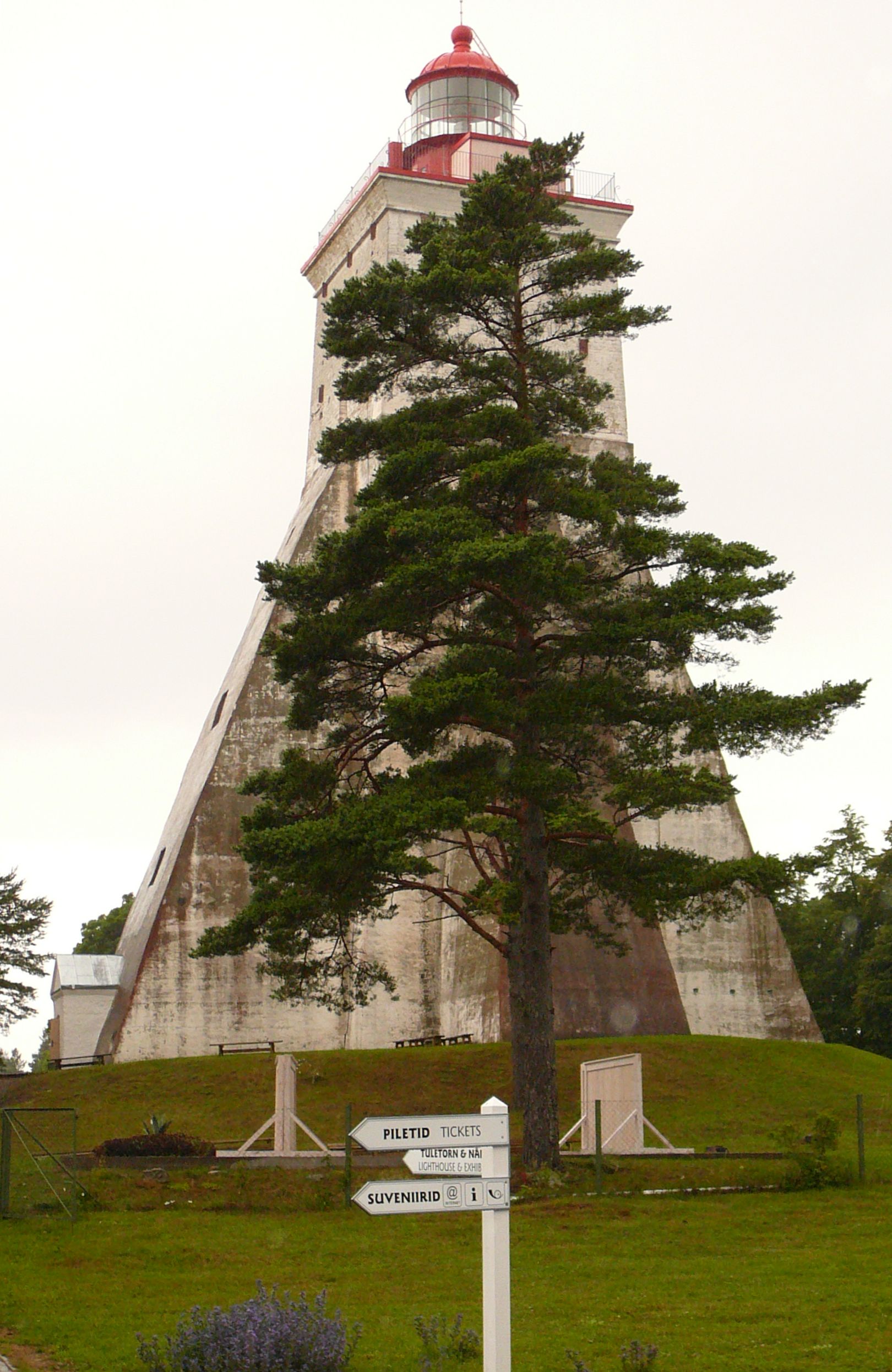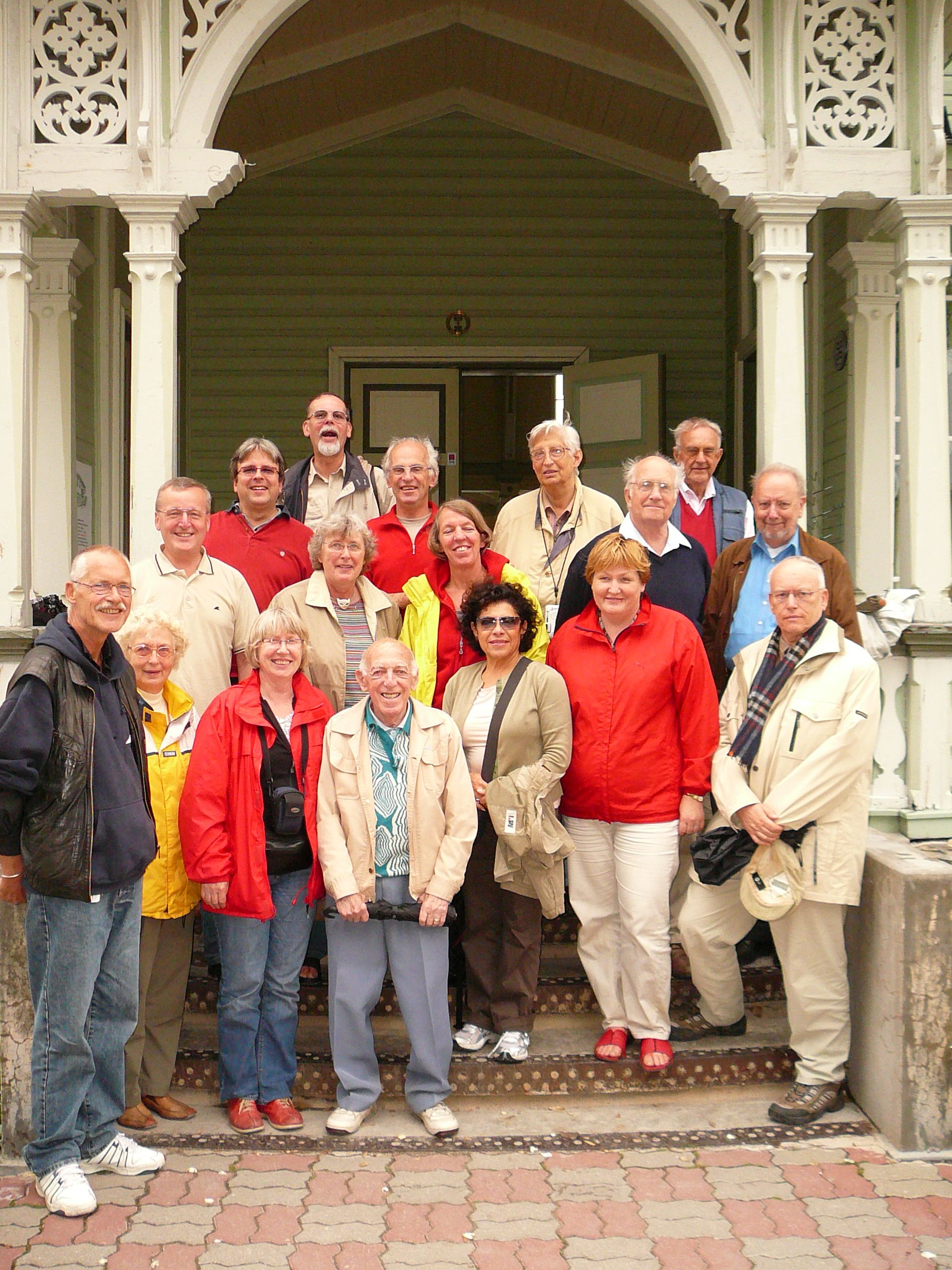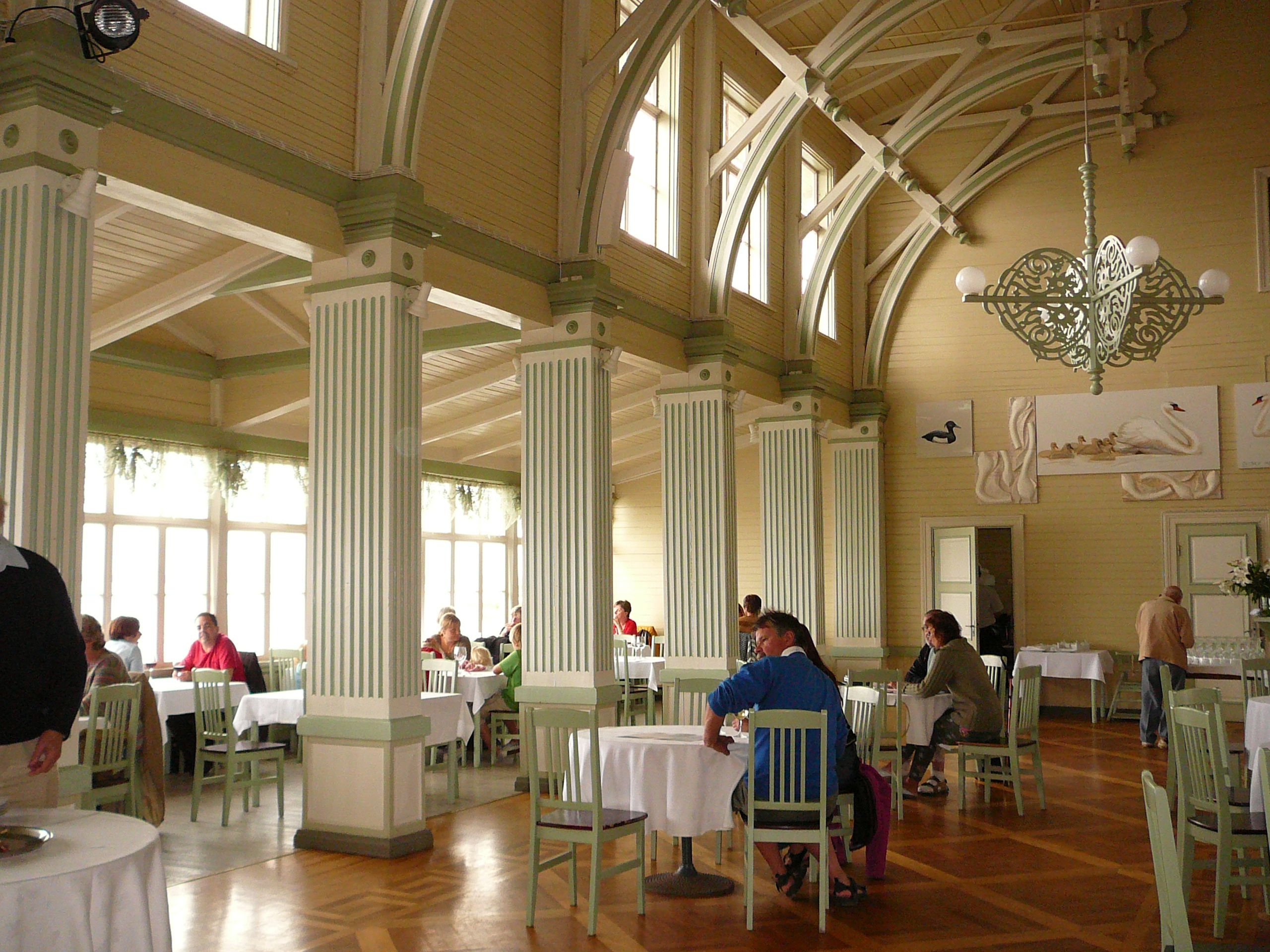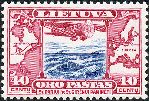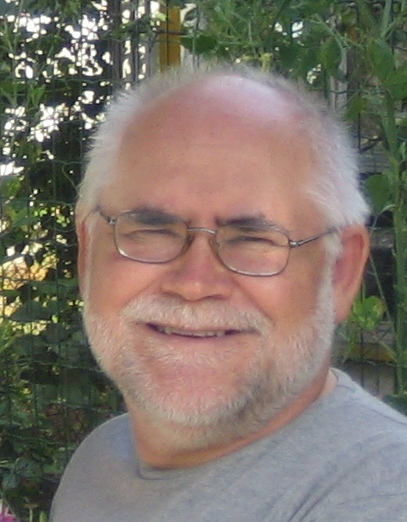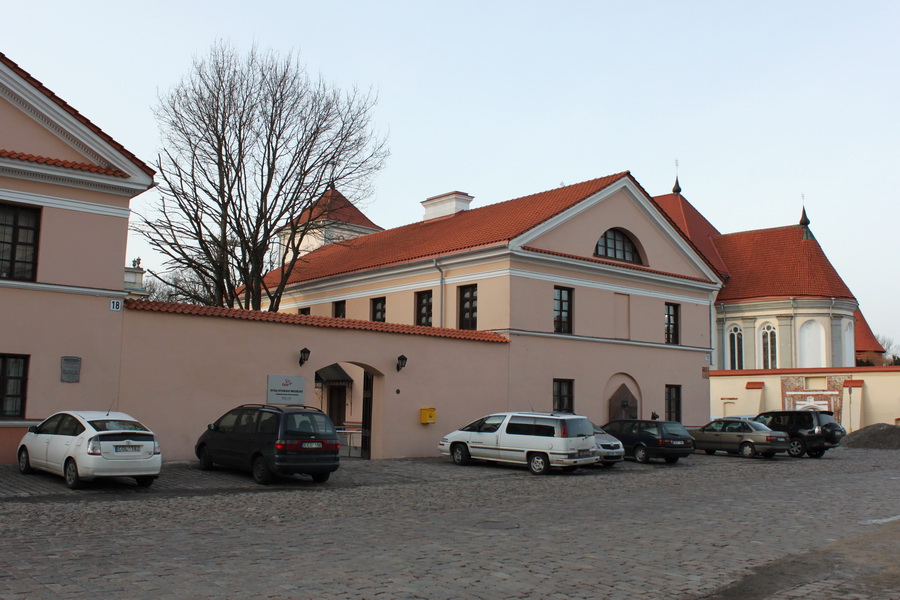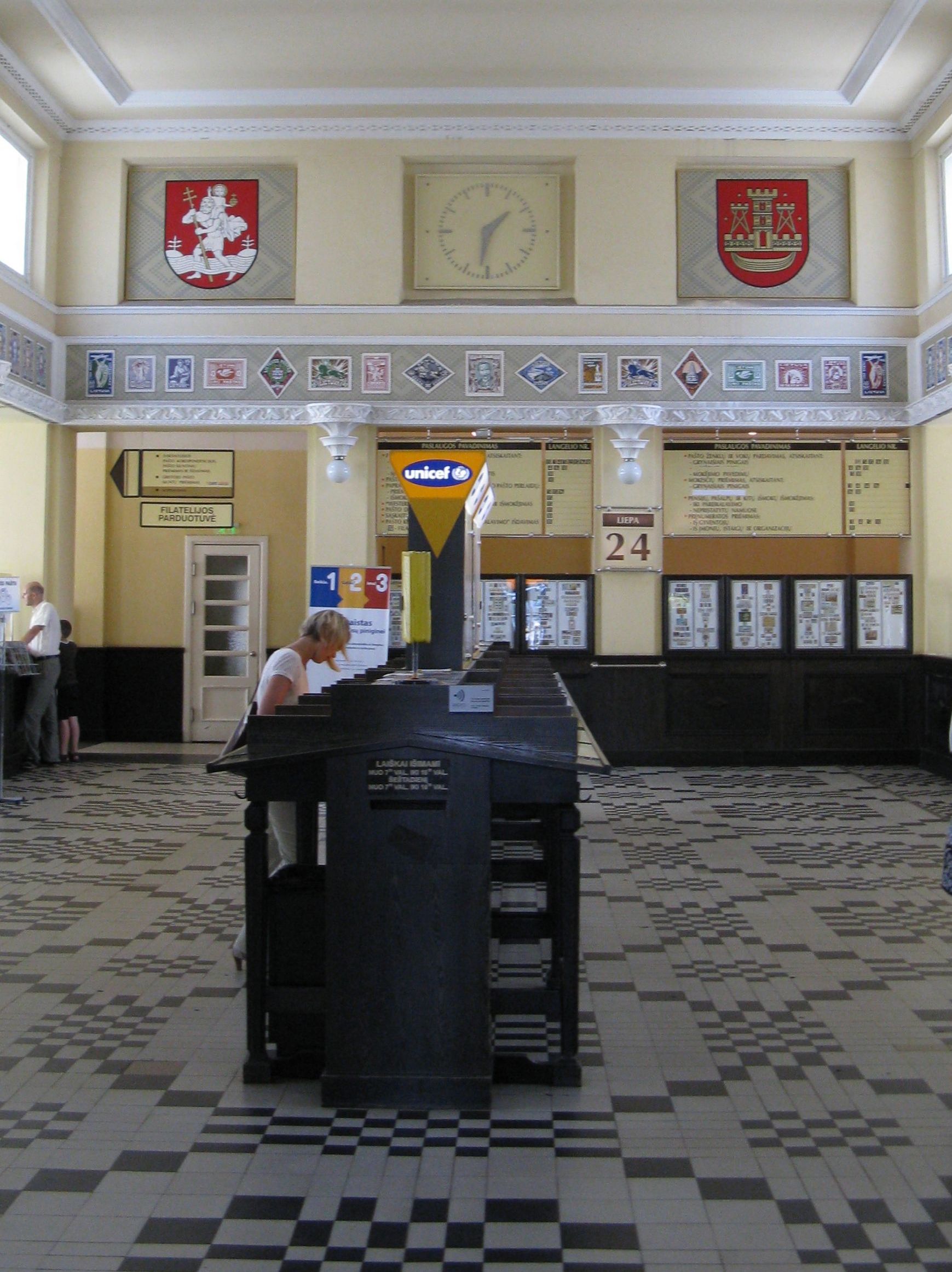Travelogues
The next trip?
Whether and when the next joint trip to the Baltic States will follow is up to you. Voluntary organisers please contact the Chairperson of the ArGe Baltikum.
If you are planning an individual or group trip to the Baltic States, for example wikitravel.org/en/Baltic_states gives basic travel information.
Journey through the Baltic States 2014
A selection by Friedhelm Doell from over 1200 pictures by Karl Lukas. If looking at these pictures has made you want to go on such a trip too, ... ist worked!
Day 6 is over, but this is only station no. 17 – from now on, the programme speed will be increased significantly...
Trip of the Research Foundation Lithuania
After several attempts and a long period of organisation, a small group of 8 participants could look forward to the next 12 days, which would lead us through Lithuania. Since the first trip was eight years ago, we wanted to repeat the good things, to experience more intensively what we had missed out on, but also to explore new things. The first small meeting of the group from Cologne and Hamburg took place at the Copenhagen airport, in contrast to the often hectic transit changes with plenty of time for coffee and smoke breaks (which were to provide us with many refreshing interruptions in the near future).
Vilnius
To everyone's surprise, the transfer from Vilnius airport took us to a noble monastery hotel on the edge of the old town. This comfort and location were really unexpected. A first walk through city showed a metropolis that had been restored from the ground up with a great sense of history, preparing for its role as one of the 2009 Capitals of Culture. Our round was completed by the arrival of Thomas Löbbering in the evening and the arrival of Leonas Veržbolauskas the following morning after an opulent breakfast in the monastery courtyard.
Over the next few days, Leonas proved to be the good spirit of the group, interpreter and advisor, alternately earning the nickname "professor" or "mountain goat".
The next two days (Sunday, Monday) were dedicated to Vilnius, as we had only had an incredible three hours to spare for this city during our last trip. Our local tour guide led us expertly through the city in bright weather (praise here to the Mare Baltikum travel agency, which had always organised competent and affable guides for us!).
Once again, the city showed itself to be well prepared for the big event the following year, when Lithuania celebrated its 1000th anniversary: almost all the construction sites had disappeared, all the buildings had been completely restored that we had seen eight years ago behind crumbling façades or concrete mixers, the number of street cafés and restaurants was now even greater. Unfortunately, the castle of Mindaugas at the cathedral was not to be completed by next year.
Of course, several of our members took advantage of the two days to search for treasures in second-hand bookshops and bookstores. Surprisingly, unlike Latvia and Estonia, there is hardly any material in the city! There were either no antiquarian bookshops or they were permanently closed, an experience repeated in other cities. In any case, hunters came up short on this trip.
But already in Vilnius, a second main topic of this trip announced itself next to philately: the country has culinary delights to offer in abundance, and at moderate prices in cosy surroundings, served in a friendly manner.
However, the time-pressed Central Europeans had to learn one thing right at the beginning: a good meal needs to be prepared freshly, and so we had to get used to waiting at least three quarters of an hour for the food and to shorten the time with alus (=beer) or a little pipe.
Philatelic
There were three philatelic "events" for the group during our stay in Vilnius: first, we met the head of the philately department at the National Museum, who presented us with an emerging book on the period up to 1940 with extraordinary cover illustrations ("... I would also like to have such a piece in my collection ..." was a classic quote on this).
Secondly, Bernhard "Tony" Fels used his "cake contacts" to take us to the dispatch office of the Lithuanian Post. Not only are subscribers supplied there, but the stamps are also expedited to the district post offices. Of course, you can also get stamps and postmarks yourself.
Two particular highlights were revealed there:
On a shelf we found a printing molette for the Mare Balticum stamp booklets, beautifully polished and completely unnoticed by the staff there! In any case, our enthusiastic interest was met with friendly incomprehension.
Then we went to an archive, and certainly only a few philatelists have been to such an archive! We were allowed to visit the UPU stocks of the Lithuanian Post and were kindly invited to browse through the albums, which we did.
The Central Distribution Post Office in Vilnius was also an item on the programme that Tony Fels had made possible for us. An extremely friendly director welcomed us, showed us around and let us take photos to our hearts' content and even stamp them ourselves! In view of the abundance of stamps, some of us said goodbye to the idea of collecting anything like that.
In any case, this visit gave us an extraordinary experience: an invaluable insight into the internals of the Lithuanian Post.
Trakai Castle and Druskininkai
On Tuesday 22 July, we went to Lithuania's historical site par excellence, Trakai Castle. Restored castle and exhibition halls provide an impressive, modernly presented insight into Lithuanian history. Unfortunately for us, we were not the only ones interested!
Lunch, on Leonas' recommendation, introduced us to delicious and down-to-earth Caraean cuisine, with cabbage soup in a baked black bread pot.
We then continued on to Druskininkai for a well-deserved rest, for this spa town with its beautiful scenic location on the banks of the Memel River and its "beauty water" exudes a peace and tranquillity that is second to none.
Before that, a visit to a nationally known wood carver, who has impressive works carved from tree wood, succeeded.
In keeping with the programme and expectedly impressive, the visit to the "Grūtas Park" proved to be a success. This is an area known throughout Europe where statues, sculptures and devotional objects from the Soviet era are collected by the "mushroom millionaire" Viliumas Malinauskas (who received the Ig Nobel Prize for this).
Druskininkai also offers a philatelic side in the form of the workplace of Vytautas Kazimieras (Kažys) Jonynas, a Lithuanian artist who designed the postage stamp series of the French Zone. In the opinion of many philatelists, these are some of the most beautiful stamps in Germany!
After initial disappointment (the museum was closed), however, Leonas managed to find a museum employee, as so often, but she hardly knew anything about their holdings. Unfortunately, there were no sketches there, but there was a good overview of the artistic work (including sketchpad and wooden chisel).
Kaunas
After a relaxing day in Druskininkai, we went to Kaunas, the former capital, in bright weather. The bus dropped us off at a first-class hotel near the pedestrian zone; the next two days were up to everyone. A visit to the Fort IX memorial and a guided tour of the city were offered. Here, some of us actually found the antiquarian bookshops we had been missing, so that now the due presentation of the acquired pieces could take place as usual on other trips.
The city itself offers a lot for historically interested tourists and philatelists (see the report on the visit to Kaunas in summer 2000).
The monumental basilica, an impressive example of 1930s capital architecture, was now finished, consecrated and easily accessible by funicular.
The presidential "palace", more of a mansion at the entrance to the old town, could now also be visited and impressed with a picture gallery in the garden, including an image of a post box being emptied with a chauffeur (see picture).
A later highlight was the meeting with the philatelic association in the Kaunas Postal Museum, whose members were not to be found in the expected festive outfit (why had I actually taken my jacket with me on the trip?), but were busy sweating over the installation of exhibition boards. At the collections on display especially for us, spirited to heated discussions immediately sprang up, because remarkable and in some cases never-before-seen pieces of the extra class were on offer (".... I would also like to have something like that in my collection ...."), whereupon the official part was almost forgotten, which was then skilfully abbreviated by Mr Uspuras.
The exchange with the philatelists there provided us with invaluable new insights, and the coffee was not neglected either...
Memelland and Curonian Spit
Now came another highlight of our journey, the trip to Memelland and the Curonian Spit. The sun was kind to us again and showed the Memel valley in lush green. Of course, we also traded and bought things on the trip!
After a stopover in Heydekrug / Šilutė with the most beautiful post office of the Memelland and almost the best Zeppelinai, we reached the Delta, where a beautiful boat crossing directly to Nida awaited us.
Now it was time for three days of recreation, but the socialism we thought was gone in Grutas Park caught up with us once again in the form of the hotel, where we undertook an unintentional journey back in time..
The Spit itself is rightly a tourist hotspot with beautiful scenery, old fishermen's houses and perfect food; here, in the absence of antique shops, the culinary aspect finally moved to the forefront of the trip.
We learned about new creations again, such as chef's roast pork with cherry sauce and bacon-wrapped banana on mini fries.
The Spit as a natural gem is recommended to everyone, especially as it is easy to reach via Palanga airport. With the arrival of our highly motivated and extraordinarily well-informed guide, retired naval officer Mr Bohlmann, the armed forces in our group were now complete (army, navy, air force, press, customs, civilian service). Mr Bohlmann brought us closer to the Spit in a full-day excursion with many a sweaty dune hike.
Klaipėda (Memel)
After breakfast at Post-Socialist Realism, we then set off for Kleipėda / Memel on Tuesday 29.7, not without having visited the impressive maritime museum on the famous breakwater at the harbour exit.
During the subsequent guided tour of the city, Mr. Bohlmann demonstrated his precise knowledge one after the other, took us to an art gallery where Thomas Löbbering immediately acquired an embellishment for his home, to the old (nice staff) and the new (unfriendly staff) post office and, as a finale, to a cellar vault with perfect food, devised by a Ukrainian chef himself.
The day ended with a relaxed round of beers on the market square opposite the "Ännchen" (von Tharau).
Back to Vilnius
The next day, Wednesday 30 July, we felt a bit like saying goodbye as we headed back to Vilnius. On the way, we said goodbye to our "professor" Leonas. We thanked him for his invaluable help, his kind nature and wished him continued energy and good health!
Everyone used the remaining time until departure the next day to catch up on what had been left undone in the beginning. I finally drove up to Gediminasburg Castle and was able to catch a glimpse of the castle under construction in its entirety.
The visit to the "Signatarhaus" in the pedestrian zone, which had finally opened, proved to be an extraordinary stroke of luck, because a subtle Lithuanian historian was able to provide me with many hitherto unknown details and illustrations, which were also of importance for the handbook. This house should be looked at more closely next time!
After dinner in the already tried and tested restaurant within reach of the Ostra Brama, everyone enjoyed the excellent monastery hotel once again. After breakfast, we said goodbye. This trip, like the first one, will remain in our good memories for a long time. It offered a lively city, a country atmosphere and a typical Lithuanian landscape.
The professional exchange could have been more extensive; the one-time meeting in Kaunas was not enough. However, one should not forget that Lithuanian philatelists are mostly working and have little time to spare during the week.
In any case, we took away many new insights, the handbook was again richer by several facets! Many impressions showed us that the new Lithuania has achieved more than could have been foreseen eight years earlier, and these impressions could well be deepened in another trip, then perhaps with a concentration on the central and eastern parts. Kaunas and Klaipeda are by no means "ticked off" yet either.
The 2008 trip was a complete success thanks to the comprehensive planning and preparation by Bernhard 'Tony' Fels and Dr. Peter Feustel. Our sincere thanks go to all those who were involved in the organisation and realisation of the trip!
Round trip of the Estonia Working Group
For the year 2007, the annals of the Estonia Working Group contain two reports on the same journey. This offers the reader the opportunity to get to know the diversity of collectors and perspectives in our working group, because: where Estonia is written on the cover, there is by no means always the same thing in it!
As both reports are structured by day, we can present the views and insights of our two authors synoptically – pictures by Renate Feustel complement the recollections.
All good things come in threes
– a small travel diary –
(Michael Wieneke)
Head aega!
or: Which of the three Baltic states is Estonia?
Notes and thoughts (possible factual inaccuracies included) on the occasion of a round trip to Estonia by German and Dutch philatelists (Friedhelm Doell)
Day 0 - Arrival
On the plane of Estonian Air the first Estonian newspaper in a long time – a Postimees. One article reports on the unrest surrounding the relocation of a bronze statue of a Soviet soldier in Tallinn and the wave of public outrage and chanting by Russian-born residents of Estonia and even the Russian government. In a cyber war, dozens of Estonian web servers were attacked with e-weapons in cascades. Have we actually looked for A-, B- and C-weapons, did we skip the D-weapons right away?
Estonian computer scientists are certainly not the worst; after all, some of them co-founded the companies Yahoo and Skype. But in this case, not all the strategies and tactics of the Internet attackers have been identified yet. The action is also suspected to be a test run for truly devastating attacks that could result in catastrophic economic collapses in a modern E-state like Estonia. There we see once again that what appears to be a strength could also be the greatest weakness and the best point of attack. David versus Goliath. The Bible as a collection of management wisdom – current as never before. It is a good thing that the origin of the World Wide Web was the military-inspired goal of still being able to reach the target by other means when individual computers and connections fail. However, since the web now not only connects individual computers, but many data streams are routed via a few nodes, the attacked web servers, this security principle works less and less.
By contrast, when the Pärnu River burst its banks in southwestern Estonia a few years ago and paralysed the network of the only electricity supply company for a few days, practically no one had to freeze despite low outside temperatures. That's because most Estonian homes today still have manually fired wood heaters; they don't need electricity. And you can cook on cookers heated in this way. A few more candles and life goes back to the way it used to be in bad times. In technology, such systems are referred to as local, autonomous intelligence, which keeps a subsystem running stably in the event of a failure of the connections to higher-level control systems. From experience, people in Estonia are still smart in this respect.
Below us, the old trade route of the Hanseatic League from Lübeck to St. Petersburg, which is called the Baltic Sea in our language (East sea in German) and Läänemeri, West Sea, in Estonian. Relativity is practically in use.
In Estonia, Hanseatic towns were not only port cities such as Tallinn and Pärnu; in the interior of the country, for example in Viljandi and Tartu, there were also fortified branches of the Town Hanseatic League, which offered its members economic and military protection against robbers, but also demanded compliance with strict rules. The worst punishment for violating the Hanseatic rules was the ostracism of a town. ostracism of a city, cutting it off from all economic relations until it came to its senses again. This was (in German) called Verhansen. Maybe that's where the word husbanding (German: hänseln) comes from?
The Tartu or Paernu hansa päevad, the Hanseatic Days of our time, not only commemorate the good old days, but also celebrate the new Hanseatic League of Cities, an international understanding and city-connecting partnership of our days, a return to old values and a preview of the economic society of the future – networking without borders.
Monday, July 2
Yes, in July 2007 our third round trip to Estonia actually took place. The reason was the stamp exhibition ESTONIA 2007 in Pärnu/Pernau and the famous "white spots" on our Estonian map, i.e. the islands. This time we arrived on July 2 in separate groups, from Frankfurt, Düsseldorf and Hamburg. In Düsseldorf, my wife and I met our collector friends Ruud van Wijnen and Olaf Petri with wives and flew via Helsinki to Tallinn, where we then met the "rest" of our group at the Hotel Domina City. The hotel was ideally located, just a few steps from the Town Hall Square and also right next to an antique shop with plenty of philately.
But our hotel still had a little secret in store for us! This secret was its postal address. Our collector friend Heinz Lukaschewitz was able to tell us that his birthplace, which had been destroyed by bombs during the Second World War, had stood on this spot. In the courtyard of the hotel one could still see the ruins of the old cellar vaults, because only the front part of the building had been rebuilt. Heinz Lukaschewitz then remarked somewhat ironically: "If I dig in the cellar, I'll probably even find some of my old toys!"
For the first evening, "our Feustels" and the travel agency had organised a typical Estonian dinner for our group in the vaults of the restaurant "Maikrahv". Apart from the fact that it was extremely cosy in this vault, our eyes also glazed over when we saw the prepared tables. They almost bent under the weight of the food. And what we saw there was only the welcome drink and the three (or was it four?) starters. Sven Kraul was all excited when he spotted the typical Baltic salt herrings. After the first bite, he just remarked "Just as I remember them" and they really tasted fantastic.
The starters were almost completely eaten when our old friend Osip Benenson showed up; he had missed his tram and thus unfortunately also the starters. No problem for our very friendly waitress who was only available for us, spoke great German and explained all the dishes. In a few minutes, Osip also had his starters in front of him and looked around for help according to the motto "Who can help me with these quantities?" Actually, we were well satiated by now, but then came the two main courses, roast pork and poultry. With an eye on my figure, I restricted myself to the roast and went on strike with the desserts. Not even a "Viru Valge" could have made room.
When we wanted to pay, the next surprise came: "Please only the drinks, dinner is already included in the tour price". A remark we were to hear very often on this trip, because we already had vouchers for almost all the "additional costs" (tour guide, entrance fees, other "typical meals", bus and ferries); the seemingly high price of the trip had been put into perspective in one fell swoop.
Day 1 – Tour group meeting in Tallinn
After the first night with my relatives in Kilingi-Nõmme, I take the bus back to Tallinn. The right connection is quickly found on the internet, with a five-minute changeover in Pärnu. At the bus station in Kilingi-Nõmme, however, the bus is ten minutes late. When I get on, I ask the driver if the bus to Tallinn will wait for the connection in Pärnu. With a wave of his hand he waves it off. Does that mean we'll get it or then just take the next bus to Tallinn? To emphasise my wish, I ask the driver to call Pärnu, "because my plane is certainly not waiting". Which is not relevant here (but could well have been), but on the other hand is not really a lie. Seen in the right context, however, it achieves the desired effect. – When we arrive in Pärnu, still seven minutes late, the bus on Tallinn is actually waiting for me. "My" driver confirms that he has called. I thank both drivers and receive nothing but an alert expression and a hint of a nod. One has done his job. If only more often people would so naturally put right the seemingly inevitable difficulties they or their company occasionally produce for their customers! The world would certainly function a little better!
In the evening in the flat of my friends Ülo and his wife Ave, my Estonian teacher (nine to six years ago in Munich; one of the few Estonians who consciously had themselves baptised as adults) and godmother of my daughter. Ülo works in the public service and tells me that according to current plans, Estonia will probably not introduce the euro until 2012. The European Union, of which Estonia has been a member since 2004, demands that Estonia should not have a competitive advantage over existing euro countries and must therefore raise the acises, the excise taxes on alcohol, tobacco, petrol etc., to the level of the other euro countries beforehand. This results in huge inflation, which has its political limits, so that not all excises can be raised to the level of the rest of the euro countries at the same time. Therefore, it will still take a few years before Estonia adopts the euro.
When I go to bed at around 24 o'clock, I notice that there is still relatively much brightness in the sky. The white nights of Tallinn are never continuously bright here, but at least no streetlights had to be burning at 11 pm. A wondrous atmosphere spreads for the Central European accustomed to balanced day and night times. – In winter, the nights are correspondingly longer; my wife, who comes from Estonia, often remembers winter days when she went to school in the dark (which started at nine o'clock) and also returned home in the dark (around 4 p.m.). By the way, in order to make good use of the light time and the short summer, Estonian schoolchildren (and students) have three months of summer holidays (with week-long holiday camps, which remain in the memory of everyone who ever took part in them for a lifetime due to their own rituals, songs, etc.); the start of the school year and semester is uniformly 1 September.
Tuesday, July 3
On Tuesday we had the big city tour in beautiful sunshine and by "big" I really mean "BIG", because by the afternoon we were really all pretty knocked out and lame on our feet. Our tour guide Ingrid Mitt was a real hit, not only extremely knowledgeable, but also with a good dose of dry humour and a wonderful "rolling R", which made the "long walk" very entertaining. Tallinn was full of tourists from all over the world. On this day, several cruise ships (four or five) were in the harbour and had "spied" their passengers ashore; on every corner one met a group with a number. There must have been at least 30 groups, because in Kadriorg Castle we met at least a dozen of these groups and one had the number 30!
Unpleasant side effects of this tourist rush in Tallinn were, on the one hand, the quite high prices in the restaurants – compared to previous trips – and, on the other hand, the pickpockets! Everywhere in the Old Town there were warning signs with clear pictograms and they were more than justified, as our group was to discover!
During our walk around the city, we met a group of four young men who were apparently handing out leaflets. Some of us, including my wife and Sven Kraul, were a little behind the group. One of the young men pressed a brochure of the restaurant "Olde Hansa" into my wife's hand and tried to engage her in conversation. Two approached Sven Kraul and "groped" his trousers, asking, "How much?" The typical physical contact for pickpockets as a distraction, because "number 4" provided the actual physical contact, namely "pulling", that is: pulling the wallet out of the back pocket. Sven Kraul immediately smelled a rat and drew attention to himself by making a noise and calling for the police. The boys immediately left the scene, as "number 4" had already pulled half of Sven Kraul's wallet out of his pocket.
Day 2 – Hunting through Tallinn
Our tour guide for Tallinn and the surrounding area, Ingrid Mitt, a trained German teacher, real estate agent as her main job, and tour guide for over 17 years as a sideline, is booked for six hours on this day. Many people in Estonia have several jobs to make ends meet financially. Ingrid does more than her duty beyond that - only after seven hours does she give us the grace of free time. Normally, she says, bookers would want the city tour first and then the sightseeing tour in the bus, but with us it is unfortunately the other way round. After three hours in the city centre, her clients are usually exhausted and need the bus ride around the old town and to the northern outskirts to recover. She is right. After three hours, we too were actually exhausted. What you don't do to yourself just because it's already paid for!
In the evening, in the Coca Cola Plaza cinema centre built a few years ago with 14 individual cinemas, located behind the Peapostkontor, the main post office in Tallinn: the sponsor who gave it its name is said to have invested a lot of money so that it is constantly on everyone's lips. The only thing missing is the operation: long queues form in front of the ticket office with only two ticket sellers at the main opening time. Just like in the old days. The entrance fee is quite high by Estonian standards: from 6 p.m. (Sundays and public holidays from 3 p.m.) 120 kroner, about 7.50 euros; before that, half price. We watch Die Hard 4.0, as usual in Estonia (also on TV) in the original with subtitles. No one in Estonia knows a dubbing voice of Bruce Willis or any of the other Hollywood stars; this way the production is cheaper and it's also easier for viewers to learn the foreign languages that are so necessary. I recognise about 70 per cent of the dialogue from the original American text, about ten per cent from the Estonian subtitle and only about 20 per cent disappears into communication nirvana. At least a reduction of one third of the otherwise not understood part of the text! – The story in this film takes the idea of cyber war much further than it actually happened in Estonia. Did someone get inspiration from Hollywood? Or is the topic simply already part of our modern life? Hollywood often anticipates actual technological developments by only a few years - a frightening vision!
Then, late in the evening, my host comes back from a feminist conference in Bonn, funded by the European SOKRATES programme through her workplace. She talks about her work and the reward for it: After 18 years at universities - as an undergraduate and doctoral student in Munich and as a lecturer at Tallinn University, the previous teacher training college - working in teacher training, she earns around 8,500 kroons gross, which is just over 500 euros. This corresponds roughly to the current Estonian average wage. The importance education is obviously not rated very highly in view of its importance for the future. A flat 26 percent income tax is deducted from the gross income (tax systems can be so simple!). The cold rent of their room-kitchen-bathroom-toilet flat costs 5,500 kroner. Without the income of two earners, life in Tallinn would probably only be possible in a hole of a flat and with the cheapest food, not to mention extras like cinema!
Wednesday, July 4
On Wednesday, the round trip to the Palmse and Sagadi manor houses and the Lahemaa National Park was on the agenda. The weather continued to be kind to us and our eyes could hardly take in and process the many impressions that assailed us. Those who had already taken part in the last trip will remember with regret that we were not able to visit the Palmse manor house from the inside then, as a wedding was taking place there. This time we were lucky and were able to go on a journey through the manor house, well informed by our guide Ingrid Mitt. It had been beautifully restored and its entire interior radiated something special.
I then felt what this was when we visited the Sagadi Manor House. A completely different style! While Palmse was beautiful, one felt that there was something there that can perhaps best be described as "genteel repellent". Sagadi, on the other hand, was simply beautiful and cosy, where you could really feel at home as a resident. My wife was particularly taken with the hunting room, because the seating was really a bit unusual. The armrests and backrests were the antlers of deer! I, on the other hand, was more fascinated by the magnificent collection of hunting weapons. You could follow the development from the flintlock to the percussion lock to the firing pin rifle very nicely. However, also the occasionally somewhat problematic quality of the Damascus rifle barrels of the time, because a "magnificent barrel burst" was also on display. It is better not to ask the question about the fate of the shooter. Stamp collectors live a less dangerous life after all.
Day 3 – off to the east
In the morning by tram to the meeting point with the others from the group: yellow signs with black writing, a §§ sign and a hammer threaten even those who don't know Estonian with a fine of 600 kroner (38 euros) for fare evasion. A single ticket costs 15 kroner (one euro) on the bus or tram, and 8.50 kroner (0.56 euro) in advance. The ratio of 1:40 or 1:70 for fare to fine is significantly higher than in Munich (less than 1:20). Will this deter fare dodgers more? In the meantime, the ubiquitous security company Falck in Estonia (property protection, parking surveillance, public transport surveillance) has taken to stopping trams and buses between two stops, surrounding them and checking the piletid. The slip-through rates of rapidly "disembarking" fare evaders compared to the method of checking tickets at stops could thus be reduced to practically zero.
A tram ride is a special kind of technical-psychological experience, especially in districts outside the city centre where the tracks are not laid in asphalt, but the sleepers rest in their own track bodies on crushed rock that has obviously not been tamped for years. The female tram drivers (at least I haven't discovered any men doing this job, although there are supposed to be a few in this profession) know the critical spots and often reduce the speed to walking speed before the vehicle leans dangerously far to the side at these spots. The people of Tallinn hardly pay attention to this any more.
On the way east, we pass through one of Estonia's worst prefabricated housing estates, Lasnamäe. Over 100,000 people live here, more than a quarter of Tallinn's population. If Lasnamäe were separated off as its own city, it would still be Estonia's second largest city after Tallinn. What a sight - Soviet times send their regards. Let's see how long these buildings will last; due to the extreme temperature changes on the coast (often up to over 30 Kelvin per day), the concrete loses its strength after two to three decades. The buildings date from the seventies and eighties of the last century.... Nevertheless, up to one million kroner are paid for a one-room flat; three years ago you could get a whole house for that, that's how rapidly property prices are growing here.
At the sites outside Tallinn that we visit that day, the number of tourists is abruptly minimised compared to the capital. Tallinn's Old Town, now a UNESCO–World Heritage Site because of its many centuries-old buildings, is probably the main tourist destination after all.
The good air of the forests – the scent of the most diverse plants and trees rises to my nose – tempts me to breathe deeply, in a direct and indirect sense. We experience a piece of pure Estonian nature, which is not only olfactory in nature, but also caresses the senses in its shapes and colours. One could write books about it (which is being diligently done), but most of the members of the tour group just start relaxing. Holiday comes to the fore...
Thursday, July 5
The following Thursday was then available for hunting philatelic treasures; our wives were able to go on corresponding shopping tours in Tallinn. Unfortunately, our collector friends from Tallinn were not available, either they were on holiday in their "dacha" or were already on their way to the exhibition in Pärnu. Well, there were still plenty of antique shops and we found plenty there too. Unfortunately, my way to the dealer in the dilapidated wooden house was in vain. Already from a distance one could see the construction fence around the premises; the house – as well as the outbuildings – were partly burnt out. On the ground floor, which was obviously not completely burnt out, there were still various old books lying around. Next to the door was a sign with the owner's telephone number, saying that he could be reached by phone and that he would then see the customer. In view of our somewhat limited time, I did not take up this offer, as there were plenty of other addresses to choose from.
Day 4 – what you will
Long conversations with Ave in the morning. The students with Russian as their mother tongue at their university (almost 30 per cent of Estonia's population has belonged to the Russian cultural sphere since Soviet times) often acquired their Estonian baccalaureate at a Russian-language grammar school in the north-east of the country with only a few hours of Estonian per week (virtually like a foreign language) and, for the sake of simplicity, usually also choose Russian-language lectures if this is possible in their course of study. In the lectures and tutorials, which necessarily have to be in Estonian, the often inadequate Estonian language skills are revealed. If the homework submitted were graded in absolute terms, a large number of the students (who pay tuition fees) would not receive the certificates they need for their exams, with consequences for the number of students and the university's third-party funding.
In order to remedy this deficiency in the long term and at the same time avoid culture shock, the Estonian cultural administration has decided that, starting in September 2007 with Estonian literature (in the tenth grade), one more school subject will be taught in Estonian as a working language at Russian-language schools every year. Next year, sports or music will be added; as early as 2012, 60 per cent of instruction in Russian-language schools will be in Estonian, and by about 2020, all subjects will be taught in Estonian. This will also improve the professional and social opportunities of citizens of Russian descent, because only those who also speak the national language (flawlessly) can reach higher positions in Estonia.
In the afternoon, visit to the KUMU art museum, inaugurated in 2006. An international architectural competition gave the design of the Finn Pekka Vapaavuori a chance; the man is now well-known in Estonia and Finland. The building made of concrete, glass, natural stone cladding and metal joins the ubiquitous Western architectural style of recent decades, which emphasises the "masculine" architectural elements of fire and air, or yang: sober, matter-of-fact, with clear forms and no frills. Since this building is also no larger on the inside than it is on the outside, the scope of the collections presented is naturally limited.
In addition to stylistic epochs of the last 200 years, including the Soviet propaganda period, there are comprehensive presentations of individual artists, for example the Estonian graphic artist Eduard Viiralt (1898-1954), who worked mostly in the surrealist style..
Somehow, the subsequent enjoyment of cocoa and cake in the café by the swan pond not far from KUMU seems more substantial to me than the sight of its national treasures. This may also be due to my personal taste; after all, I could only imagine hanging three or five of the hundreds of works in the KUMU in my own living room.
In the evening we shop in one of the huge supermarkets that have been springing up like mushrooms in Estonian cities for a few years now. When the fresh fish is then to undergo its transformation into an edible version in the oven, but the knob of the gas cooker does not stay in its position by itself, my hostess fixes it with a knife and calls the procedure "System Balalaika". When I ask, I learn that this is a code word that is still in use today for the constantly necessary provisional arrangements in the Soviet era, without which life in this forced community would have functioned much worse. Such expressions become imprinted in the collective memory of a nation "liberated" from capitalism.
Friday, July 6
On Friday we said goodbye to Tallinn and set off to visit the waterfall at Keila-Joa. We had visited the waterfall once before on our second trip in 2004; however, the photos I had taken in 2004 were completely unsuccessful. On the way from the car park to the waterfall, it was strangely quiet; I missed the familiar rush and gurgle of the waterfall.
And then we stood in front of it! It was only a shadow of its former self, a "mini waterfall" splashing over the edge. Nothing more to see of the impressive natural spectacle of 2004! What had happened here? The water mill had been completed two years ago and was now tapping the water of the river above the drop, which had turned into a better trickle. This is another way to destroy natural monuments and tourist attractions!
We continued towards Pärnu with a detour to Matsalu National Park (high moor). On the way to the national park, signs for Mõisaküla/Moiseküll suddenly appeared. So in this corner lay the fabled issue site of the famous and expensive "emergency issues Moiseküll" from the time of the German occupation of Estonia!
(Webmaster's note: the author was mistaken here. There are 11 villages in Estonia called Mõisaküla (= "village of the estate"). The emergency issues appeared in the town of the same name in Viljandi County, near the Latvian border, and not in the village in Hanila Municipality on the route from Keila-Joa to Matsalu National Park, which had only 23 inhabitants in 2011 and certainly never had it's own post office).
The visit to the national park started with a tour of the park's natural history museum. A real must, because who among us can still tell apart the many flying animals and their voices? In big cities we are more familiar with other "models" and sounds. The exhibition of birds' nests and the wall with the birds' voices were particularly impressive for me. On the one hand, visitors were shown how the various bird species weave and upholster their nests, and on the other hand, they could "call up" the voice of the various bird species at the push of a button.
Although we hiked a raised bog this time as well, we were shown a completely different type of landscape than when we visited the raised bog in Lahemaa National Park. We admired the flowers with two inflorescences (blue and yellow) and a plant with beautiful bluish and somewhat strangely shaped petals. The surprise was perfect when our guide said that these were not leaves but butterflies sitting motionless on the plant!
We then continued to our – very comfortable – hotel "Strand" in Pärnu; it had its own indoor swimming pool and sauna! Of course, these facilities were immediately tested successfully by some of our group!
Day 5 – back to nature
Today's programme – old Keila-Joa manor and Matsalu nature reserve – is only slightly to my taste. Unrenovated former inns, streams with little water and the view of the sea don't knock my socks off. Possible birds, plants, flat coasts and moor landscapes to be observed in connection with a new tour guide with considerably less knowledge of German, who – what an intercultural faux pas – does not even introduce herself and, moreover, always speaks only half aloud to the group members close to her – in short: an entertainment disaster – make me more tired than informed, show a completely different side of Estonia than the one aimed at tourists. Again, this may be due to my personal preferences, but that's what I'm writing about here.
In the relatively newly built hotel Strand in Pärnu then a positive surprise: an excellent evening menu, which would also belong to the specialities of upscale restaurants in our big cities.
But from 10pm onwards, my personal holiday tragedy: bum-bum-bum-bum without interruption from the in-house disco, which will continue like this until around four in the morning. In this way I can't read, write or even sleep. My request for a room in a quieter wing of the hotel is gladly granted, but only with a smoking room. Otherwise, unfortunately, they are fully booked. I choose the lesser of two evils and leave the window wide open all night to get rid of the smoke in all the pores of the room with fresh air as best I can. The hotel is still quite new, and I am surprised that the house discotheque has not been acoustically separated from the rest of the building. What kind of audience was this built for? I see relatively many young people from Estonia, Finland and Sweden, mostly under 35 years old, as guests. Well, for them it might fit. Sensitive ears and stomachs (you can feel the bum-bum all the way to your diaphragm) should perhaps avoid this hotel.
But what touches me today, despite all the external circumstances, and thus ultimately makes me feel reconciled again, are the conversations with my fellow travellers.
In something like this, a group is simply stronger than many an inconvenience.
Saturday, July 7
On Saturday, the time had finally come: the exhibition was calling and no one wanted to miss the hunt for philatelic treasures.
Well, the exhibition - those who had seen the exhibition in Tallinn on our first trip were somewhat disappointed. Back then, one's eyes had been glazed over by all the treasures on display, but this time only four or five collections were really impressive! For me personally, the first one was the collection of ship's mail covers by Malli Linnard (wife of the well-known collector Ants Linnard, Tartu). There was really everything to delight the heart. From the well-known cancellations "Fran Estland / Fran Utlandet / Fran Ryssland" to the "Schiffchenstempel" and the various "Paquetbot" and "Aus Dampfschiff" cancellations, everything was there and occasionally one could be heard sighing: "I wish I had that in my collection!
Also very nice were the collections with cancellations from Pärnu from the pre-phila period to the present and censored mail (first and second Russian occupation). Unfortunately, I was not able to appreciate this last collection properly due to my own lack of philatelic knowledge, but I was told that it contained censorship marks that were very difficult to obtain.
Collectors and dealers were abundantly represented in the vestibules and many a beautiful piece changed hands. With the prices, one could only marvel at times. Either one was amazed at the fair, favourable prices (letter material) or amazed at prices of 70-80 percent Michel for mint stamps (e.g. blocks of four). Here the different collecting habits have a drastic effect. Thomas Löbbering told me, for example, that collectors in Estonia are quite obsessed with mint blocks of four – especially from the corner margin – and even allow prices of up to 100 per cent Michel for some issues.
Around 2 pm, the halls suddenly emptied, the collectors/dealers packed up their material and disappeared. We did the same and retreated to our hotel. The last 500 metres of the way back, however, turned into an endurance run! A wonderful thunderstorm came down. Some of our ladies had taken a walk on the beach and had lunch at the old Ranna Hotel, including my wife. Of course, in the glorious sunshine without rain protection. As they say "skin is impervious to rain" and so it was. One by one, our ladies arrived at the hotel dripping wet. Fortunately, each bathroom had a towel rack with heating, so the "wet clothes" were dry and usable again the next day.
Unfortunately, the weather was now to remain "very mixed" for the second part of the trip, with the journeys across the individual islands.
Day 6 – philatelic great battle day
In Pärnu, the Estonia Philatelic Society hosts a national exhibition of stamps, covers and related areas such as postcards. After all, there are 21 exhibits on display, but most of the travellers only consider only three or four can be classified as actual "philately" in the sense of "philately begins where the catalogue ends". From the (from my point of view) city over the district to national level, everything is represented.
Once again, this is proof of how different the (not only financial) possibilities of each individual participant have been in the years since reconstituted independence (1991). After the collapse of the Soviet Union, where (as in the GDR) one had to be a member of a philatelic association, in order to receive so-called restricted values of some stamp sets, there was no longer any reason for most Estonian collectors to organise themselves in associations, which led to many leaving them. The lack of constant contact with other collectors and the resulting lack of information about the collecting area and beyond is compensated only by occasional contacts with dealers or collector friends living far away, as the exhibits show.
More interesting for me, however, are the dealers of Estonian philately, both well-known and less well-known, who have also arrived. At one of the booths alone, the German seeker will find more selection of Estonian covers and stamps than at all the international dealers together at a German stamp fair – what a feast! But even if the overall price level is lower than in Germany, even here top items cost international prices. Anyway, the Estonian dealers are not out of the date.
Ccomputers with internet access, also accessible in the exhibition venue, the New Art Hall Pärnu, catch my interest – checking emails, surfing a little on the internet etc. would now be a welcome change. Publicly accessible computers were installed in many public buildings, such as libraries, town halls, etc., about ten years ago on the instructions of the Estonian government as part of the tiigrihüpe- (Tiger Leap) programme, so that all Estonians would have free access to the internet (by now, all Estonian schools have an internet connection and often the internet is also used for teaching).
There are even traffic signs pointing to these computers with an @ sign and the word "Internet", an abbreviation for internetipunkt (internet point) in black on a white background with a blue frame in front of the corresponding buildings.
Meanwhile, the use of these computers in this museum costs about 2 euros per hour. Well, this is not too big an amount. But then the bitter disappointment: of five computers, one is completely out of order, two monitors are so bad that only oversized text can be deciphered at all, and only two computers with very small and poorly aged 14-inch monitors (which are no longer even available second-hand because of their ergonomic inadequacies in our place) show any reaction at all to mouse and keyboard operation. Connecting to the Internet, as in those days, is only possible with modems, which with today's applications and websites results in incredibly long waiting times in front of the computer. My internet e-mail programme. constantly crashes at this connection speed. This is truly no pleasure. More like a rip-off.
Sunday, July 8
On Sunday we went by bus to the ferry to Kuivastu with subsequent crossing to the island of Muhu. There we met our tour guide Marika Varjas, who accompanied us on the trip to the individual islands. Already during the visit to the log cabin village of Koguva, her explanations showed that we had once again hit a "jackpot" with her.
We continued to the meteorite crater in Kaali. The main impact site of the meteorite was a huge hole and we got a rough idea of what must have happened in Siberia at the beginning of the 20th century when a large meteorite hit there. Of course, there were a number of mystical legends surrounding the crater and the crater lake, which our guide told us with obvious pleasure. Fortunately, the rain did not start again until we were sitting in the bus.
In the evening we arrived in Kuressaare/Arensburg. The weather invited us to take a little walk and explore the town with a cup of coffee.
Right next to our hotel was a small, very cosy restaurant, the "Kapitänshütte (Captain's hut)". As the weather had again chosen the "lousy side", some of us stayed right in the restaurant for dinner and a glass of beer.
Day 7 – over water, over sea
When we took the ferry to the third largest island in Estonia, Muhu (Moon), we noticed the many signs there
in black on an orange background. This wireless network for internet connections is now widespread in many Estonian towns and villages. Free access to the internet for everyone. All you need is a modern computer. In any case, no Estonian should fail for lack of information if he wants to take action. And what you can find out there – the daily schedule of the president as well as the gross salaries of the mayors and administrative officials of municipalities of all sizes and many other things that are not available on the internet in Germany. In Estonia, you can also top up your mobile phone card via the internet or renew your car liability insurance; you pay directly after shopping online by transfer from your own account and much more.
History breathes not only on Muhu from old houses, churches, stone walls, forests – one can hardly escape it. History and nature – these are the two assets that little Estonia has mainly at its disposal for tourist marketing.
Brown signs with white lettering and the sign of the Muinsuskaitse selts, the (state) Association for the Protection of Historical Monuments, a black, fourfold loop on a white background, form the unmistakable clues everywhere to places of tourist interest and more or less historical significance that one should perhaps have seen.
(Here the author was mistaken: the sign mentioned is the official traffic sign 718 "object of interest" (today against a blue background), while the EMS uses a slightly different historical symbol).
Incidentally, the Muinsuskaitse selts is much more than just a heritage agency: the Eesti Filatelistide Liit, the Association of Estonian Philatelists, which publishes the Estonian-language catalogue of stamps and postal stationery 1918–1941 and from 1991 onwards under the leadership of Mart Aru, is also a department of the Muinsuskaitse selts!
Monday, July 9
For Monday, a tour of the island and a visit to the Bishop's Castle was announced. We also visited the Sõrve peninsula, where German and Russian troops had fought a fierce battle in October 1944. These battles were so etched in the memories of the population that people there say, "That's just like Sõrve" when there is a big fight.
Before lunch, however, we had an excursion to a lighthouse. Now we were really tested. It was pouring and storming. At the lighthouse we tried to reach the tip of the peninsula, but rain and headwinds, what do I say, headstorms were against it. Our small group was literally "blown apart". Fortunately, there was a small restaurant where we could dry off and warm up again with a nice cup of coffee.
At lunchtime we stopped "in the countryside" at a small restaurant with the evocative name "Söögimaja" (eating house). for a – once again typically Estonian – very tasty lunch. It was again a case of "Only the drinks, the food is included in the tour price". Unfortunately, not only the Feustels had discovered this restaurant, so we could not eat in the main house with the fireplace room and had to wander into the "adjoining house". This room was originally an "open fireplace" (about three by three metres). I really would have liked to have lunch in there, because when can you ever eat in a fireplace?
During the visit to the Bishop's Castle, Marika Varjas told us that in the courtyard of the castle in 1941, shortly before the retreat, many Estonians from the middle class had been murdered (she actually used the term "communists" and not "Russians" because most of them were Estonian communists). In the Bishop's Castle was then also a very impressive museum of the time of the first and second Russian as well as the German occupations. Here the "activities" of the Estonian communists under the leadership of their commissar Kingissepp (see also the renaming of the town from Kuressaare to Kingissepp) and the Battle of Sörve were explained. Somewhat very thoughtfully, we then went on to visit the more beautiful sides of the Bishop's Castle.
On the way back to the hotel, we passed several antique shops and somehow I felt like in the fairy tale of the hare and the hedgehog: in every shop, one of our group had already been there before me. But no problem, there was really plenty of choice and again we – including me – were able to get hold of some nice pieces for our collections at quite collector-friendly prices.
The rain came just in time for the evening and we gathered again in the "Kapitänshütte" for a cosy chat. According to unconfirmed rumours, there was even talk of philately at some point that evening. I, however, cannot confirm this rumour.
Day 8 – `t was war, `t was war and I desire not to be blamed for it!
""As terrible as the war on Sõrve", the inhabitants of Estonia's largest island, Saaremaa, formerly called Ösel, still call a terrible human conflict, even if they have not personally experienced the war. This war on the south-western peninsula of Saaremaa, which we know as part of the Second World War, has, however, remained in the collective memory and linguistic usage of the islanders. It was not uncommon for family members to be drafted one after the other by the Soviet and German sides and to have to fight on different sides of the front, even against each other.
The island was not, as one might assume, spared from hostilities as being strategically less important. War memorials and military cemeteries, as well as the dates of death in the civilian cemeteries, bear witness to high numbers of victims, as it is usually the ordinary citizens who become victims of a war they did not want.
During the Soviet period (1944-1991), however, the writing of history was often one-sided; after regaining independence, many Estonians were astonished at all the facts that had been kept from them until then.
A fact unknown to me until then attracted special attention: the first eleven waves of attacks against Berlin were flown from Saaremaa, whereby the pilots often did not even know that their fuel supplies were only enough for the outward flight (in the Falklands War a good 25 years ago, the Argentine generals who ordered their pilots to make one-way flights against British warships were at least court-martialled. But I wonder if that is enough to atone).
During the Soviet era, the whole island was a restricted area. Even relatives and spouses could only visit with special invitations and permission. And the big guns stationed here shot across the sea all the way to Latvia. What was actually being defended here against whom?
However, earlier rulers were also warlike on Saaremaa: the bishop of Arensburg, who had the castle built in today's Kuressaare (which, however, is only called a palace in the population for lack of one), probably carried a sword and lance not only in his coat of arms.
In Kuressaare today, efforts are made to use the history and the historical buildings as a backdrop for numerous music and theatre performances. What scenery!
What I personally found very positive was that if you don't necessarily have to be up early in the holiday season (June to August), you get up a little later on Saaremaa and take the day a little slower. As you might expect from holiday times.
Tuesday, July 10
On Tuesday, after a tour of the island and a visit to Bear Lake, the Panga cliff and the village of Karjaküla we took a ferry across to the island of Hiiumaa again. Fortunately it rained most of the time mostly when we were on the bus.
In Kärdla, our Estonian collector friends led by Jaan Otsason had prepared a big surprise for us: They had set up two exhibition frames in the post office. One frame with covers of the Deutcshe Dienstpost (German Service Post). As a collector of this area, I immediately saw the cover with a rare "5c postmark". I would have loved to have such a postmark in my collection! But it got even better. Thomas Löbbering told us that this post office was one of the last to receive such a postmark. that this letter is an absolute rarity and that this postmark is not even in the Hurt/Ojaste! catalogue!
In the church's community room, right next to the post office, our collector friends had gathered and brought parts of their collections to admire. A successful surprise and a big "thank you" to Jaan Otsason and his friends!
After a nice dinner (still in the sunshine) we went to the hotel in Käina and right on time the rain came. We preferred to wet ourselves from the inside (in the hotel) and did not go for a walk in the rain.
Day 9 – from coast to coast
On Saaremaa's north coast, a small harbour was built at great expense – actually to enable cruise ships to dock–-. a small harbour, almost just a pier, was built, but it is not really usable because larger ships cannot approach it in unfavourable winds. Apart from a coast guard boat, we could not discover anything else there, no people, no cars, just no activity. Memories of infrastructural facilities in the new German states after the fall of the Wall come back to me. In Estonia, however, not (only) national tax money was wasted as it was in Germany, but, in wise knowledge of the corresponding administrative channels, EU funds...
Near the harbour, the small village of Tagaranna ("back beach"), an idyllic dream of village peace and clean cottages. Meanwhile, anyone who wants to settle here has to bring a few million (Estonian kroons) with them. On the one hand, it's picturesque and scenic, but on the other hand, it's probably only something for people who love seclusion.
Other island attractions follow in quick succession - a cliff in the north (a stone takes 2.5 seconds to hit the water. How high is the stand above the water?), an old church with integrated pagan symbols, no less than two saints, small figures signifying to the women to refrain from talking in church for once, and an adjoining room where not only the dead were laid out, but also the soldiers were supposed to lay down their weapons before entering the church – so many extraordinary things in one place! No wonder the church is one of the favourite places of our island tour guide Marika Varjas from Kuressaare!
Marika is a full-time German teacher at Kuressaare High School and translates, interprets and travels on the side. She could make a living from tour guiding if she did it full-time, she says, but she doesn't want to and can't do that. I understand that, because when she talks about her islands, she talks about her home country. You don't do that as a day job.
On Hiiumaa, the second largest island of Estonia (formerly/German: Dagö) then a small philatelic surprise: In the post office of the island's capital Kärdla, the local philatelic association will alternate every 14 days between two exhibition frames, each with a single-frame exhibition, in order to introduce visitors to a piece of classic or modern philately. Where would such a cooperation be conceivable in Germany?
At the Kärdla post office, of course, there are now also – like in other post offices in Estonia – additional services such as banking services from the SEB Bank, insurance from the if kindlustus and even snacks and drinks. But it is still first and foremost a post office and not a McPaper like in Germany, where postal services are offered as additional services in a stationery shop and the salespeople do not know the difference between a souvenir sheet and a miniature sheet (and not infrequently only one type of stamp of each denomination is in stock ...).
From my point of view, the small town of Kärdla (population 4,000) still holds something special, something mysterious: the people here, especially the women, are a bit better dressed than in other small Estonian towns; I don't see anyone in old, worn-out clothes or even half ragged. Not only are the houses and gardens conspicuously neat, clean and well-kept, no, the whole population seems somehow more alert than elsewhere. I wonder what the reason for that is.
In the Rannapaargu ("beach summer cuisine") restaurant, there are clearly more attentive waiters than usual, waiting times are shorter and the whole service is more focused on the guests. Our tip evokes a real, pleasant surprise for our waitress and joy for their colleagues when they find the little folding bags with the bills and our leftovers. A successful evening, the last joint one for me. Our tourist expectations and needs on the one hand and the positive aspects of Estonian hospitality on the other come together in one place and at one time – such a visit to a restaurant or even an entire trip is a human and economic gain for everyone involved.
In the evening, a hotel "as if from the Soviet era" (if there had been a hotel here, it was a converted kolkhoz administration) – all walls dark brown up to the neck, toilets in the corridor, the reception not occupied, the outside doors open all night, breakfast like in a cheap boarding house, the room keys placed on the floor like chess pieces taken out of the game. Somehow eerie. The "Spa" in the name of the hotel doesn't help either, whose justification probably derives from the existence of two outdoor family swimming pools (one of them empty – in high summer! – and the second is also said to have been broken), the obligatory sauna in Estonia (which other hotel owners would not even think of calling their establishment a "spa hotel") and the possibility of pre-ordered massages by external experts. And the whole thing at prices like ours – well bravo!
Wednesday, July 11
The next morning we had a tour of the island and a visit to the lighthouse on the Kõpu peninsula. Once again it was pouring with rain. Some brave people climbed the lighthouse anyway, the rest preferred to wait in the small restaurant in the dry.
Around noon, we boarded another ferry and crossed over to Haapsalu.
Now everyone felt it: our journey was coming to an end.
The coffee break in the beautiful wooden Kursaal in Haapsalu was a bit melancholy, especially because the sun was shining again and we didn't really want to go home yet.
The last evening we spent again – in groups – with good food in Tallinn and on Thursday came the inevitable farewell. Everyone regretted that our trip was already over, because it was simply another wonderful experience!
Was there anything else? Oh yes, we could now keep up with our friend Osip Benenson on his walks. Yes, when you are almost 90, even Osip has to slowly pay tribute to his age!
Day 10 – say goodbye, friends
Estonia in the rain, grey sky, everything wet, nothing but country road, meadows, junipers, trees, clouds. Don't let it spoil the mood, bravely climb the last lighthouses and mountain towers, make clever use of every break for coffee, cake or smokes, discuss the last philatelic topics of the day in the bus – what hasn't been said so far, no one says so quickly anymore. The farewell is approaching.
The spectacular finale in the Haapsalu Kursaal, once the centre of summer activities in this holiday destination, a newly renovated timber-framed building of the finest quality. Our German-Estonian travel agency has had something in mind with this. And then the realisation of this idea: coffee from a huge warming pot, untoasted toast with cheese, mixed bread with salmon, dark bread with cucumbers and tomatoes. This rustic and at the same time nostalgic snack takes us away to the old days with a view of the Baltic Sea only two metres (!) away, takes us back one last time, 100, 90 or 80 years ago, lets us dream of the German times, the Estonian Republic. The images of the war draw silent shadows over our dreamed world. The 45 years of occupation by the Soviet Union is being pulled out like garlic from every stone, from every house, every apparatus and even from many heads – one can hardly defend oneself against it.
I think the charm of the new Estonia is the inner manifestation of our romantic idea of the old Estonia. Ligadi-logadi solutions (i.e. something "will hold somehow") in everyday life do not take us away from this any more just like the perfect Internet-Estonia of today doesn't. In a holiday novel I read a few days ago "he who does not know history is like a leaf that does not know it is part of the tree". And the title of a picture book published in 1991 read. "Estonia – a dream". Kind of, isn't it?
However, Heisenberg's uncertainty principle teaches us that the more we try, the less precisely we recognise, to look at the details. So let's step back together and see ourselves as a spiritual part of Estonia, of the Baltic, Europe. We have made new friends and deepened old friendships. No one wants to talk about international understanding, that would be far too abstract. But one thing is for sure: if peoples and nations are to grow together, then only by people getting close to each other and understanding each other. That's how we want to do it again and again. Nägemiseni! See you again!
As a philatelist in Kaunas
Since regaining independence in 1991, Kaunas has been somewhat overshadowed by the capital Vilnius – was the conventional wisdom in 2000. The place, which was the capital and centre of Lithuania between the wars, would be in danger of degenerating into a provincial town.
The very first impression proved this judgement wrong – Kaunas turned out to be a bustling, lively city with busy people, a smoothly functioning transport system with trolley and private minibuses, an extensive shopping mile and a cosy old town. The low height of the houses is the fault of a Tsarist decree that forbade buildings higher than two storeys so that the fortress cannons had a clear field of fire towards Prussia.
What did Kaunas have to offer the philatelist?
Juozas Gaučas
Equipped with a list of addresses by Witold Fugalevich, I set out to explore this in more detail at the beginning of August 2000 after a relaxing Baltic Sea holiday on the Curonian Spit. The very first address proved to be an excellent choice: Leonas Veržbolauskas, an accomplished philatelist known in the "scene", who was able to open many doors. One of the most interesting meetings he made possible took place on the very second day of my stay.
For philatelists with a deeper interest in stamp design and creation, meeting graphic artists is always an experience. Leonas Veržbolauskas had already managed to discover Juozas Gaučas, who had designed some of Lithuania's pre-war stamps: Darius' and Girenas' plane "Lituanica" over the sea (Michel no. 386), the 10 cent and the 35 cent stamp from the 1934 postage stamp issue (Mi 396 and 398) as well as the stamp for the ocean flight by F. Vaitkus (Mi 405–407).
Juozas Gaučas lived virtually unrecognised in a suburb of Kaunas at the age of 94 in 2000. An interview with him had been published in a Lithuanian magazine. The graphic artist and former amateur aviator, a pupil of Antanas Žmuidzinavičius, a famous painter in Lithuania, was still able to express himself mentally lively about the concepts behind his designs. He won several first prizes with them in competitions organised by the Lithuanian Post Office.
Other designs besides the ones shown were not accepted as stamps and exist only as essays. His design for the Smetona issue of 1934 won 1st prize together with the design accepted for printing and ultimately differed from the stamp only in having a round frame instead of a square one.
Antanas Žmuidzinavičius
This meeting naturally entailed a visit to the Žmuidzinavičius Museum (opposite the Čurlionis Museum). The painter and graphic artist himself designed several stamps, among them not a few of the "7-day issues", and was a recognised painter without having attained the importance of Čurlionis'. He held several high posts in the artistic field, even during the Soviet era. Today, however, every visitor to Kaunas knows him as the creator of the "Devil Museum", which is probably unique in the world and contains representations of devils of various kinds from the Žmuidzinavičius' collection. Even today, the collection is constantly being expanded.
Leona's Veržbolauskas was again to thank for being able to see the residential building with its picture exhibition and rooftop studio, which was not open to the public. The stamp designs, however, rested in the depths of the magazine – for how long, I wonder?
Antanas Jankauskas
Engineer Antanas Jankauskas, editor of a detailed catalogue of Lithuania's new stamps, works at the Kaunas Municipal Electricity Works. The visit to his office amidst a flood of technical drawings showed a dynamic and dedicated philatelist who had designed several first day covers as well as two stamps: the ascent of Mount Everest (Mi 484 and 485).
The catalogue is a special publication in Lithuanian and English with a lot of information on the New Lithuania collecting area, but kept simple on the outside for wider distribution (see also notes 2016 at the bottom).
Spindulys Printing Company
For every Lithuania collector, whether of pre-war or post-war stamps, the name Spindulys produces a knowing nod of the head. The printing house had printed almost all Lithuanian stamps since the mid-1920s, as well as the emergency issues in 1990 (the so-called "angel issues" Nos. 457-64), which had to be produced in a hurry due to the Soviet blockade. When asked whether if the corresponding printing press could be inspected, the technical director had only one answer: "Impossible". The security requirements were very strict as a result of bad experiences with the printing of the Talonas banknotes, so that only a ministerial permit from Vilnius would have made a visit possible.
At the end of our visit we were presented with a thick art book, which convinced us of the high standard of Spindulys' printing technique and proved how incomprehensible it was that the new Lithuanian stamps were printed in Budapest, Haarlem or London, but not in Kaunas.
Postal Museum and Old Post Office
Every guidebook about Kaunas reports the existence of a postal museum. This was visibly in the process of renovation and, as the director assured us, would continue to exist even after the privatisation of Telekom. Somewhat complicated: this museum, actually "communications museum", was under the telephone division and had now become the property of a Scandinavian concern, but not the stamp holdings. As a result, considerable investments were made in the telephone and new media areas of the museum, but the postal sector remained the poor relation.
After all, such valuable things were on display here as postcards from Darius and Girėnas to President Smetona, Soviet metal stamps and original, but unfortunately no longer functioning postal stationery machines from the same period. Printing plates and designs, however, were not to be found. Still It was hoped that at least English-language information boards would be installed in the post-historical area. Without Leonas' help, I would hardly have been able to appreciate the exhibits adequately.
To the right of the Postal Museum is the Old Post Office (Senas Paštas), but they didn't have much to offer apart from a newly designed special postmark (compare it to the old post office in Klaipėda/Memel).
Main post office
The main post office in Laisvės Alėja (Freedom Avenue) pedestrian zone, however, left nothing to be desired. The counter hall, like so much of Kaunas from the 1930s, was freshly renovated and tastefully decorated with images of pre-war stamps (shown on a stamp booklet in 1999).
At the philatelist's counter, a friendly and patient lady provides the collector with almost everything from the new Lithuania: Units, edge pieces, matt or glossy gum, printing marks... Unfortunately, she had to pass on the mills on plain paper.
One of the most difficult undertakings was to get new Lithuanian stamps with a beautiful round stamp. The "lacquer paper" repelled the stamping ink, which immediately smudged. In addition, the rubber stamps soon took on every conceivable oval shape through constant use, rarely a round one. A friendly department head tried out the postmarks of almost all the counters of the post office and then let the dedicated collector stamp himself with the best piece!
These were the experiences during a short stay of only three and a half days. Kaunas also had a lot to offer in terms of tourism: In addition to the museum of the painter and composer Čurlionis, who is largely unknown to us, the already mentioned Devil Museum, the "War Museum" with historical exhibits, two cogwheel railways, the "White Swan" (the town hall) and – what seemed particularly worth mentioning to me – a rarely found abundance of buildings from the 1930s. The city formed an overall ensemble of political, economic and civil buildings with which the Smetona era had set itself a monument. Kaunas was worth the trip in every respect!
Follow-up note (2001)
This travelogue was written in the summer of 2000. In 2001, the Lithuanian Research Association found Kaunas itself worth a visit and, again with the help of activist Leonas Veržbolauskas, enjoyed the philatelic and other sights of the city. The progress was remarkable: the pedestrian zone reached western standards, a city festival including a rock concert in the market square showed us that Lithuanians were once again in the mood for exuberance, and the Postal Museum had fortunately been completely renovated in the meantime, without the postal part being neglected. On the contrary, it was now possible for the research association to hold its annual meeting in the rooms in a dignified manner. Leonas' professional advice had also been heeded: The airmail card of Darius and Girėnas had now been removed from the reach of light and thieves' hands and replaced by a copy.
Follow-up note (2016)
Even 16 years later, Kaunas has lost none of its appeal! On the contrary, the city has gained even more profile compared to the capital Vilnius, on the one hand as a further centre next to Klaipėda/Memel, and on the other hand as a somewhat quieter alternative, still determined by the old-town architecture without "building sins". Normality has long since returned and the country has become an integral part of the EU and, since 1 January 2015, of the euro zone.
Leonas Veržbolauskas is still active as a philatelist, the designer Gaučas unfortunately passed away in the meantime. The main post office operates as usual, but the philatelist counter fell victim to the red pencil, so that advice for collectors, if any, takes place at the normal post office counter. Antanas Jankauskas hit the big time in 2012 with the publication of a thick catalogue, which now covers all areas of Lithuanian collecting since 1918 (see illustration). Information is available on the website www.lituanica.eu , where it can also be ordered. The museums recommended in the travel report can still be visited, which is highly recommended.


